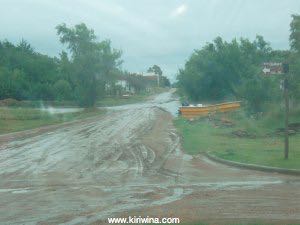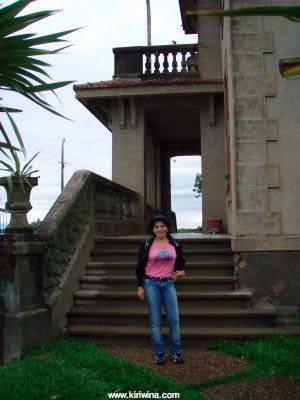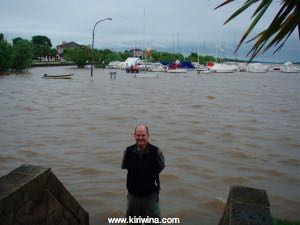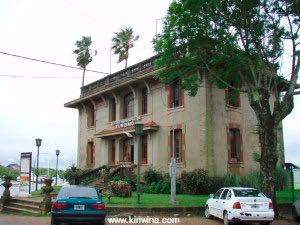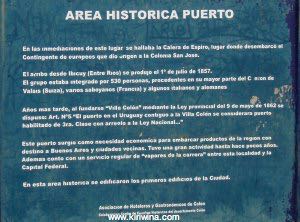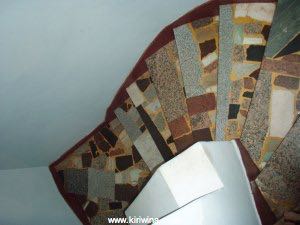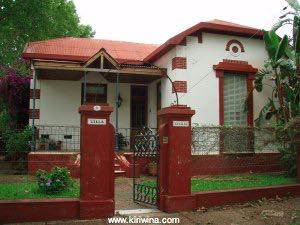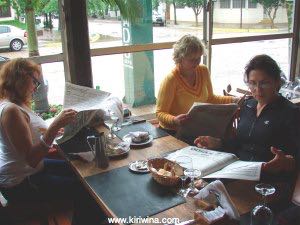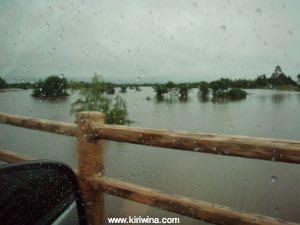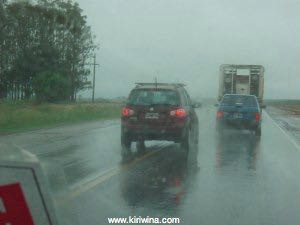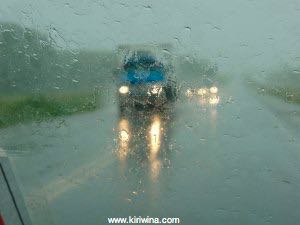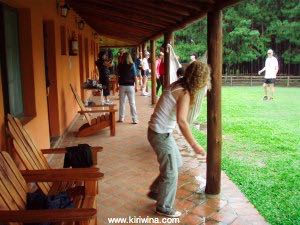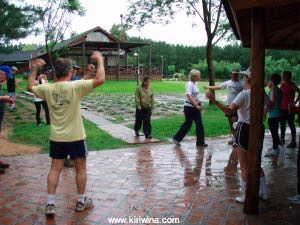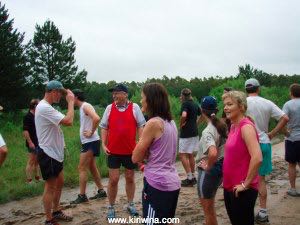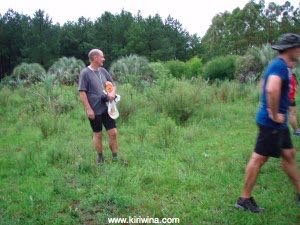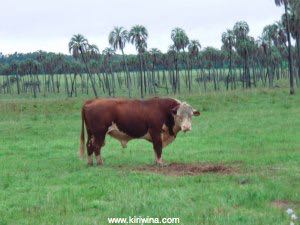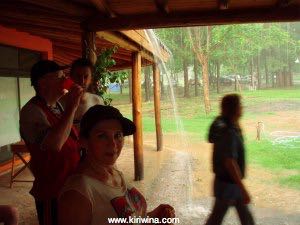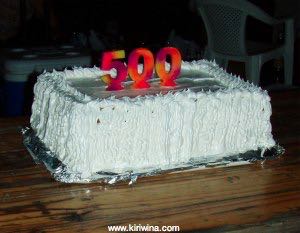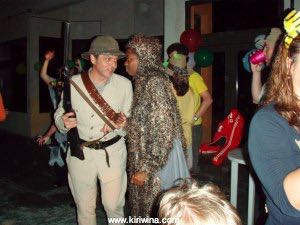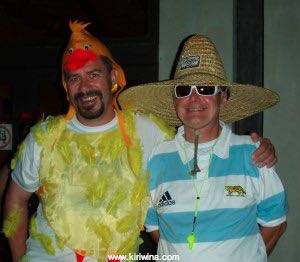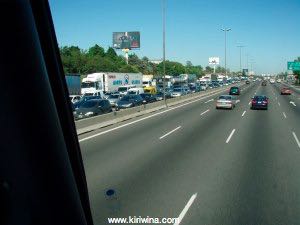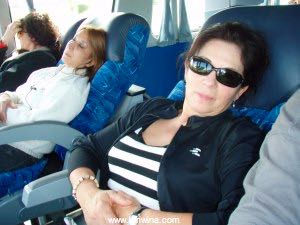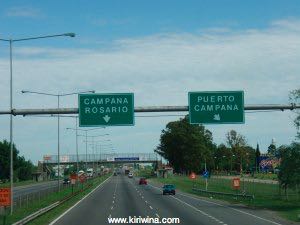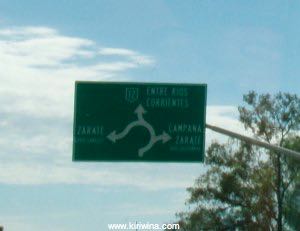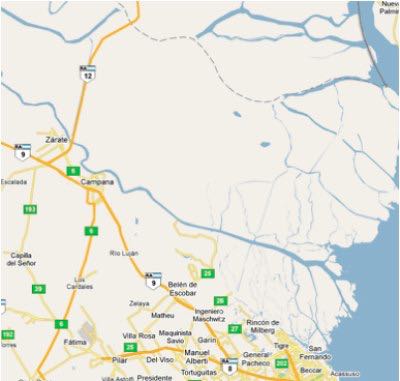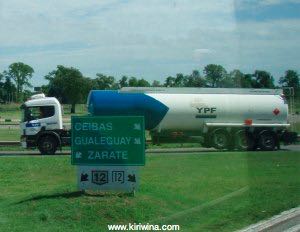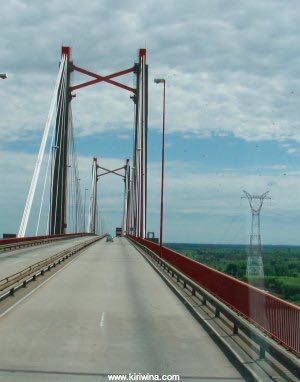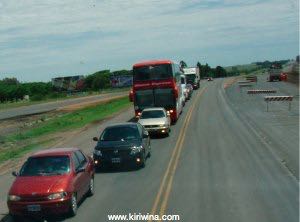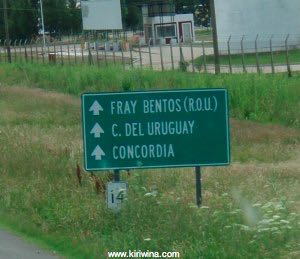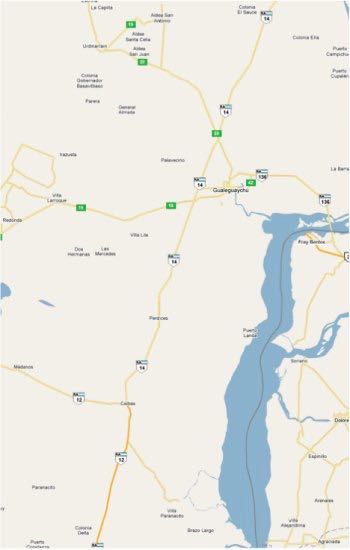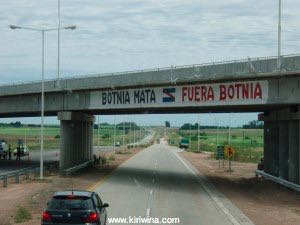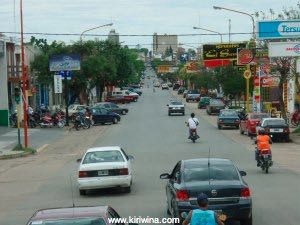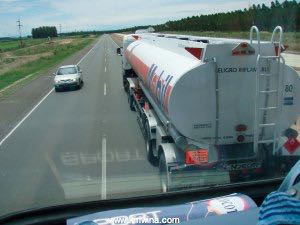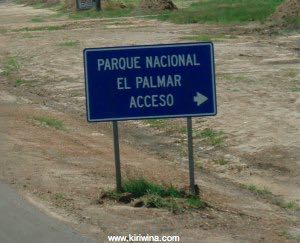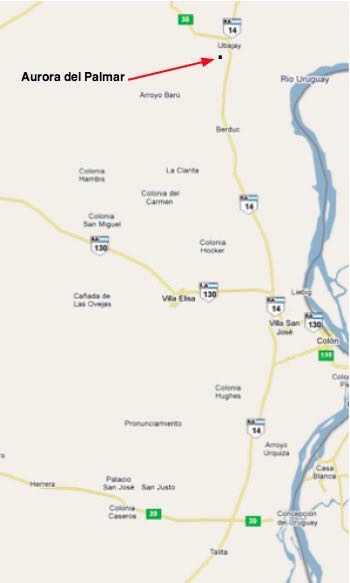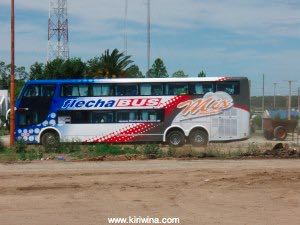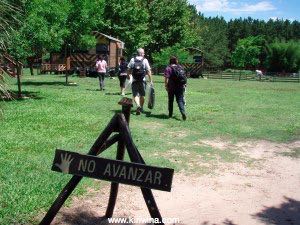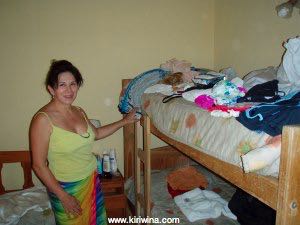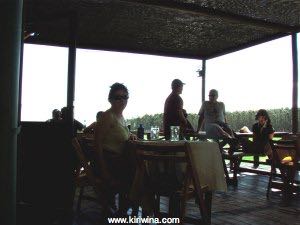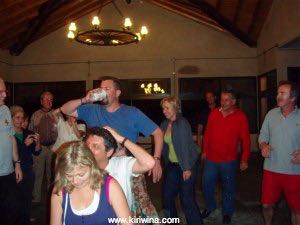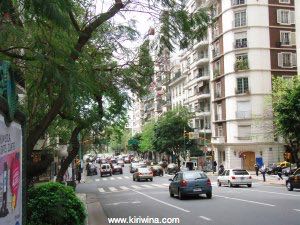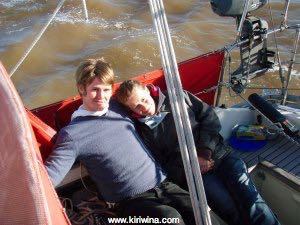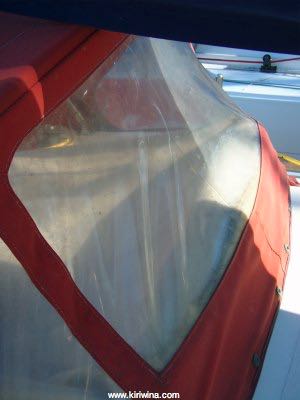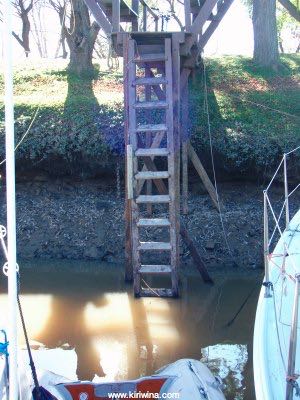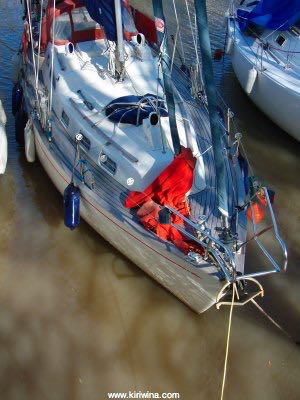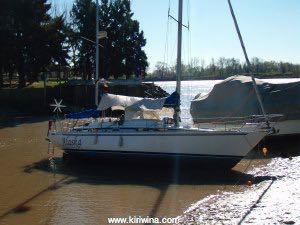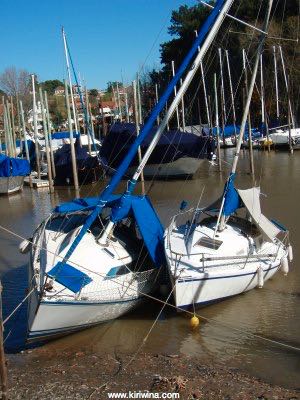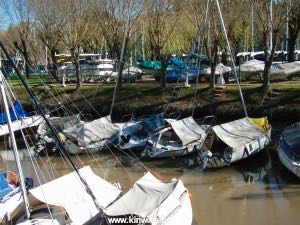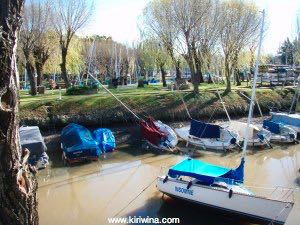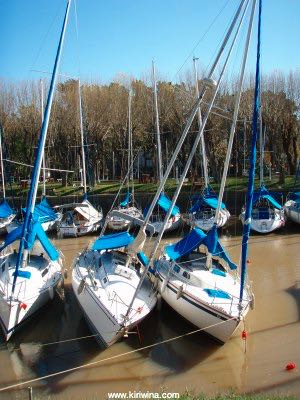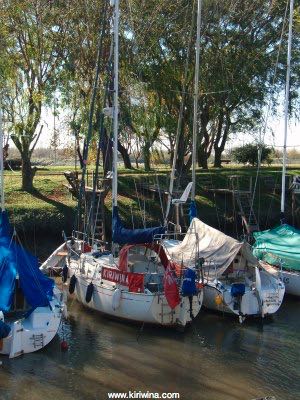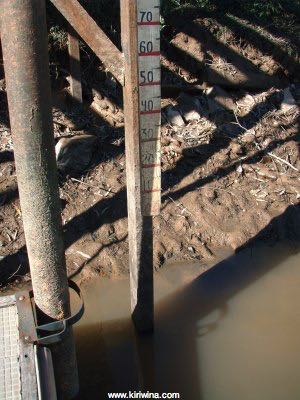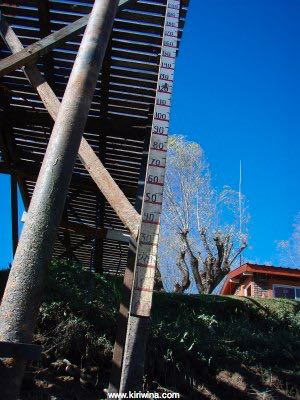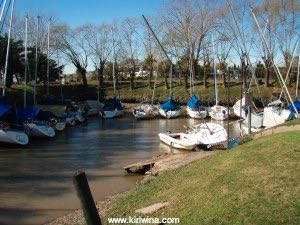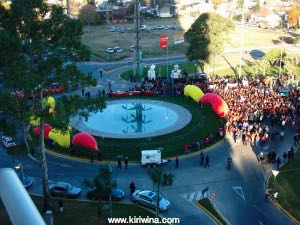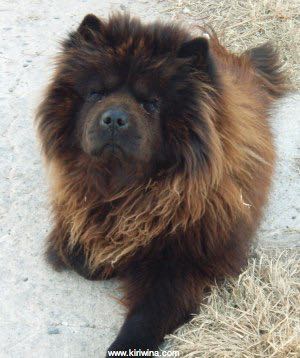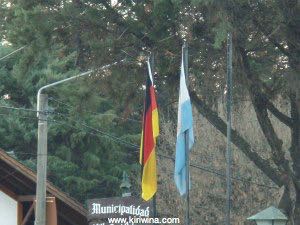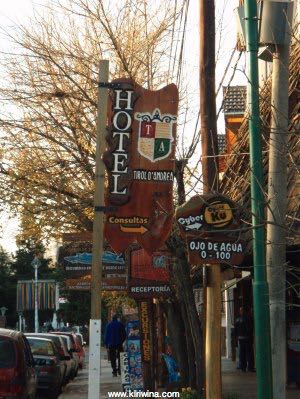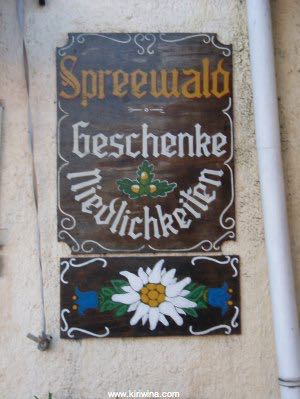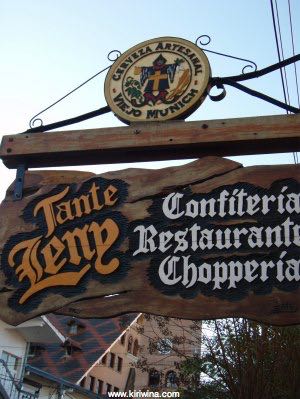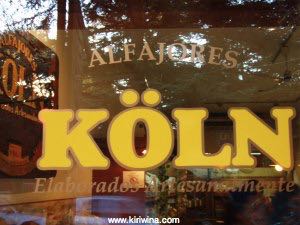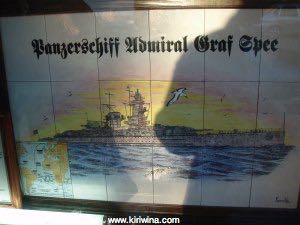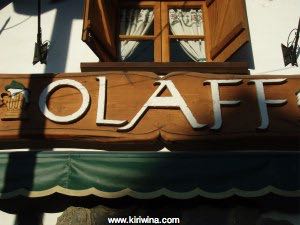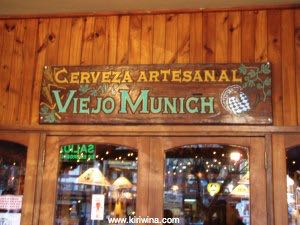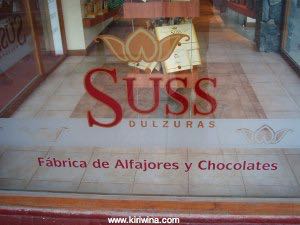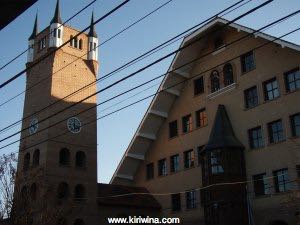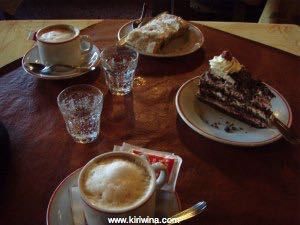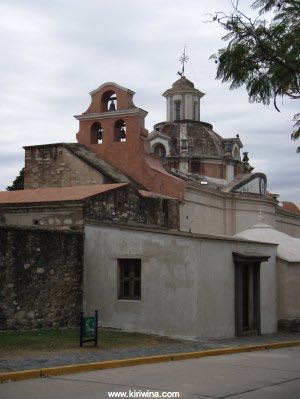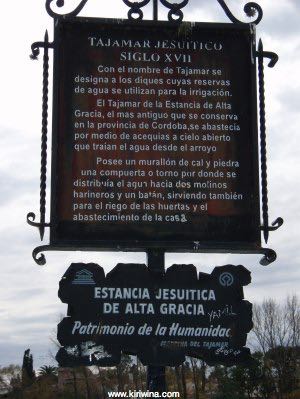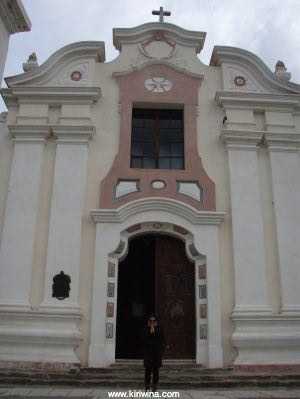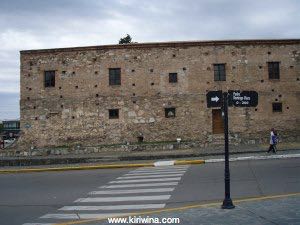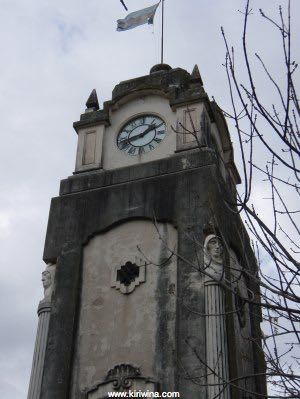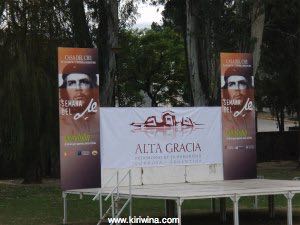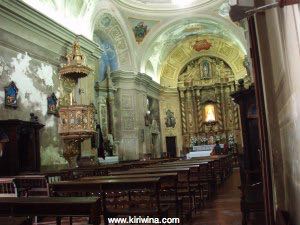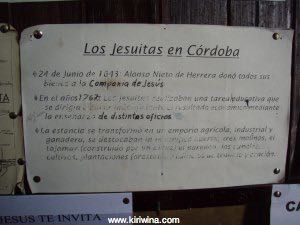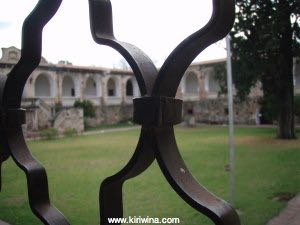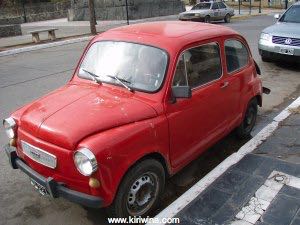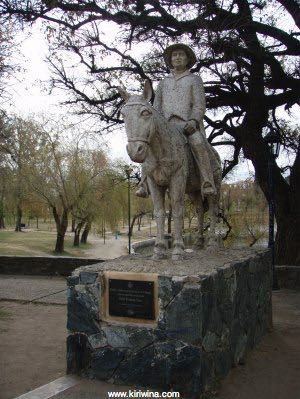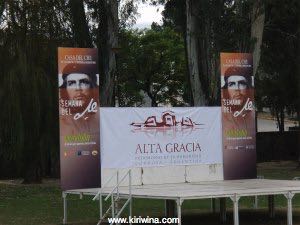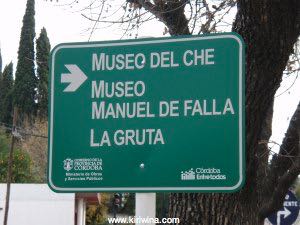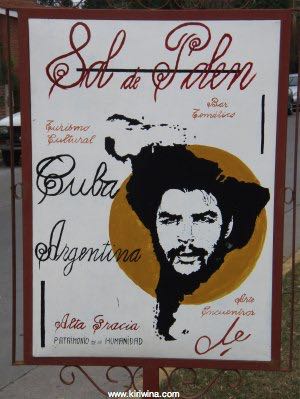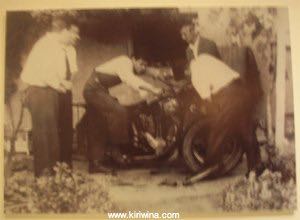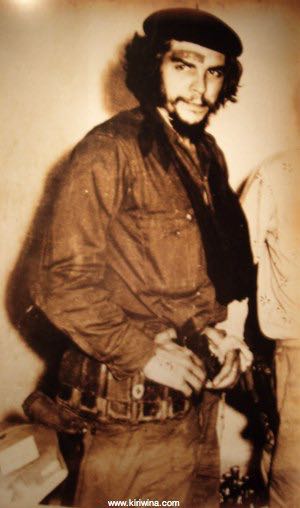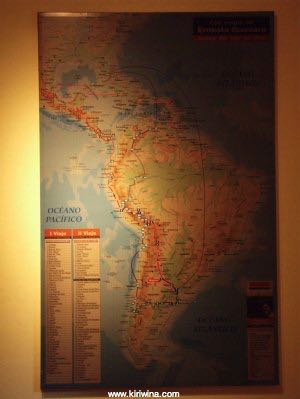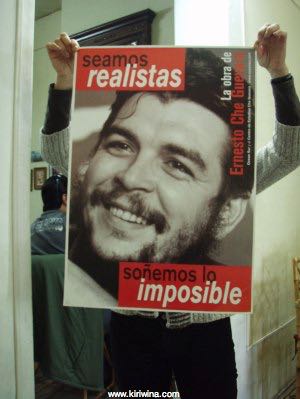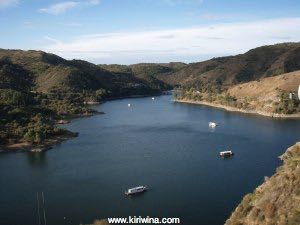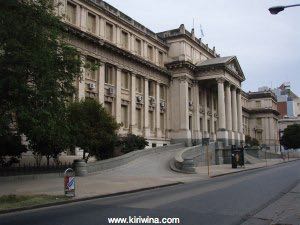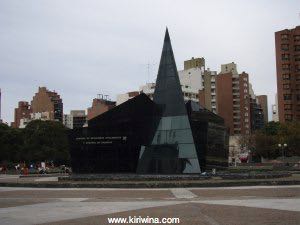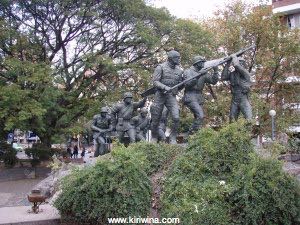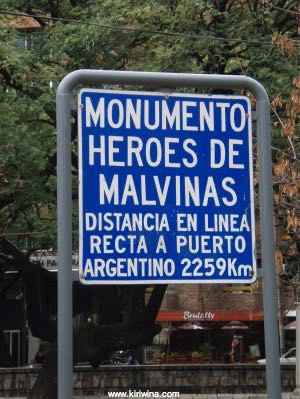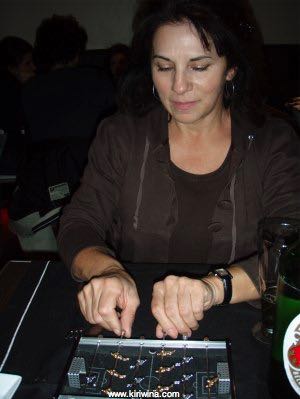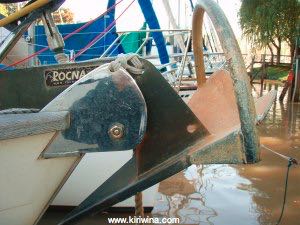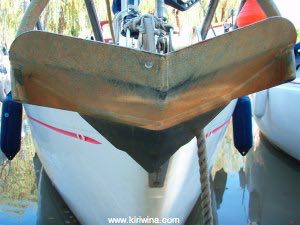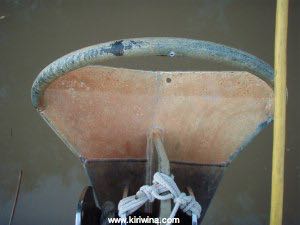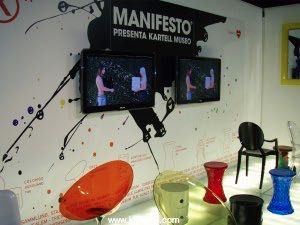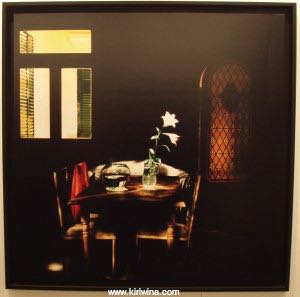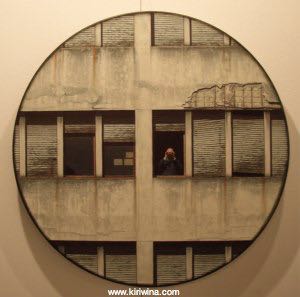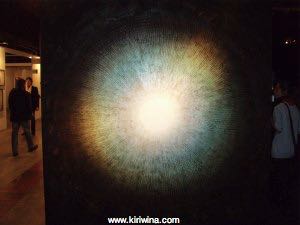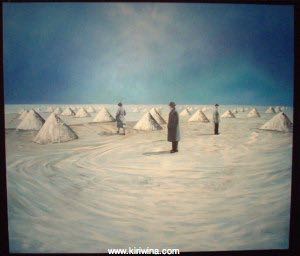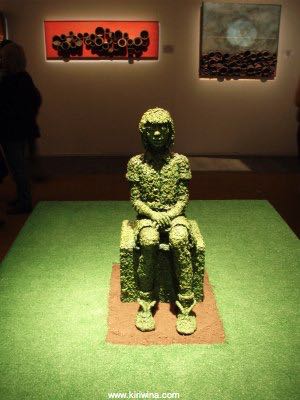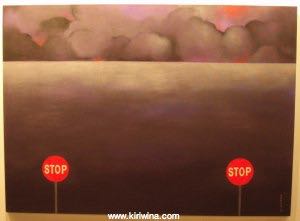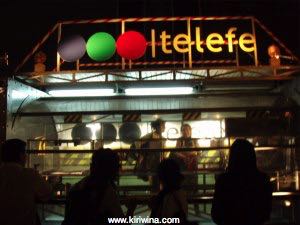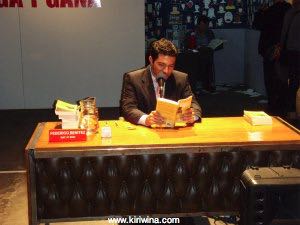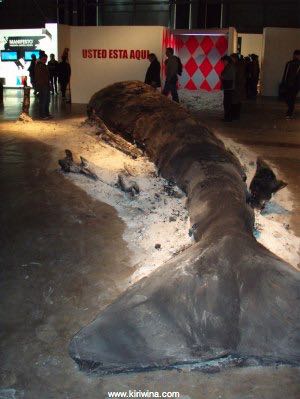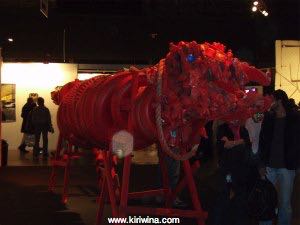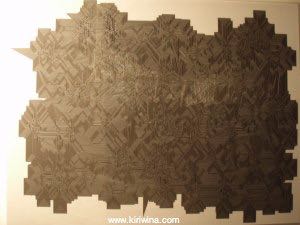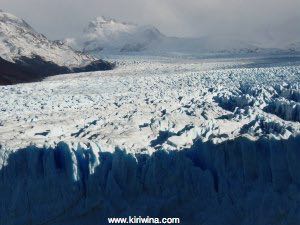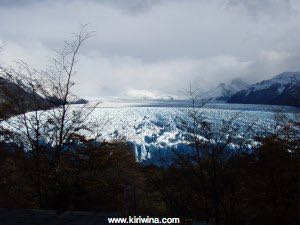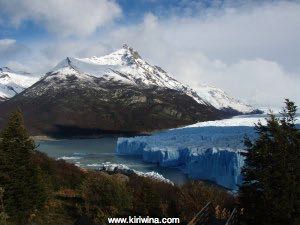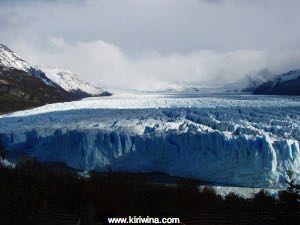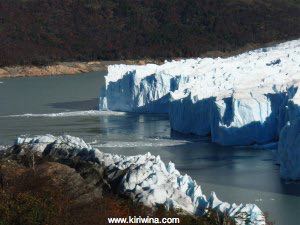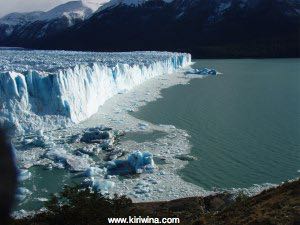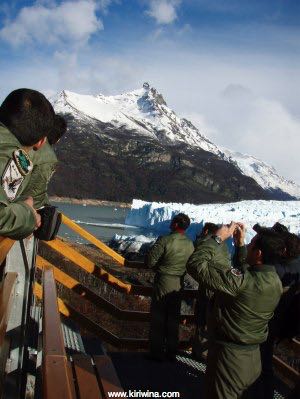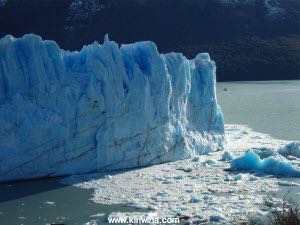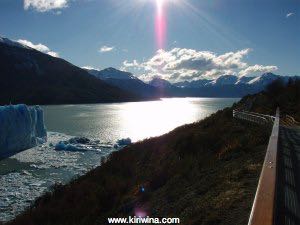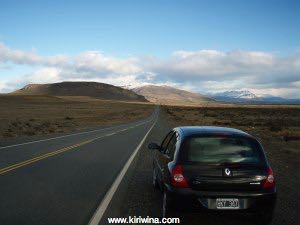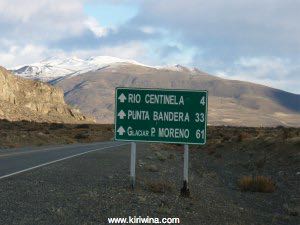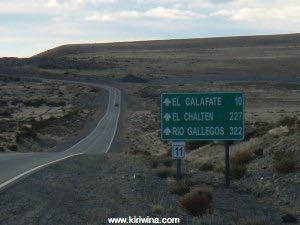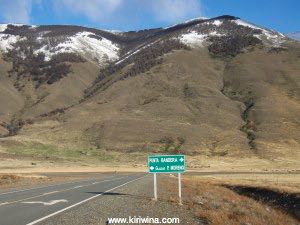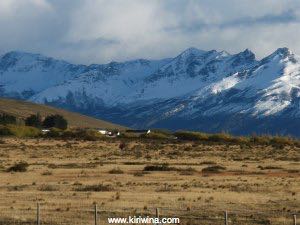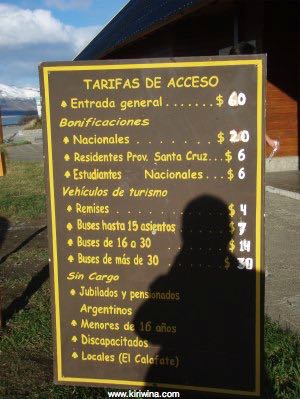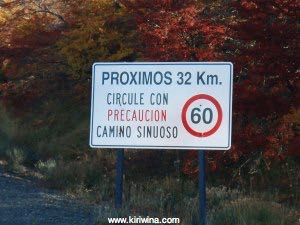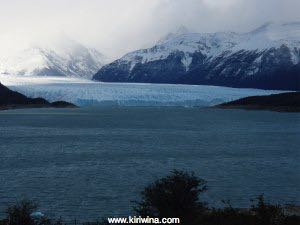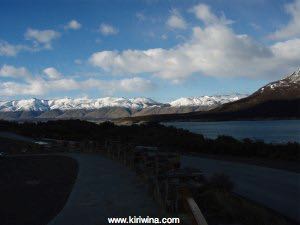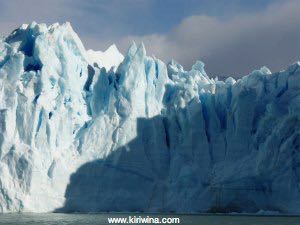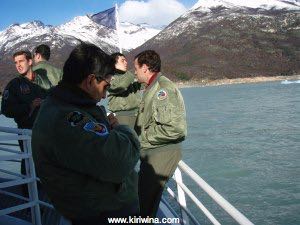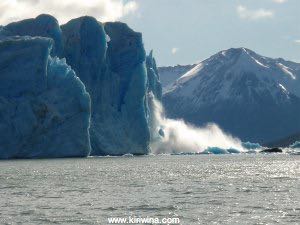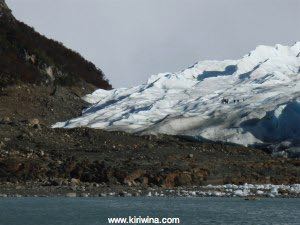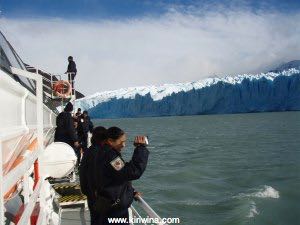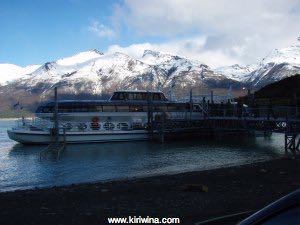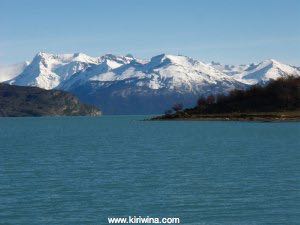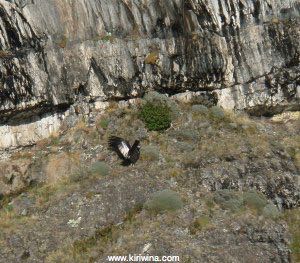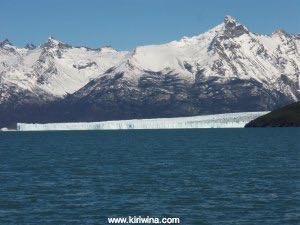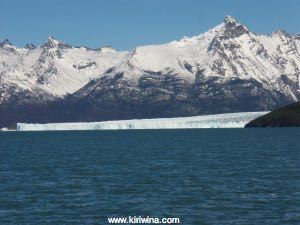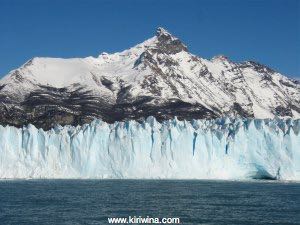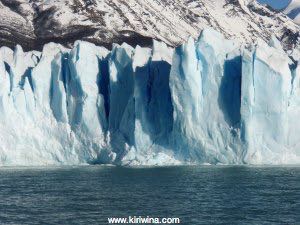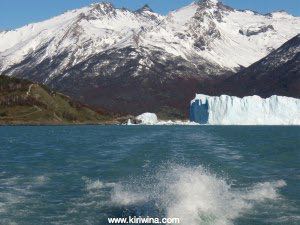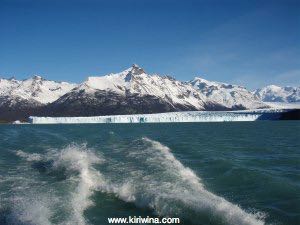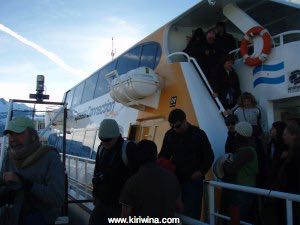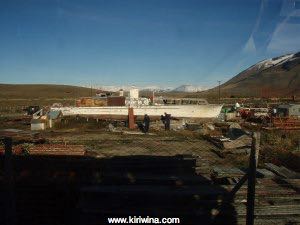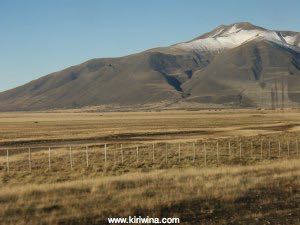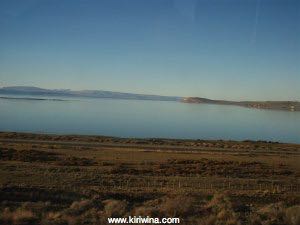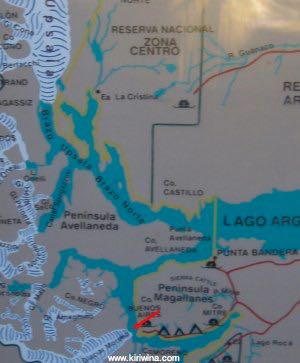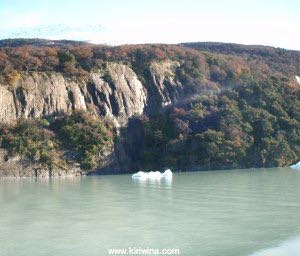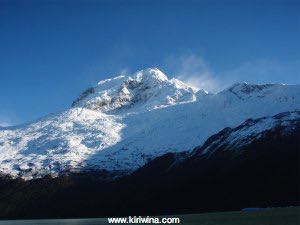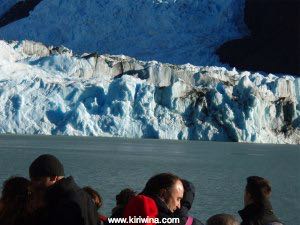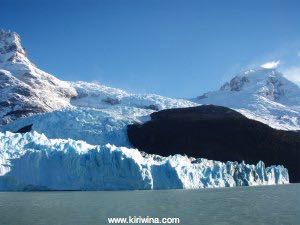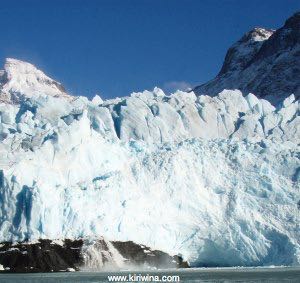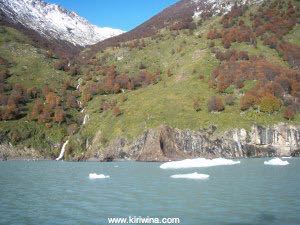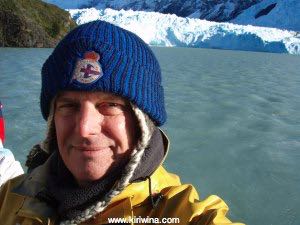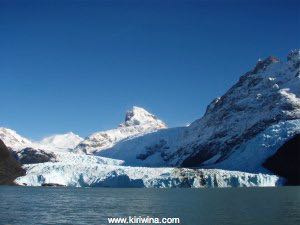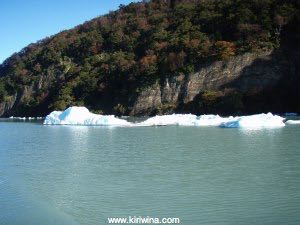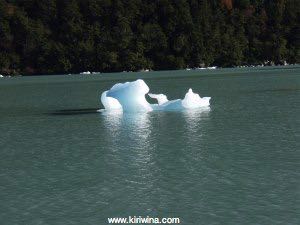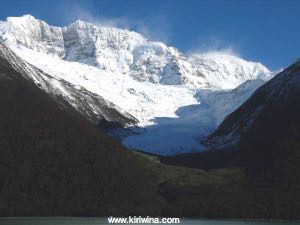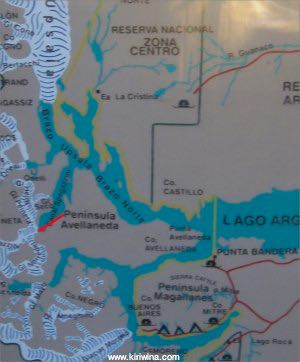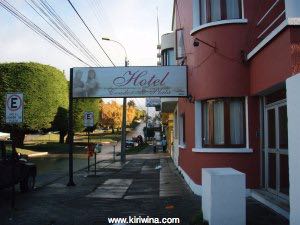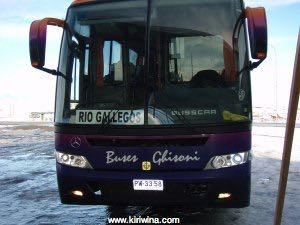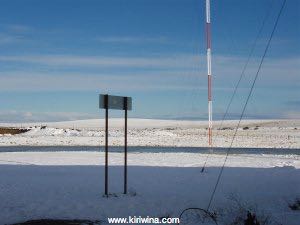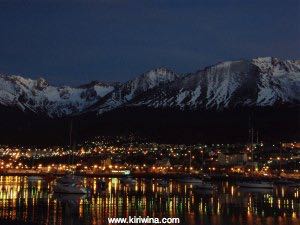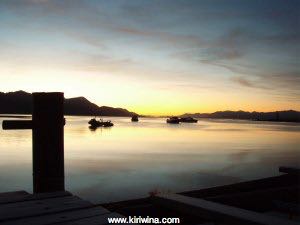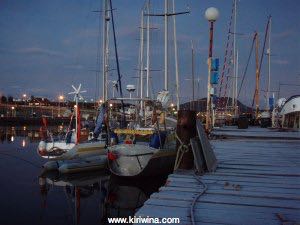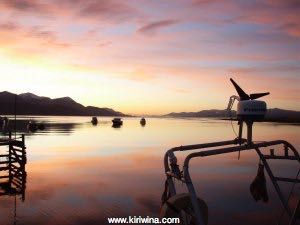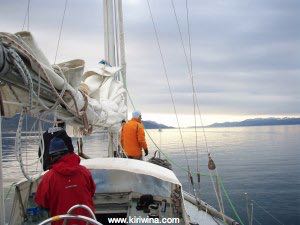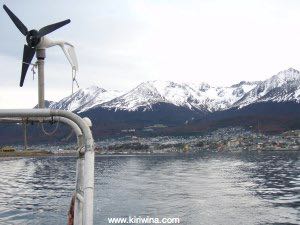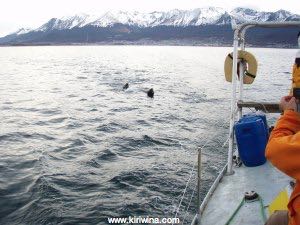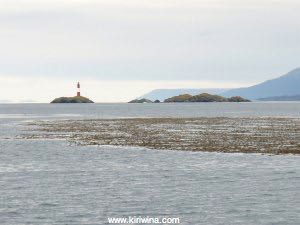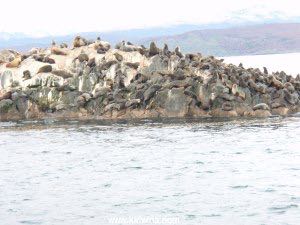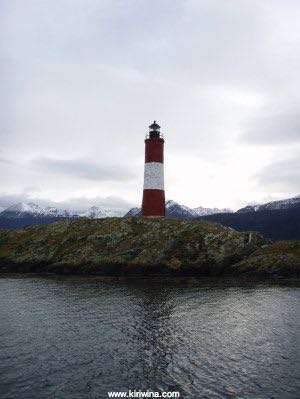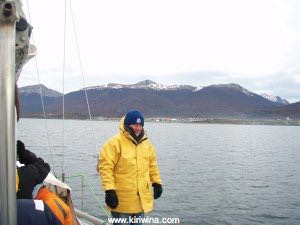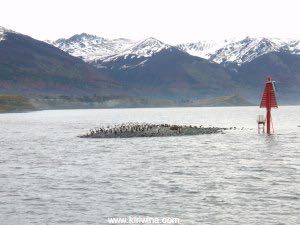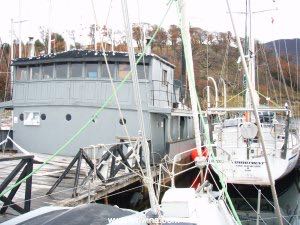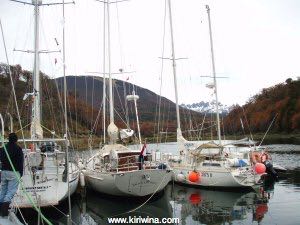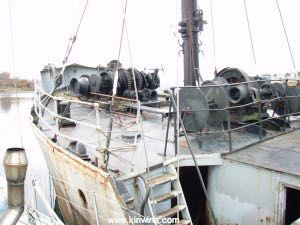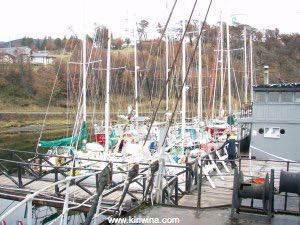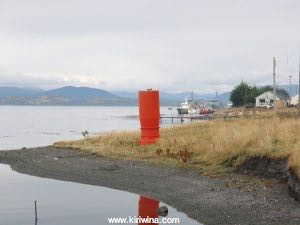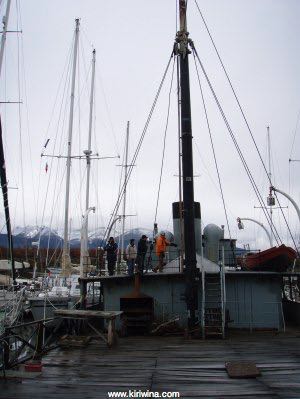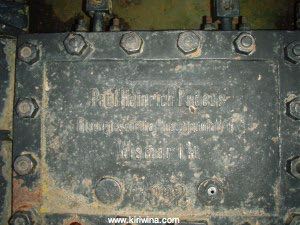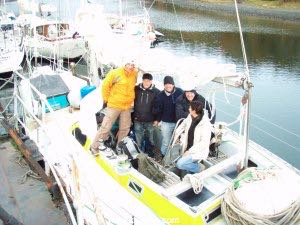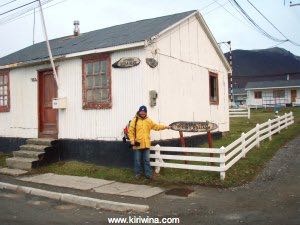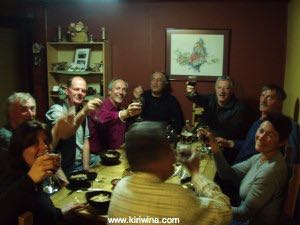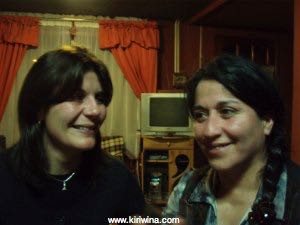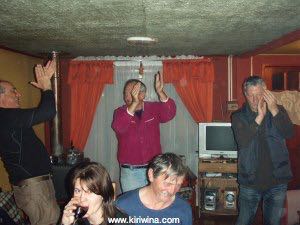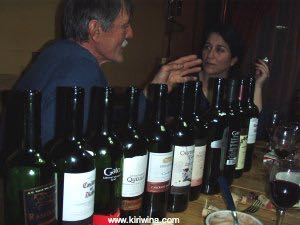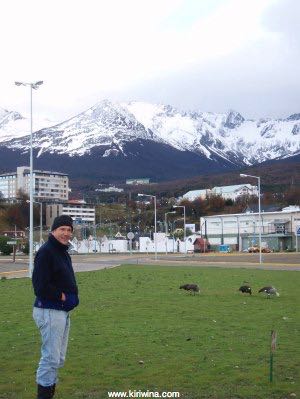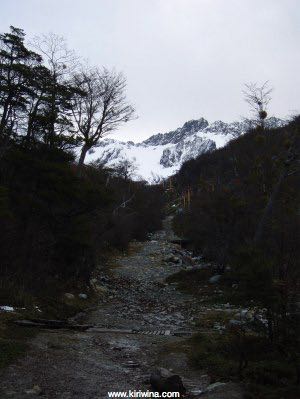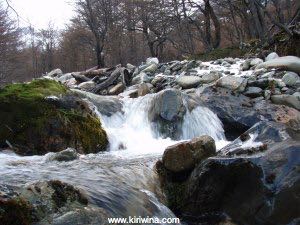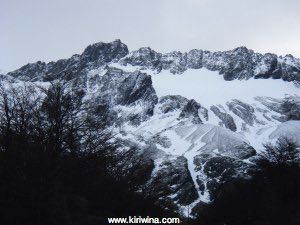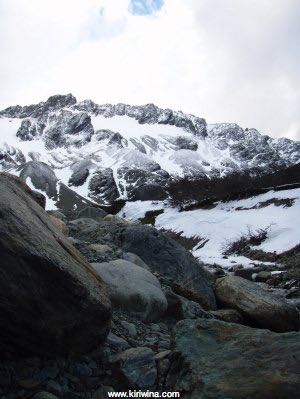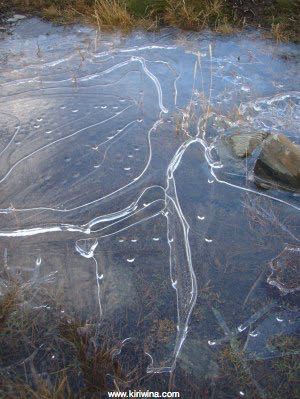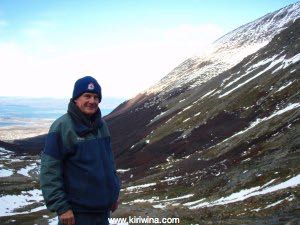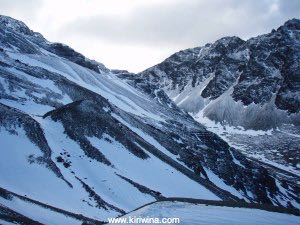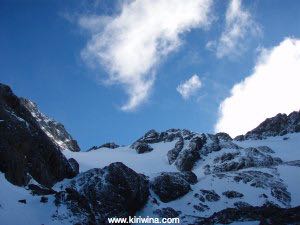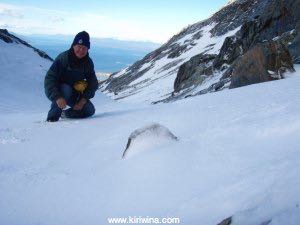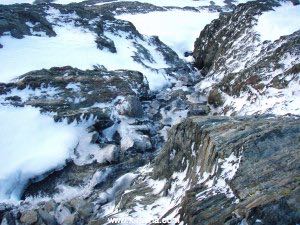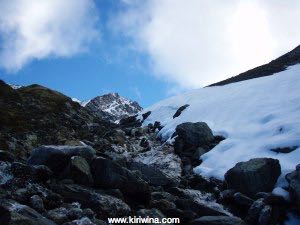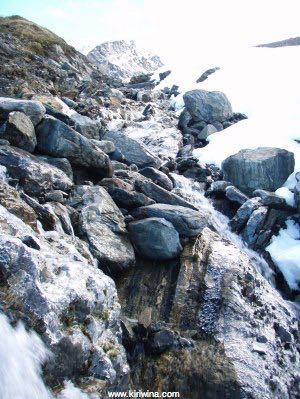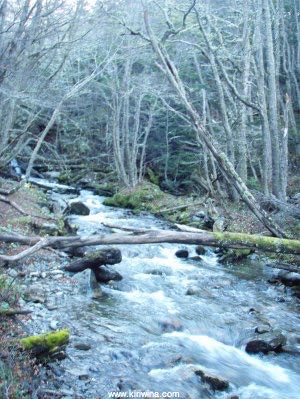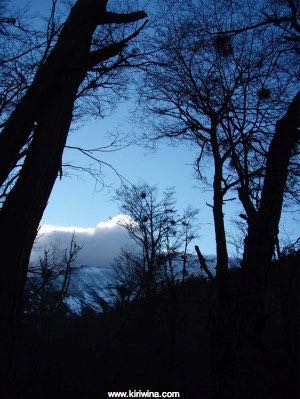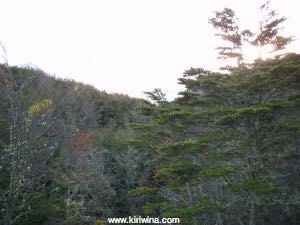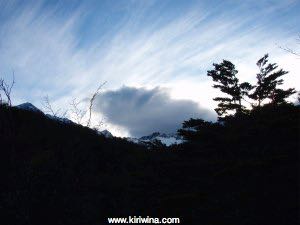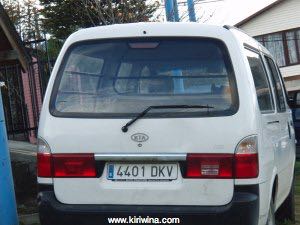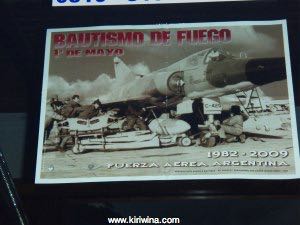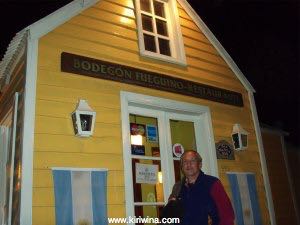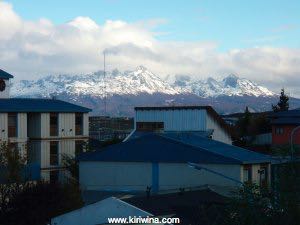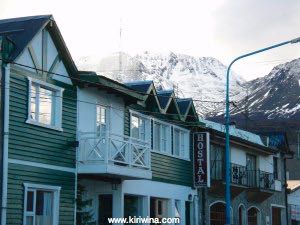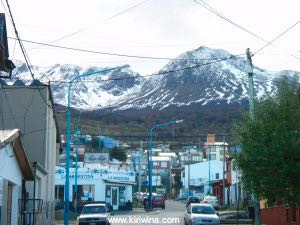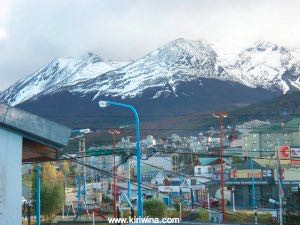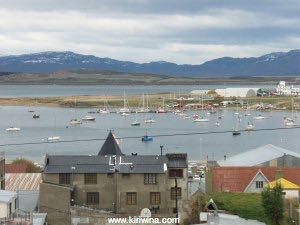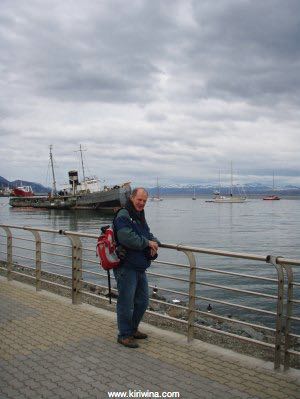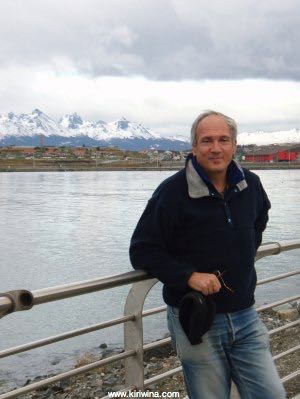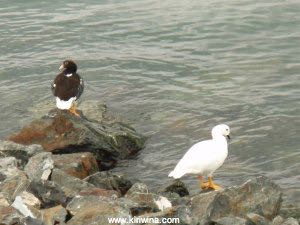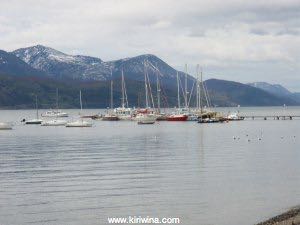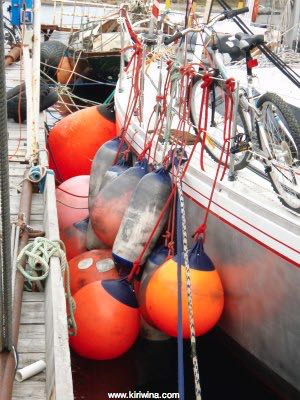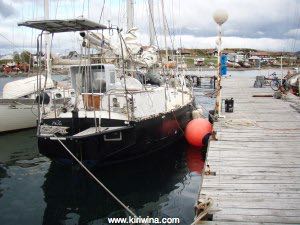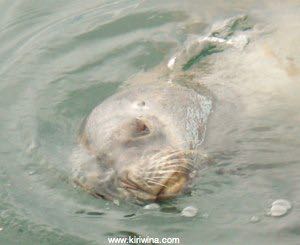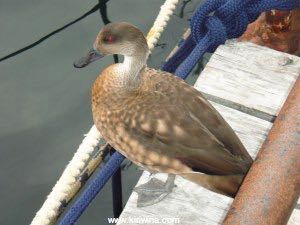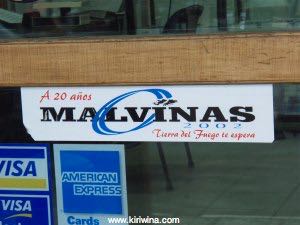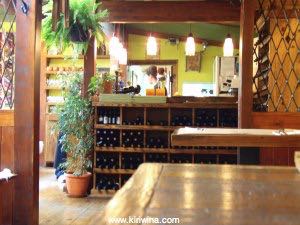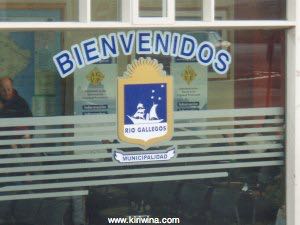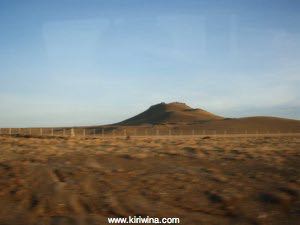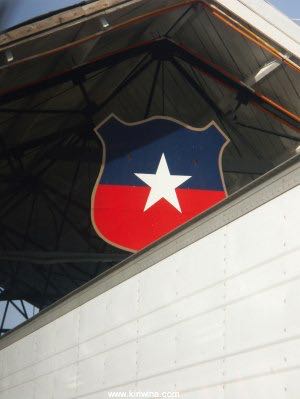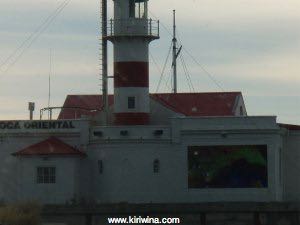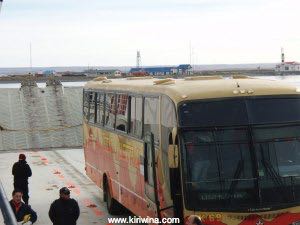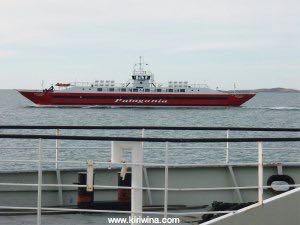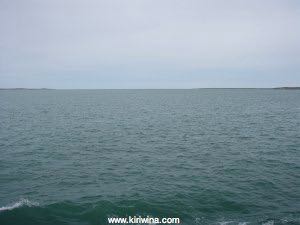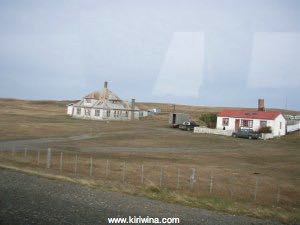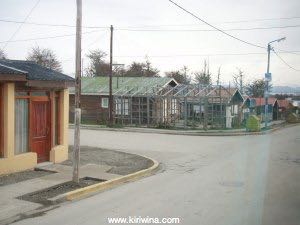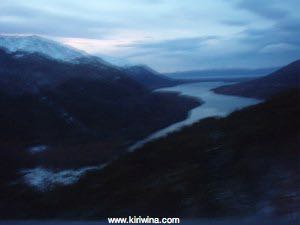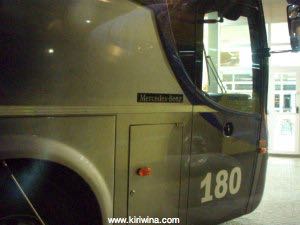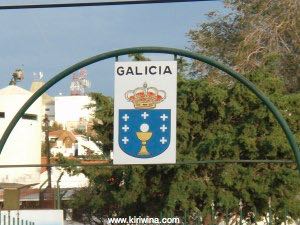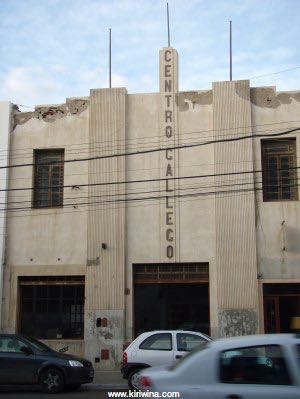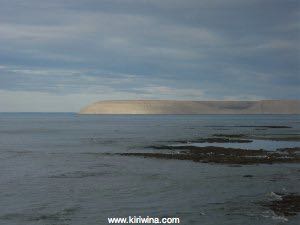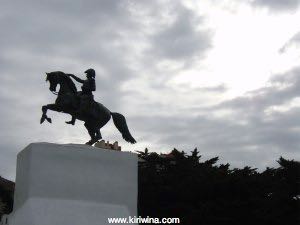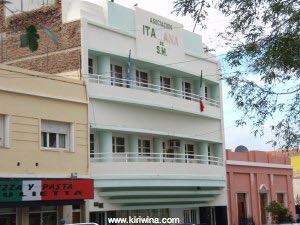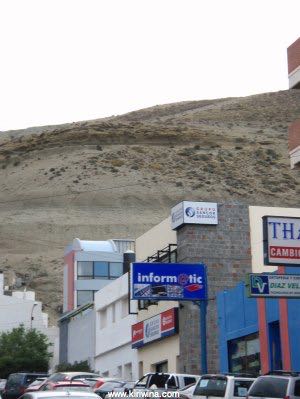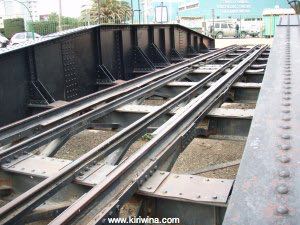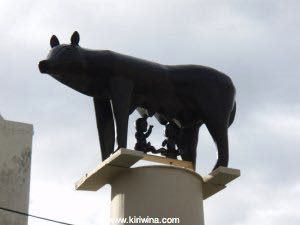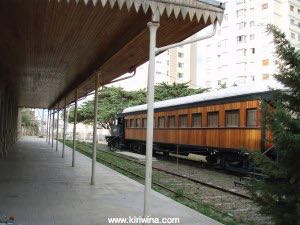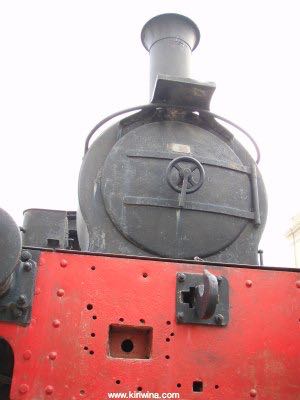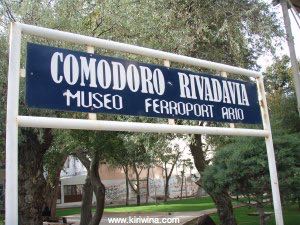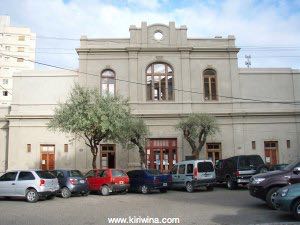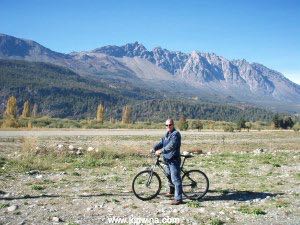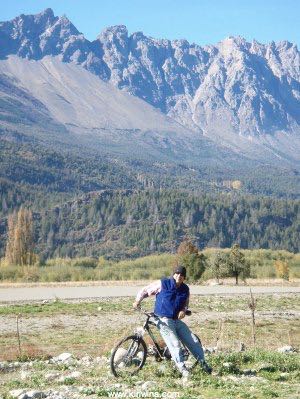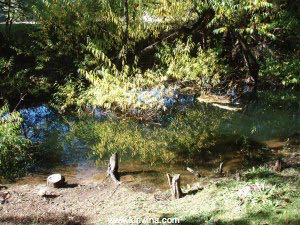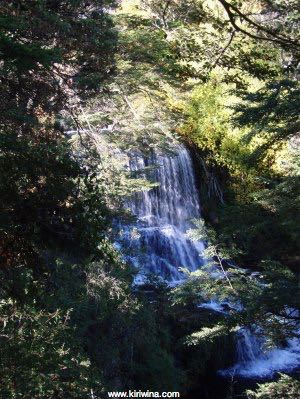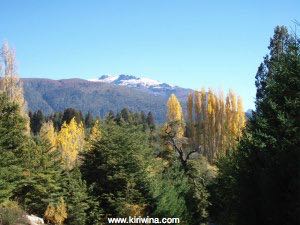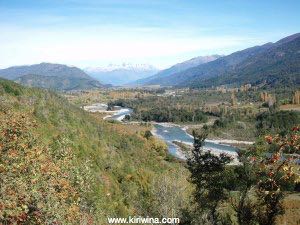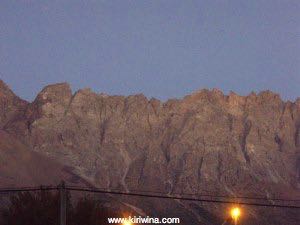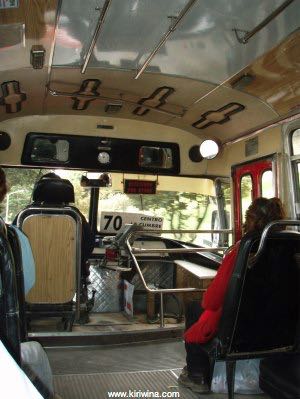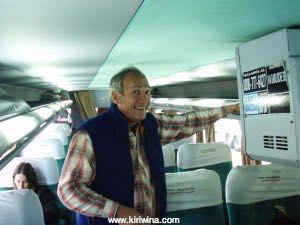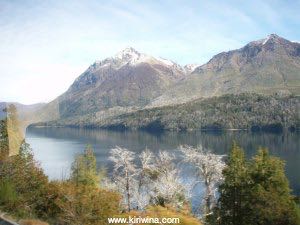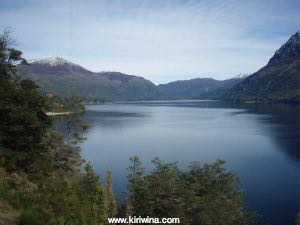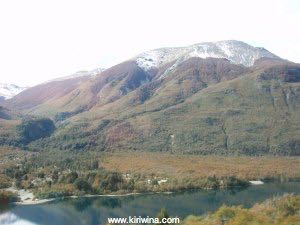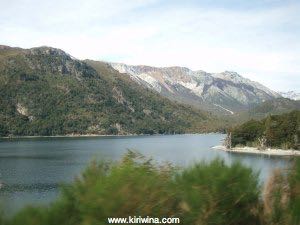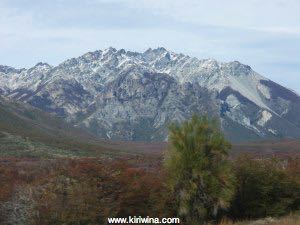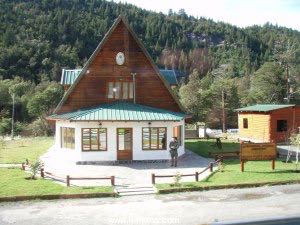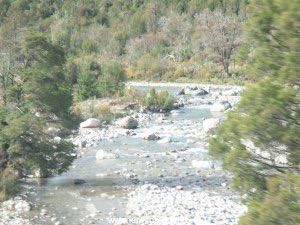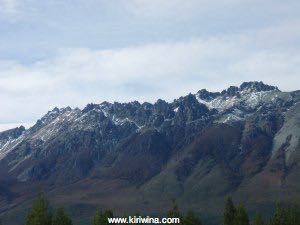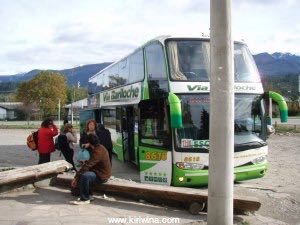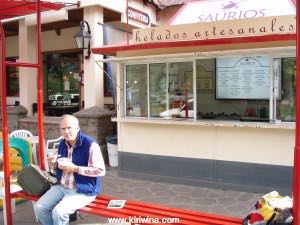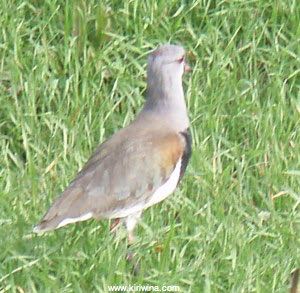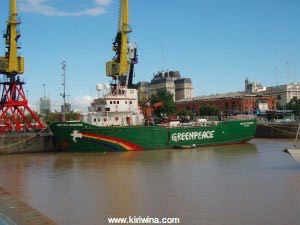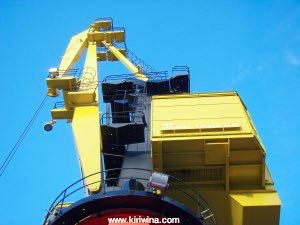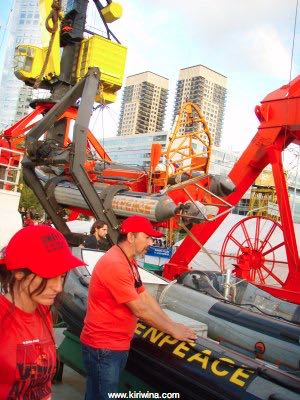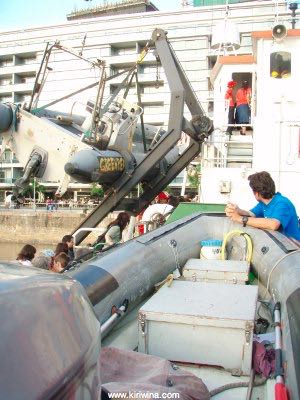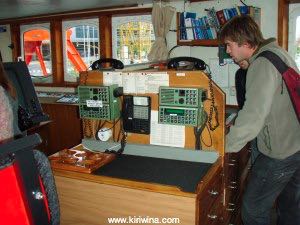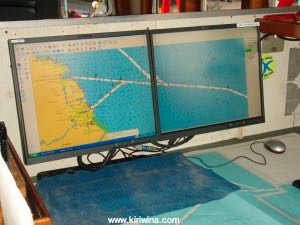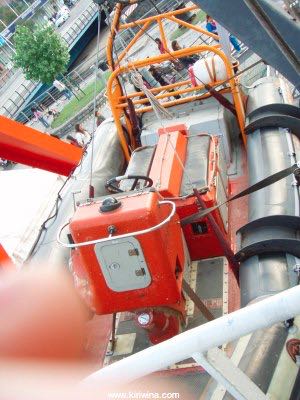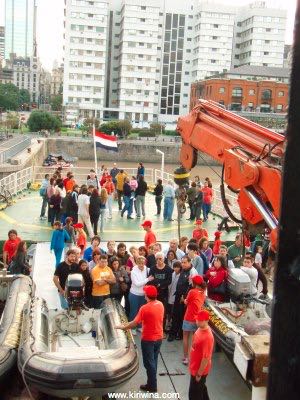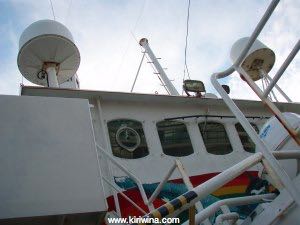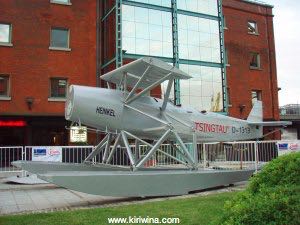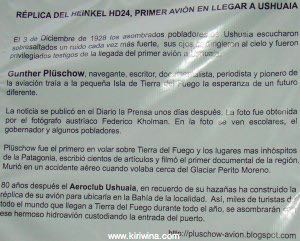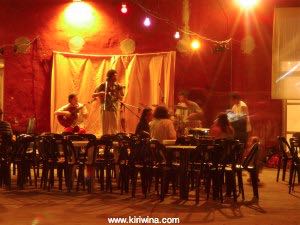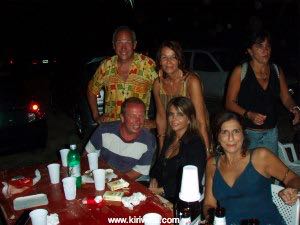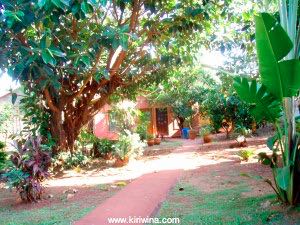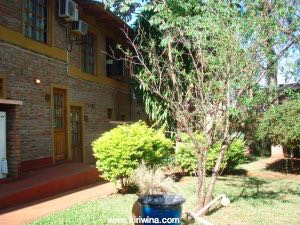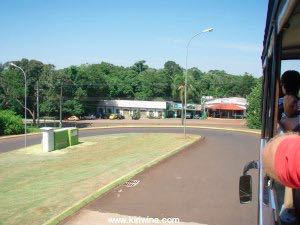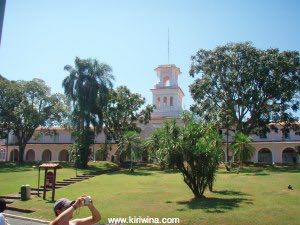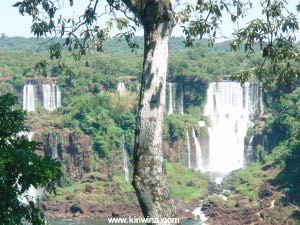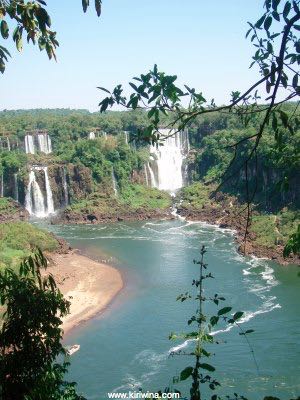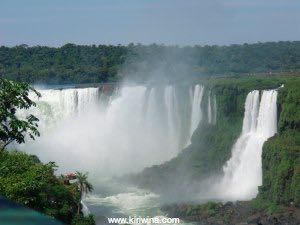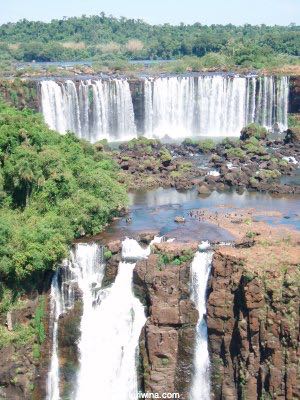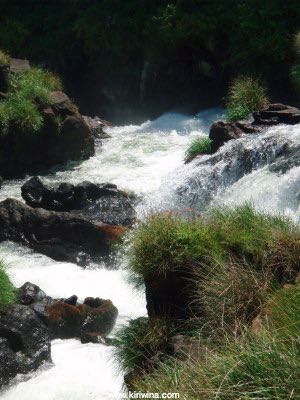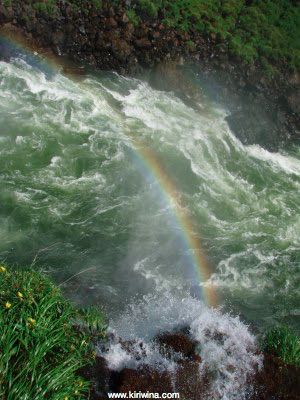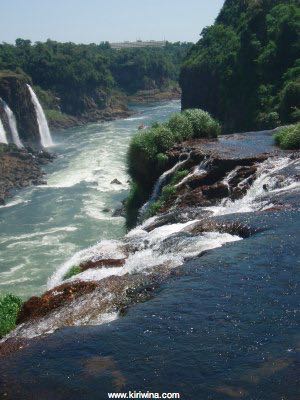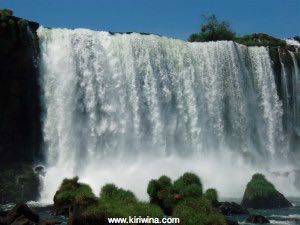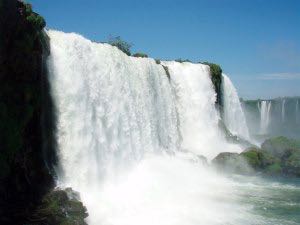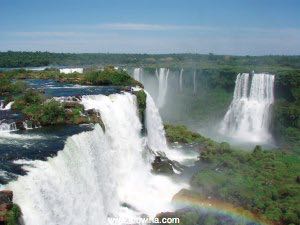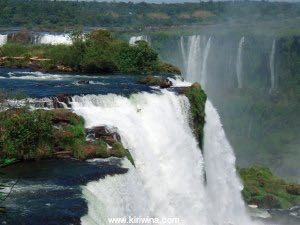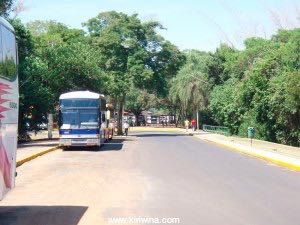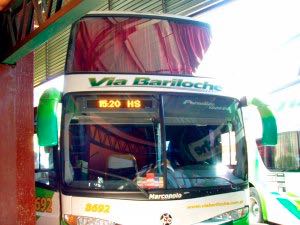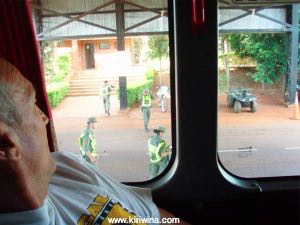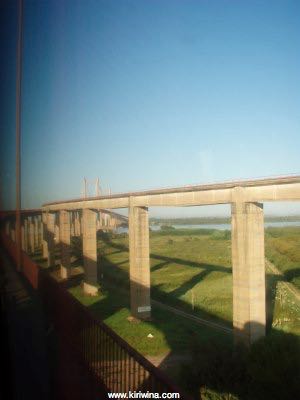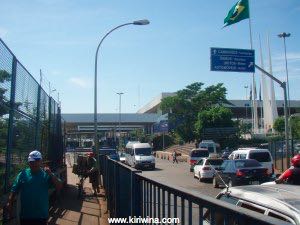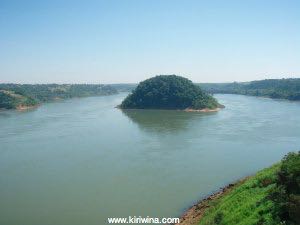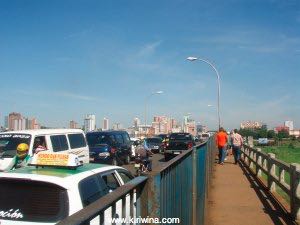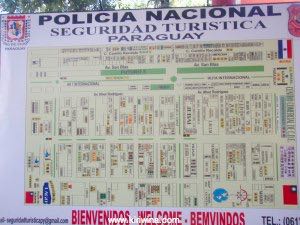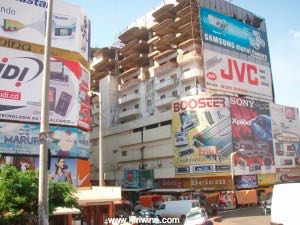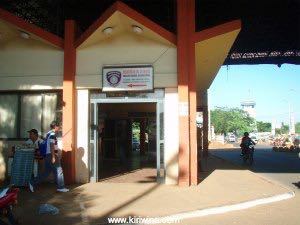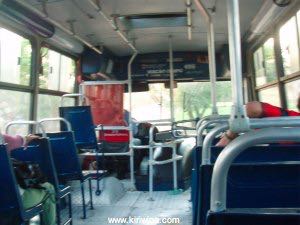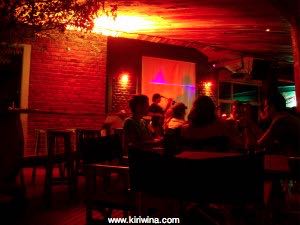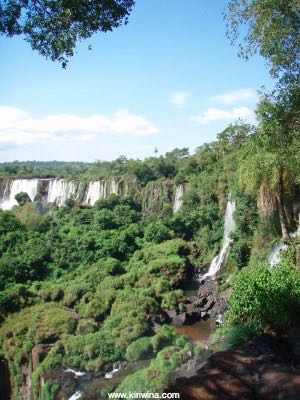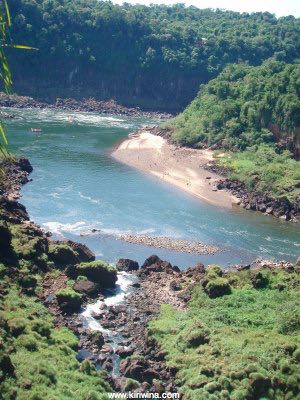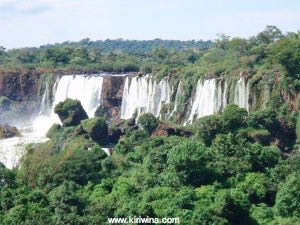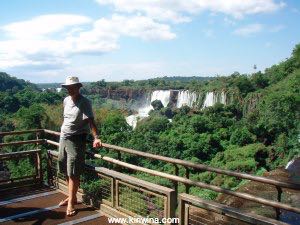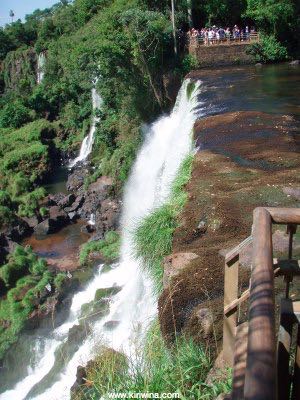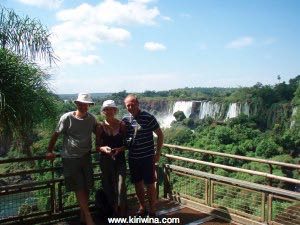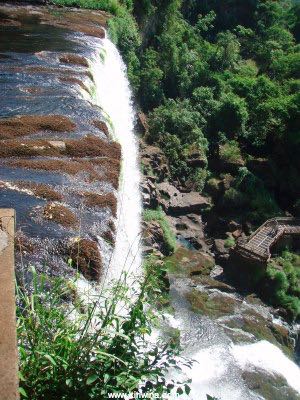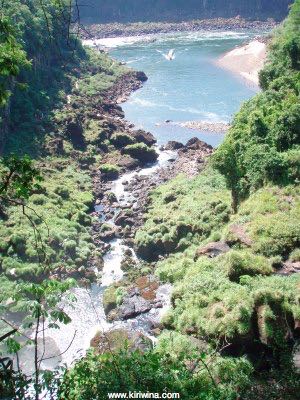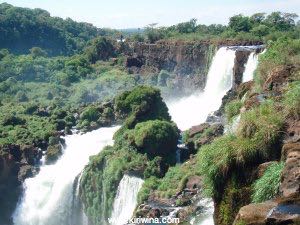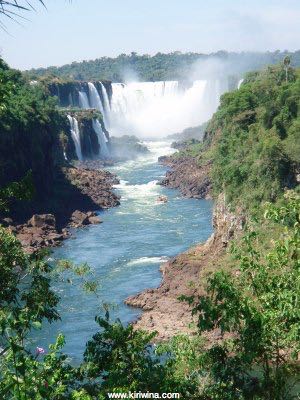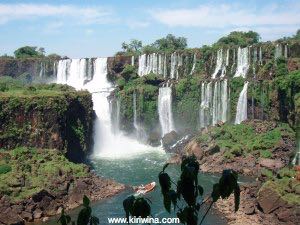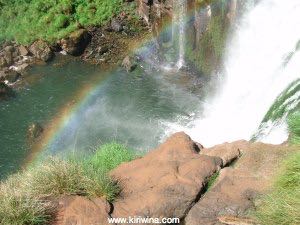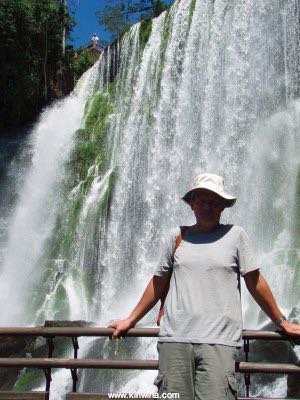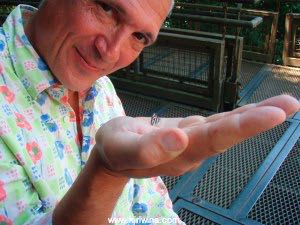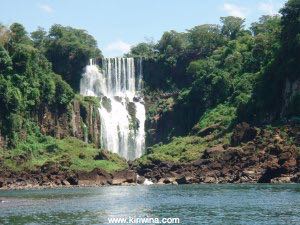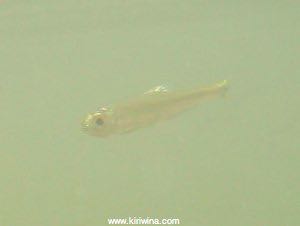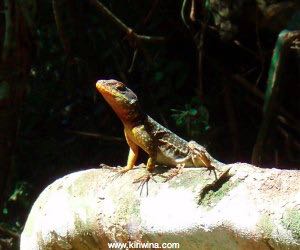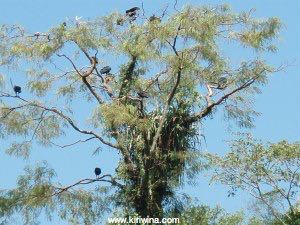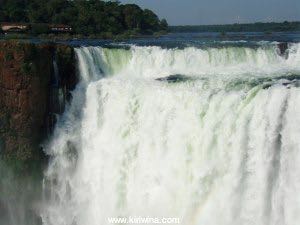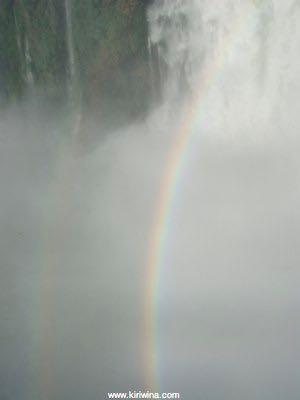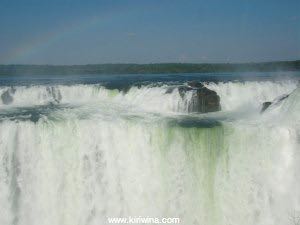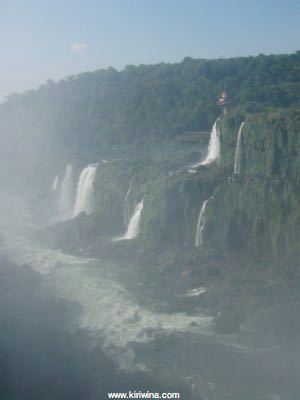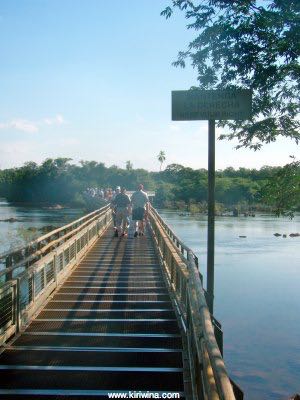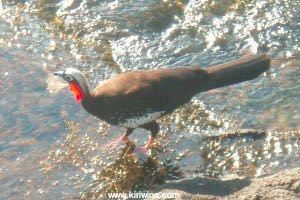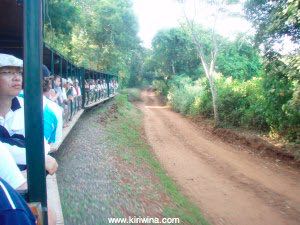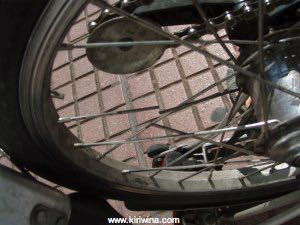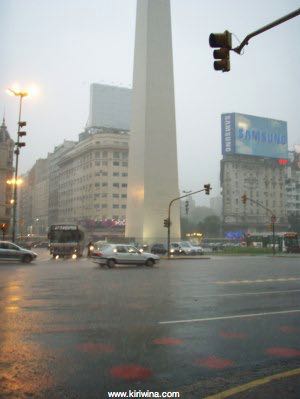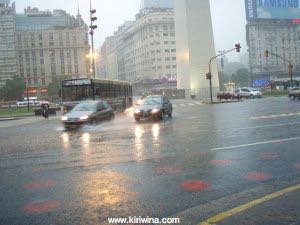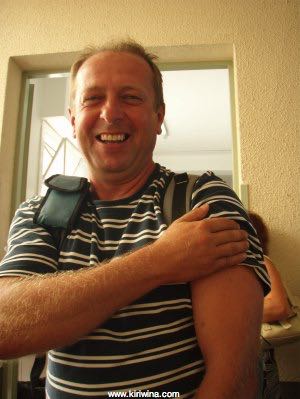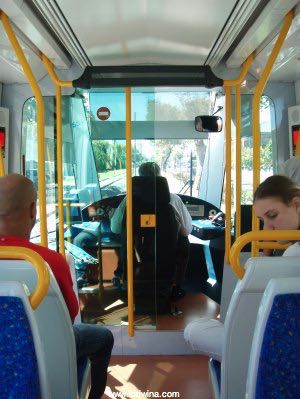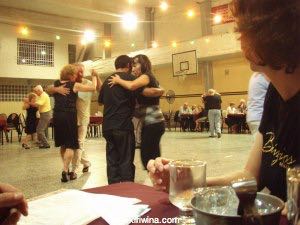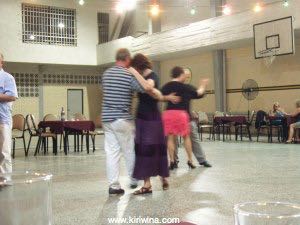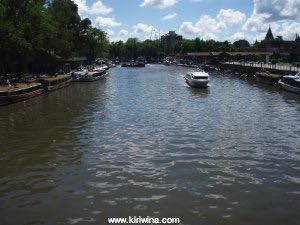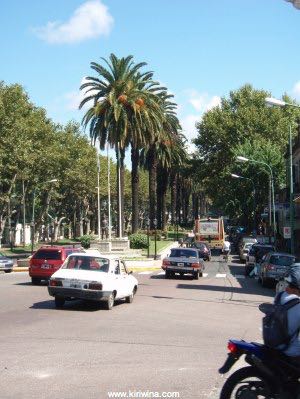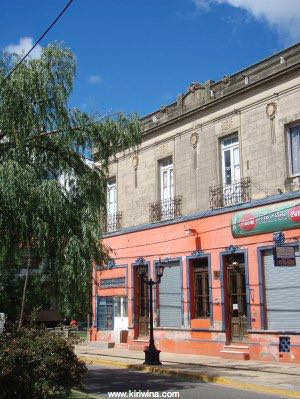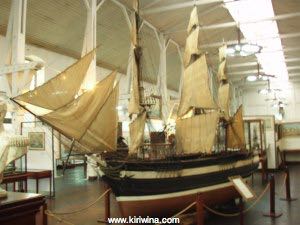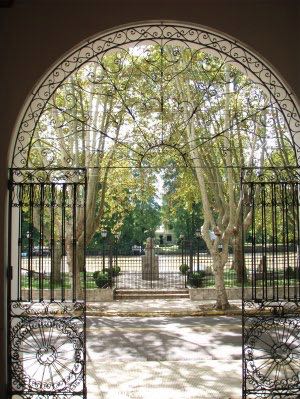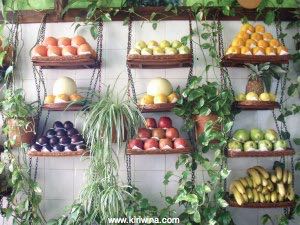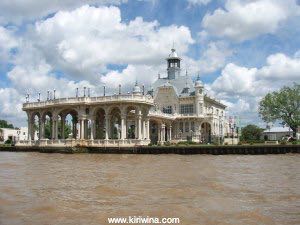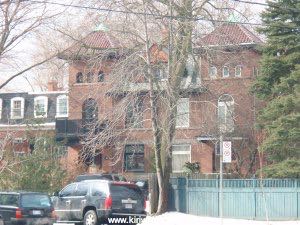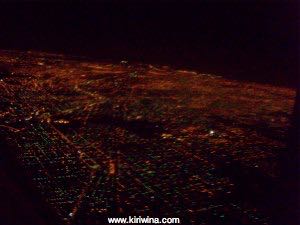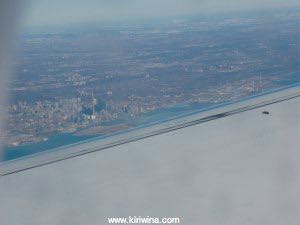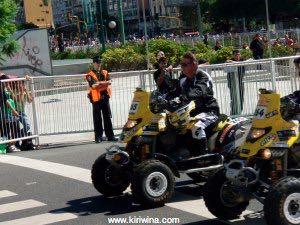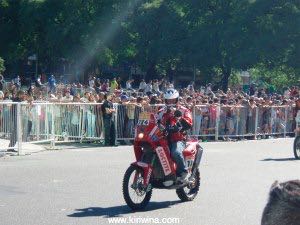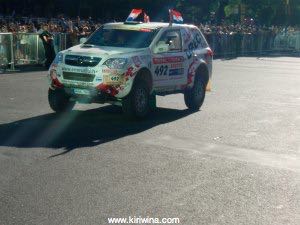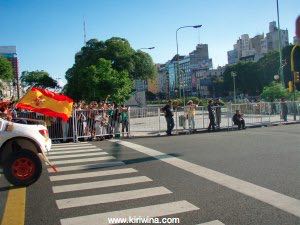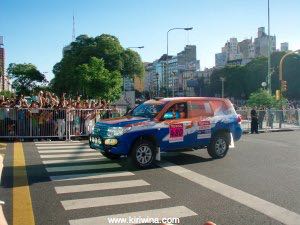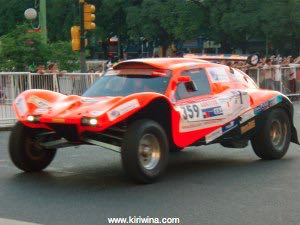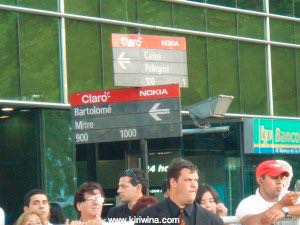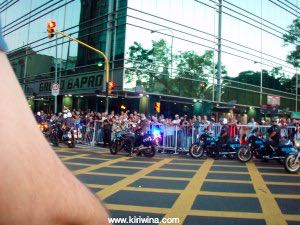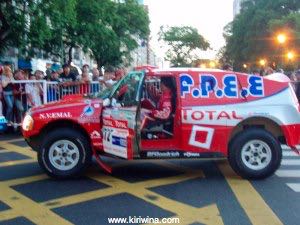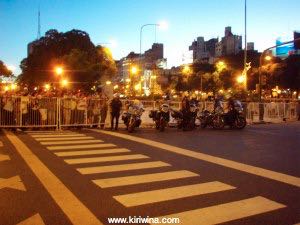Tigre to Carmelo
They operate high speed catamarans and our route took us via Rio Lujan, Canal Vinculacion, Rio Urión, Rio Parana, Canal del Barca Grade, between Islas Lucia and Oyavide into the upper Rio de La Plata and on to Carmelo. Return Cost Arg$157 (£26.50) return.
Moorings along the bank of Arroyo de las Vacas in Carmelo. In another month or so these moorings will be packed with Argentine boats.
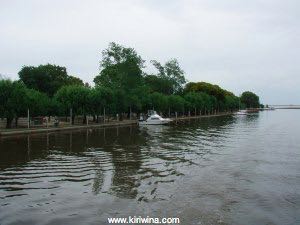
More empty moorings and the Hydrografica office.
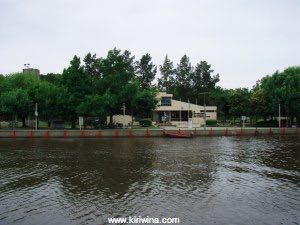
Mooring is normally bow anchor down and stern to quay.
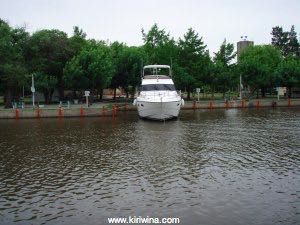
Bridge deck on our Cacciola catamaran.
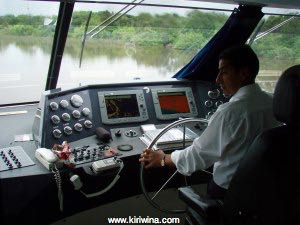
Nancy on Avenida Wilson Ferreira near the ferry terminal.
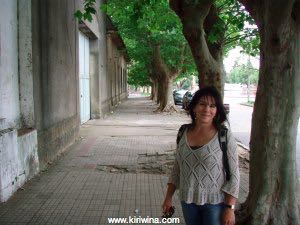
Pedestrian route along Arroyo de las Vacas.
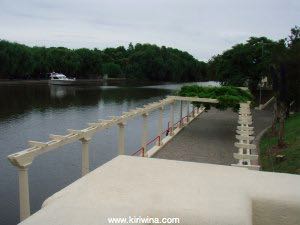
Interesting houses along the road to Playa Seré on the south side of Arroyo de las Vacas.
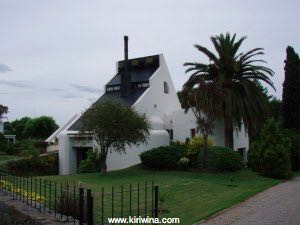
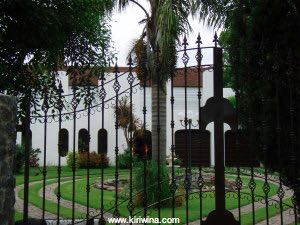
The skipper near Reserva de Fauna (didn't see any) on the road to Playa Seré.
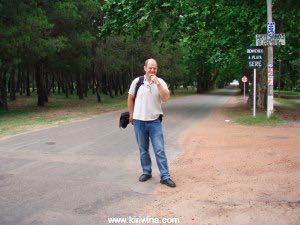
Playa Seré
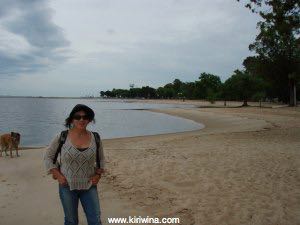
Entance to Carmelo harbour from Rio de la Plata.
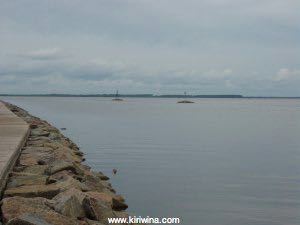
Welcome to Carmelo.
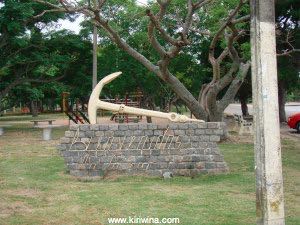
Lunchtime refreshment. This is not locally controlled company. It is owned by the mega conglomerate ABInbev.
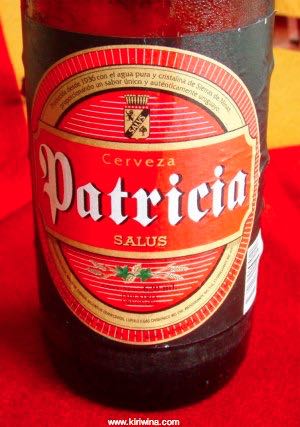
Playa Seré with Rio de la Plata beyond.
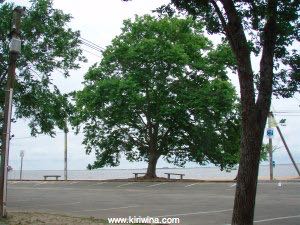
Hidrografia facilities adjacent to the yacht moorings.
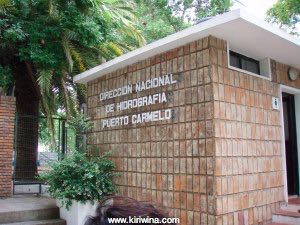
The first rotating bridge in Uruguay. Built in Germany and erected here in 1912.

We didn't see it open but this photo shows the bridge open to allow river traffic.
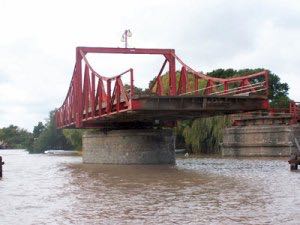
An old steam crane built by Grafton and Co of Bedford.
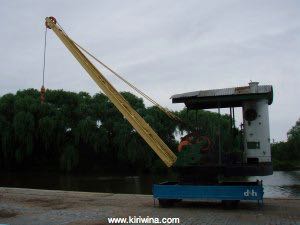
While looking around for some information about this company I found an interesting article on NZR Cranes.org. It is worth quoting.
Grafton & Co (Bedford)
Alexander Grafton (1845-1807) was articled in Paris before joining Appleby Bros. in 1867. He remained with the firm until 1879 during which time he spent 4 years in Egypt in charge of their work with the Sudan Railway and other contracts, and rising to assistant manager. He then spent more time in Paris before returning to London to set up his own firm, which was known from 1883 as Grafton &Co.
The company supplied a wide range of iron work including building framing, gasworks materials and locomotive spare parts, as well as contractors cranes, both hand and steam. Initially these were purchased in batches from Jessops of Leicester (later Jessop & Appleby Bros.) and resold either as standard or with customer specified extras. After Grafton entered partnership with C.Q.Henriques (a Frenchman) the company became an independent producer. The Vulcan Works were developed at a large site at Bedford with a LNWR connection in 1886.
Grafton had been granted a patent in 1882 for a loose race slewing gear with a conical seat. Patterning a new design on the Leicester produced 'Tilbury' crane included derricking and travelling functions (although these were later added by Jessops), and incorporating the patent slewing gear, this became the basis for what was known as the 'London' type crane. The crane had a short centre pin and horizontal engines, allowing a low centre of gravity. Brownlie notes that Grafton had the design perfected almost immediately and only minor details were added over time. The importance of this becomes clear when it is realised that manufacture continued into the 1960's.
The other important facet of the Grafton & Co. manufacturing was the use of standard sizing. At a time when many cranes were produced on a one off basis, Grafton produced five standard sizes in the 2 to 10 ton range. Castings were standardised and gearings were at standard centres, meaning only a few mechanical parts needed to be adjusted to suit customer requirements. Crane carriages were produced in a range of widths to meet gauge requirements. Any special contracts required little revision of drawing work and some extra machining. The foundry work was alsosystematic, with castings produced in batches and marked for model and size (very useful when spares were ordered). Because the company concentrated on sizes that were in demand it was able to keep one or two standard cranes in preparation allowing a fast response to customers. The company had also rigorously tested its cranes, noting engine and hoisting speeds for a variety of loads, derricking times and other useful details for customers, down to coal consumption.
Grafton cranes were put to a variety of uses. As well as industrial, many were used for docks and wharves, and there were also railway customers. The latter were primarily for permanent way work. As well as UK railways export markets included Scandinavia and Argentina. One crane is known to have come to New Zealand, being imported by the New Zealand Midland Railway.
After Alexander Grafton's death in 1907, control of the company passed to his nephews. Although some development work continued (using new materials such as phospher-bronze and steel changing from chain to wire rope, and converting to new power units) business began to reduce in the post WWII period as railway and shipping demands changed. The company had little business after 1960, and follwing the death of one of the nephews in 1963 dissent amongst the family saw the Vulcan Works close. The assets and goodwill of the company was transferred to Taylor & Hubbard who maintained a parts service for Grafton cranes. The UK's Historical Manuscripts Commission holds records for Taylor & Hubbard up to 1981, but I do not know what has become of the company since.
Other examples of Grafton products in South America can be found here.
Uruguayan flag on an our Cacciola ferry.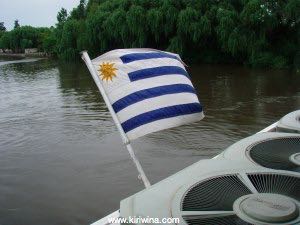
Returning via Canal Vinculacion work was in progress on a very large new housing/mooring development. 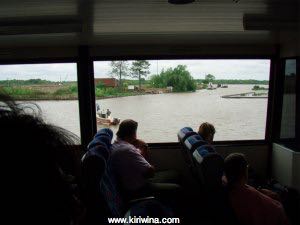
Along the Rio Lujan old ships are not scrapped. They are run into the bank and allowed to rust away (slowly).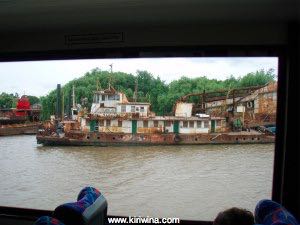 .
.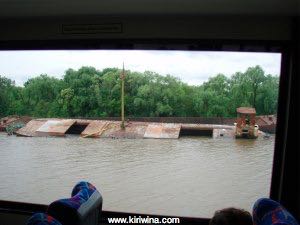
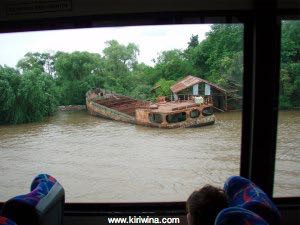
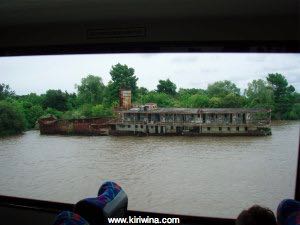
Prefectura Z28 Class WPB Patrol Boat "Madryn" based in Tigre. Built by Blohm & Voss 20 of these boats entered service in Argentina between 1979 and 1980.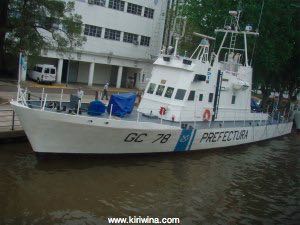
A Tigre built Cacciola catamaran ferry of the type we were travelling on.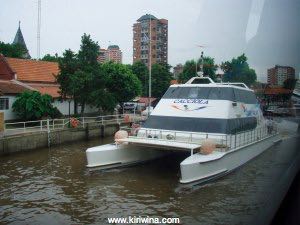
The international ferry terminal at Tigre.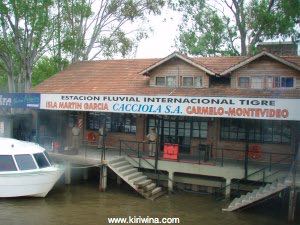
With very, very careful attention to water levels it would be possible for Kiriwina to do this trip.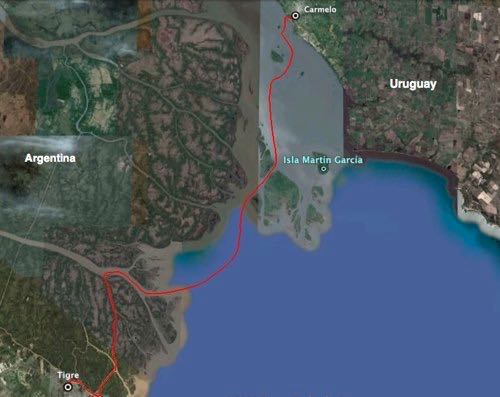
Puerto Madero
Then a visit to the Prefectura to checkin. Again, matters were a bit confused. I gathered that I had all the correct documents but presented them with the wrong form. I think the fact that we are a foreign vessel on a domestic voyage is what is causing some confusion.
Back to Puerto Madero where I had been allocated a new berth C30 and needed to shift. Easy peasy. Kiriwina's gelcoat badly needs polishing and waxing. I noticed a couple at work on an adjacent boat and got an uppish quote of Arg$1,800 (about £280) which is more than I paid in Devon before leaving.
A previously alive inhabitant at Dique 1, Puerto Madero.
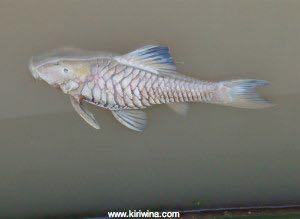
Clubhouse and administration complex at Yacht Club Puerto Madero.
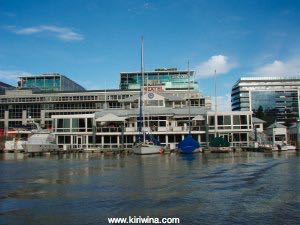
CNV to Yacht Club Puerto Madero
Once on board we stowed the dinghy and got away around 09:30. Many thanks to all at Club Nautico Victoria for their hospitality and assistance during my stay. The facilities have been excellent and the boat was always secure whatever the weather. I was able to leave for long periods without concern for the safety of Kiriwina.
En route CNV to Puerto Madero, Buenos Aires.
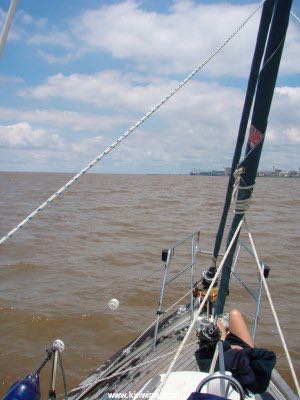
We motor sailed all the way with 10-15 knots fine on the port bow. It was more motoring than sailing with short choppy seas. Despite there being a falling tide water levels were quite high due to recent S-SE winds.
Passing through Darsena Norte with Yacht Club Argentino in the background.
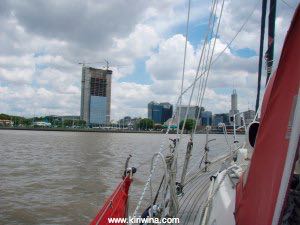
Passing Yacht Club Argentino where I arrived in Buenos Aires on 18 December last year.
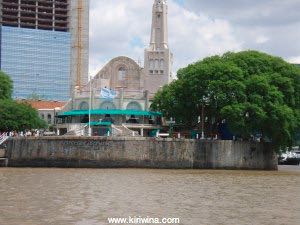
Unlike last time I had reserved a berth. We only waited 5 minutes before the swing bridge opened and 5 boats left.
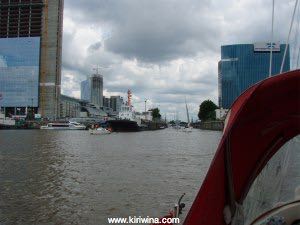
A marinero was there to escort us through the entrance and on to our berth where he assisted with mooring.
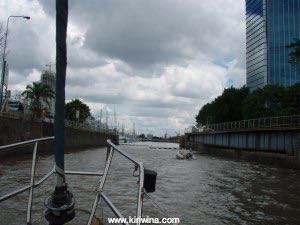
Approaching our berth C8 at Yacht Club Puerto Madero.
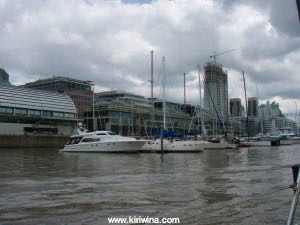
All fast alongside at 14:30 on a warm and cloudy sunday afternoon.
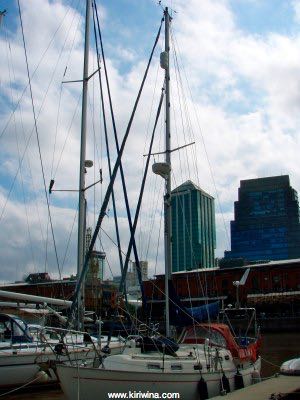
It was a pleasant change to be able to step over the rail directly onto a dock. I haven't done this since December 2007 at La Gomera in the Canaries.
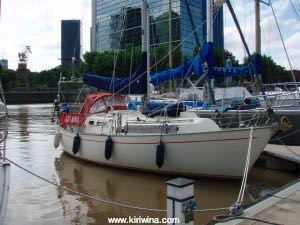
A view from our berth at Puerto Madero.
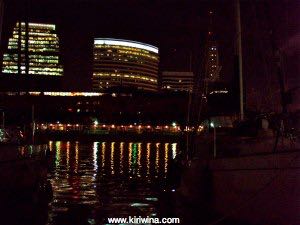
TBC Day in the Delta
TBC had another outing in the Delta today but the weather looked a bit dodgy.
Boat preparation on the ramp at TBC.
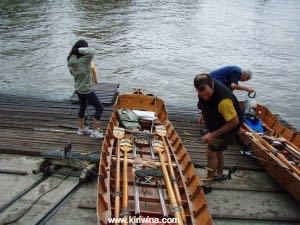
Nancy and I shared a 3 seater with Sylvina who was relatively new to rowing. Ten minutes after leaving the ramp the heavens opened as a series of thunderstorms passed through. Sylvina was not too happy with the conditions so we dropped her off and continued with the rudder shipped but without anyone steering. Not a good idea.
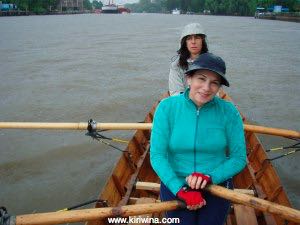
It continued to rain heavily with the boat pulling substantially to port. Our course was an erratic dogs leg.
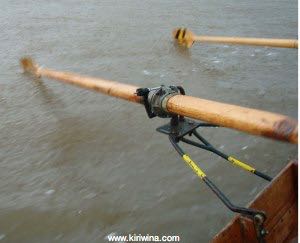
Just into Rio Espera we were surprised to find this ocean going german yacht "Carioca" moored alongside a swiss owned delta cottage. Must be plenty of water although one would need to keep a close eye on overhanging trees.
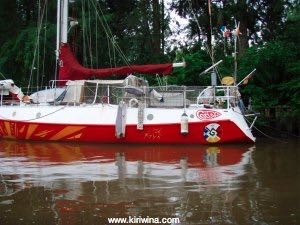
We arrived for lunch, some way up the Rio Espera, soaking wet and after a two hour break returned in record time (for us) to TBC. This time we unshipped the rudder, as advised, and generally kept a very good course at a rapid pace.
Nancy back at the club with new mascot and boat.
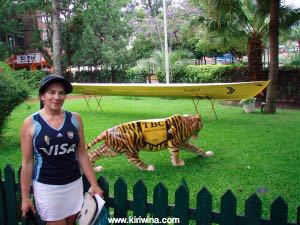
Kiriwina arrested by Prefectura Naval
Kiriwina had been arrested by the Prefectura Naval and was prohibited from leaving her berth under threat of severe penalties. The club apologised and said they were going to chain and lock Kiriwina to her mooring.
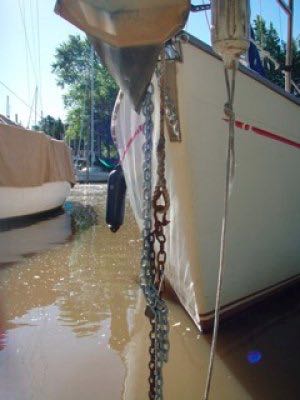
After 10 minutes at the Prefectura office in San Fernando all was resolved and I was told Kiriwina would be freed. The Prefectura Naval are a well funded body responsible for pretty much anything to do with commercial and leisure navigation and for policing waterfront areas. They operate all over Argentina including inland lakes and rivers. I saw them in Bariloche and Calafate.
There are offices at regular intervals between Buenos Aires and Tigre each responsible for a certain length of coastline.
San Fernando was a relatively new office and when conducting a routine check at CNV they noted Kiriwina was a foreign vessel. CNV had a copy of my passport details and vessel registration but not my Aduana (customs) document. Back in the San Fernando Prefectura office there was no record of Kiriwina. The handling officer assumed non-compliance and issued an arrest order.
All my documents had been lodged with the San Isidro Prefectura, as I had been instructed to do, but there does not appear to be a centralised register and Prefectura offices are not directly linked.
I was not given a document confirming compliance and was told that an officer would visit CNV and authorise them to release Kiriwina. As at 17:30 this had not happened.
Asado and Departure Preparation
Some very tame birds came to feed.

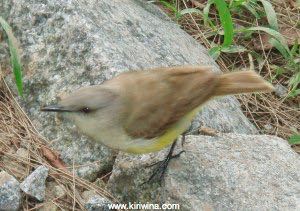
Excellent Argentine wine with delicious meat cooked slowly and carefully.
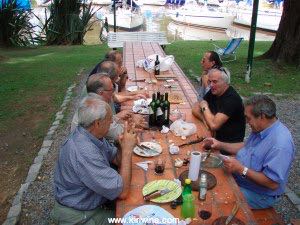
Afterwards I went back to CNV to prepare for departure on Sunday. Today the water was at its highest for quite some time.
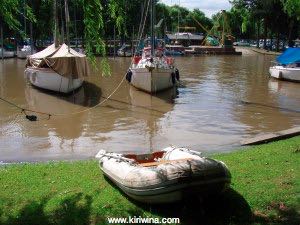
My dinghy had picked up quite a bit of fouling since I last washed it in August. In Brazil it would pick up more than this in a week or two.
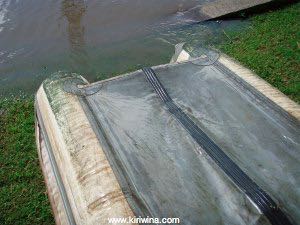
While scrubbing away I noticed a club launch arrive with a prefectura officer who set about photographing my boat. He took some photos and went away without saying anything to me.
Meantime the water level rose over the retaining wall and onto the lawn.
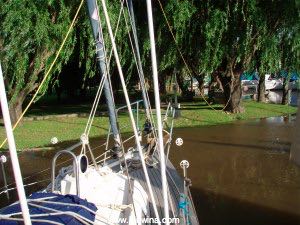
Last year Kiriwina spent a lot of time at anchor in Brazil. Today when cleaning the anchor cable I was puzzled by differences in deterioration levels over the length of the chain.
My conclusion was that the section at left was on the bottom but not dragged about very much. Second from left, in the worst condition, was a section that would have been on the bottom and dragged about a lot. The third section was in the water but usually not on the bottom and the cleanest section at right was rarely in the water.
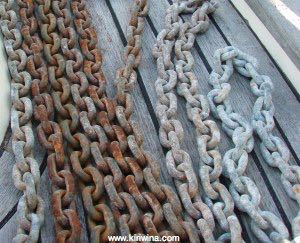
On the way back to Tigre calle Dardo Rocho was flooded for several hundred metres. Apparently, the cause was high water levels causing some storm drains to backup.
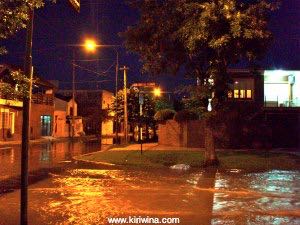
Sunken Yacht
Back in the spring we noticed an old motor/sailing yacht moored there with the owner working on restoring her.
Some weeks later in July she had sunk, was listing to starboard and appeared to be abandoned.
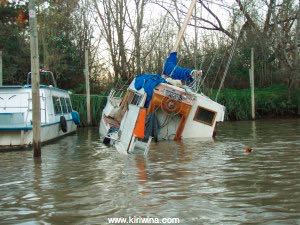
Each time we passed her condition had worsened. A lot of gear and fittings including sails and boom had been removed and the starboard outer shroud had broken.
Then in November a salvage operation appeared to have started. Two men were working on her and appeared to be using blue barrels in an attempt to float her. She was upright and the broken shroud had been repaired.
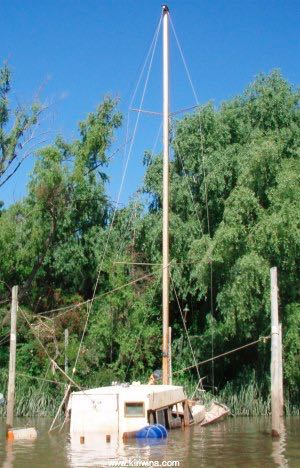
Today, sadly, no further progress had been made. The tide was higher with the cabin almost completely submerged.
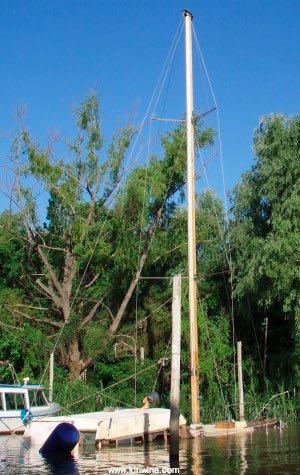
Windlass Motor - Installed
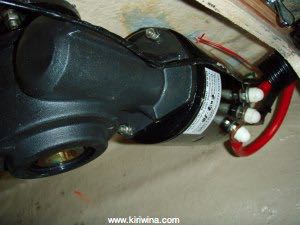
I hope so. We have had a lot of rain recently and there is no sign of any leaks. Just to be sure I gave the many hole patches another coat of epoxy filler before fitting the motor.
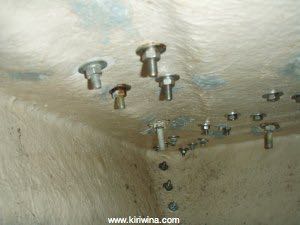
This is the anchor chain locker drain which allows any water which gets in here to drain aft to the bilge. I like this idea which pretty much avoids the problem of a full chain locker causing the bow to dip further exposing the foredeck in heavy weather.
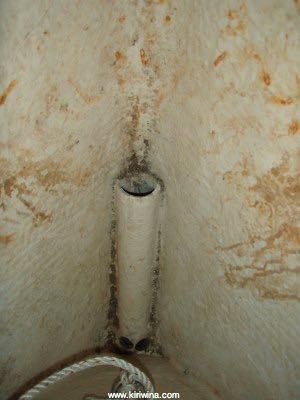
Also took 40 litres of diesel at Arg$2.658 pesos/litre (£0.42p). This compares well with Reals 2.72/litre (£0.94) the last time I took on diesel (verano) at Paraty in Brazil about a year ago.
Alternator and Starter Installed
First up was the installation of the refurbished alternator and starter motor. Both were fitted without any problems and the engine started immediately.
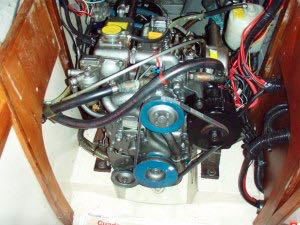
The electrical wiring installation on my Yanmar 2GMF is a real dogs breakfast. I have not paid much attention to it as there have been no problems. At some point it will have to be sorted into some semblance of order.
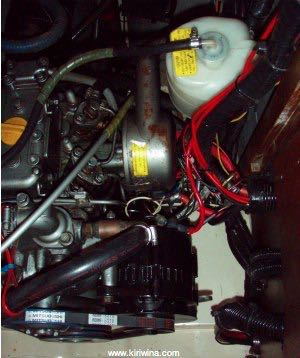
The engine has had little use this year and is in excellent condition despite being over 12 years old with 1575 running hours. However parts of the installation have rusted badly, including the shaft coupling, all four engine mounts and the air filter housing.
Teatro Ateneo
It is a lovely little theatre on Paraguay just south of Avenida 9 Julio.
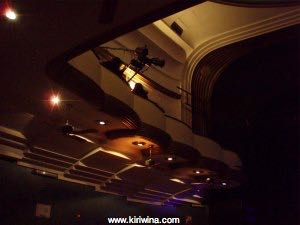
We went to see Juana Molina. An excellent concert if a little short at 1hr 15 minutes.
Starter and Alternator Overhauled
My newly refurnished Hitachi alternator...
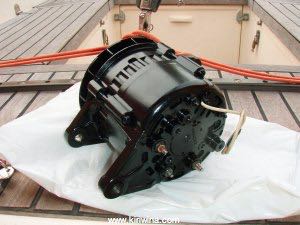
...and Hitachi starter motor.
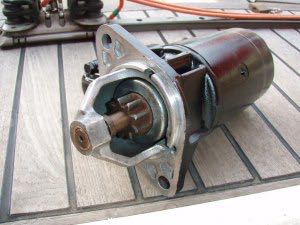
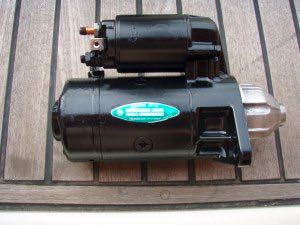
Ready for installation next week.
Windlass Motor Repaired
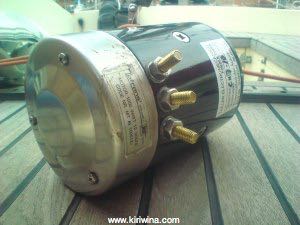
Prior to reinstalling the motor I had to do something about deckhead leaks.
The cause, again, was holes drilled by whoever installed the teak deck. I counted 24 holes in the chain locker deckhead. Not all leaked but enough did to ensure the motor regularly got wet and lived in very damp environment. All were cleaned out and filled with epoxy.
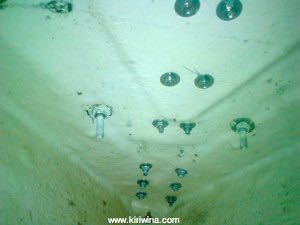
Last year my anchor chain spent a lot of time on the bottom in Brazil. The portion most exposed (5-20m) is now very rusty with the galvo having almost completely broken down. Time for re-galvanising or replacement.
Back to deckhead leaks. We have had a bit of rain recently and it looks like my previous efforts may have missed one or two. The port upper cabin locker was very wet in places. Another filling job!
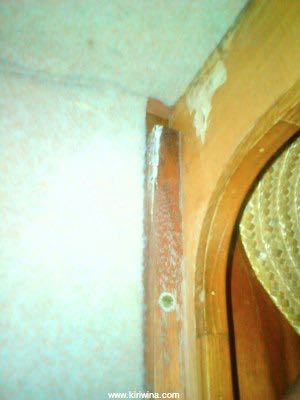
Peña de la Ribera - Olivos
Headline talent was Micaela Chauque from Salta. Excellent, as was the food.
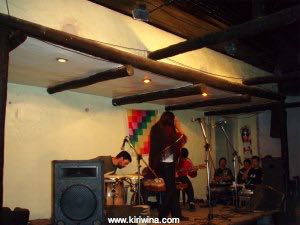
Windlass Motor
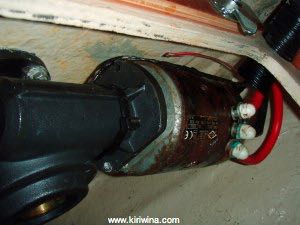
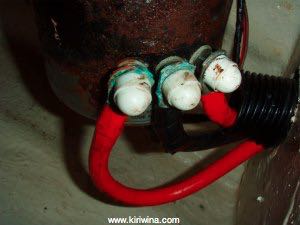

No problems with removal. Disconnected the wiring and two retaining bolts and it was out. Also, a closer examination of the chain locker deckhead revealed a larged number of drilled holes, some of which were leaking. This will mean a big session with epoxy filler. I'm still baffled as to why all these holes (well over 100) were drilled.
Later I dropped the motor off at Petrei & Foglia in Tigre.
El Rosedal
Rosalia Castro de Murguía.
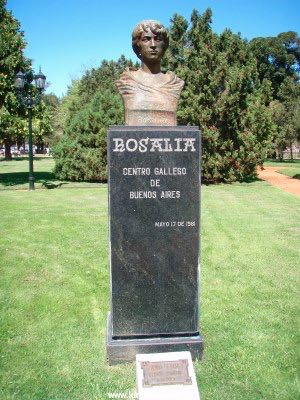
There are two smallish lakes where one can hire pedalos or row boats. We stopped for a photo on the bridge (8 on the map below).

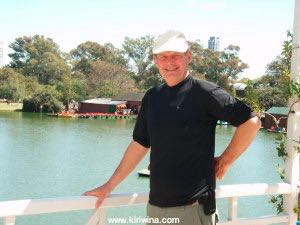
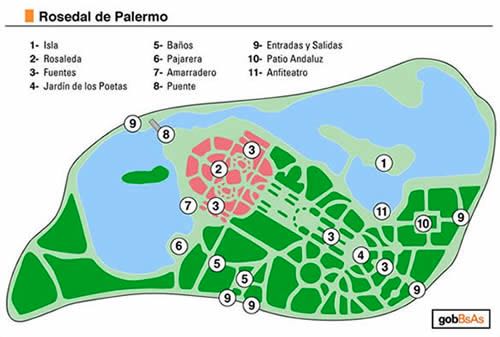
Tigre Delta
This beautiful motor cruiser passed us with Sarmiento's cottage in the background.
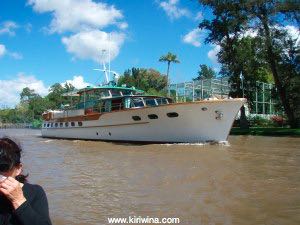
Australian style cottages with wide verandas.
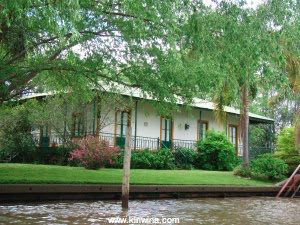
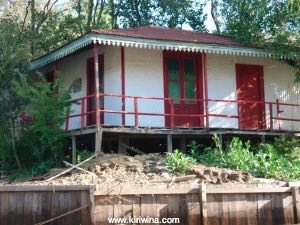
We were late starting and were the last to arrive for lunch at Guacamayo.
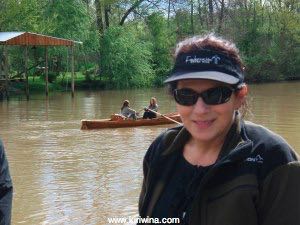
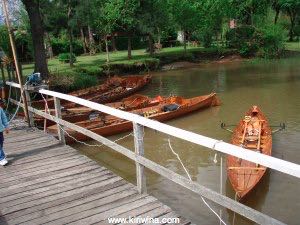
We also missed the photo op but more are posted here.
Tango Buenos Aires
Waiting for the Tango class to start.
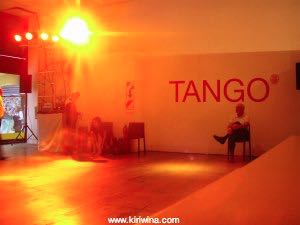
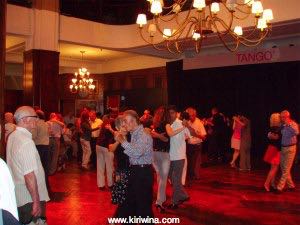
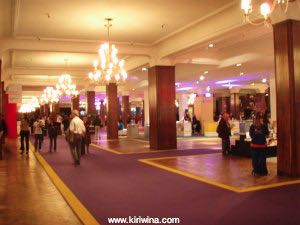
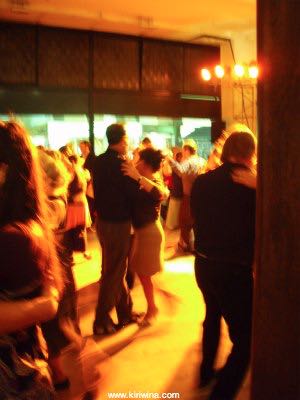
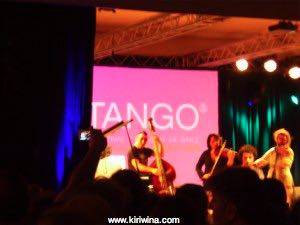
Return from Colonia
Things settled down and with the 2 reefs in the main and preventers rigged we set off for San Fernando with the wind more or less astern.
Looking forward with about 20 knots of wind astern. With short steep seas we rolled a bit but the Aries steered without problems.
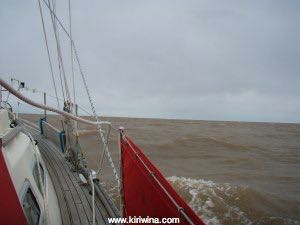
Jordan preparing lunch.
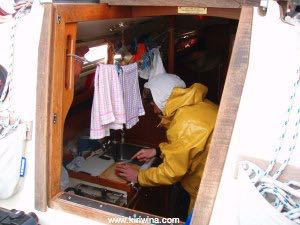
Towards half way we were experiencing regular gusts over 30 knots. With the wind almost dead astern three reefs rather than two would have been better in the gusts.
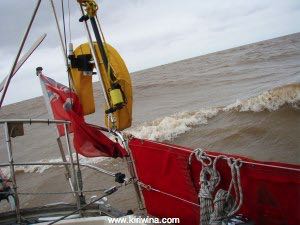
Progress was excellent with the log often indicating speeds in excess of 6 knots in winds averaging 25-28 knots. Very good for Kiriwina.
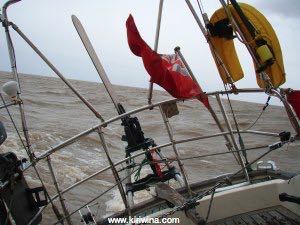
Tanker Mediator 2 in the channel off Buenos Aires with low rain cloud.
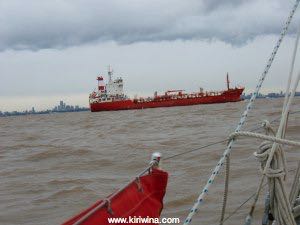
Canal Costanero, 2 metres under the keel, speed of 5.9 knots and 25 knots of wind.
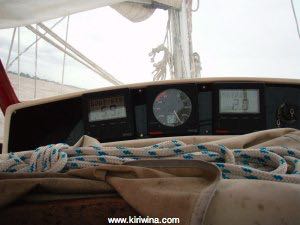
Buoy KM 21.7, Canal Costanero between Buenos Aires and the Rio Lujan. With the easterly wind holding up water levels there was a least a metre more depth than on the outbound leg on a rising tide.
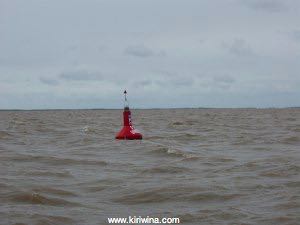
By 16:45 we were safely moored in CNV San Fernando just over 7 hours from Colonia having covered 36.7 miles. A very good passage time and much quicker than in March.
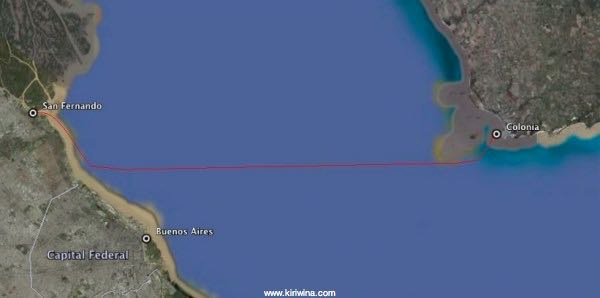
Previous
Buenos Aires Hash
The beer stop.
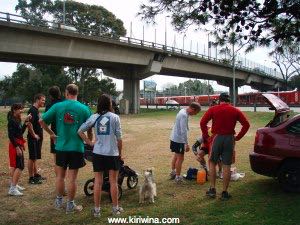
Over Avenida Lugones.
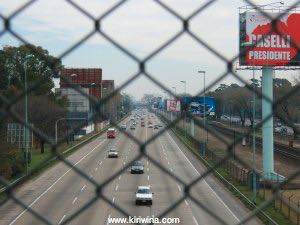
River Plate stadium through the mesh.
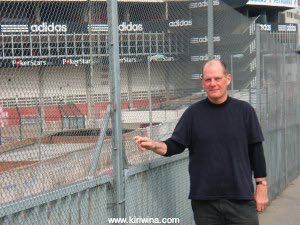
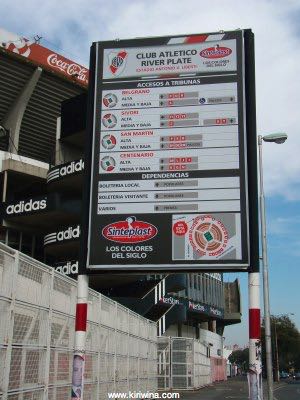
The hares. (who planned our route)
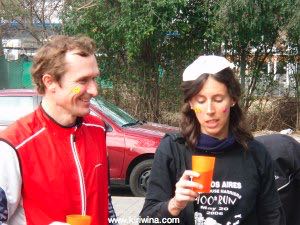
Espacio Publico
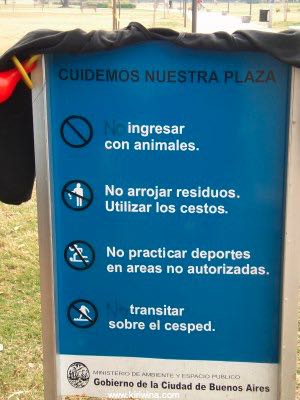
My "You Beaut" newish running shoes"
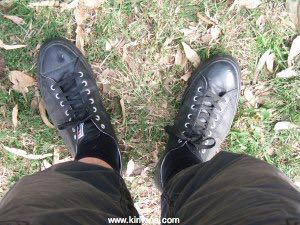
Hash dog - Lady Fox.
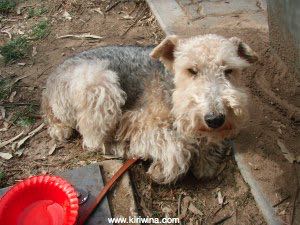
An excellent lentil stew....

....Served under gum trees.
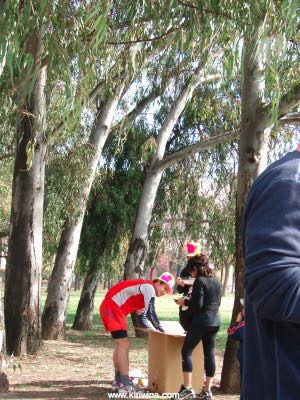
Eberspacher
Corroded harness connector.
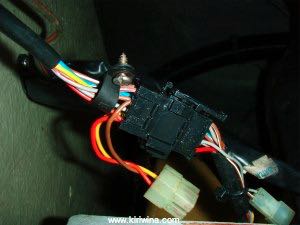
Eberspacher heater.
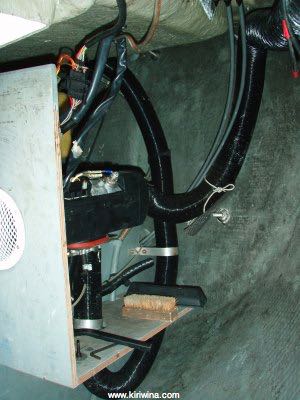
With luck we will have onboard heating for the trip to Colonia next week.
It ran perfectly for three hours and re-started successfully a couple of times.
Bicycle Lane
After some taping up and cleaning/oiling the heater ran for about 15 minutes before shutting down and refusing to start. Looks like further cleaning and a new fuse holder will be required.
On the way back to Tigre along Constitucion a new cycle path had been installed.
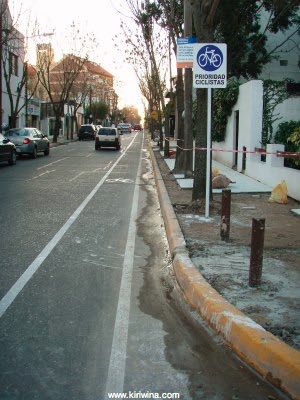
A cobbled section had been paved over giving a smooth ride all the way to Tigre from Victoria. No more broken spokes!
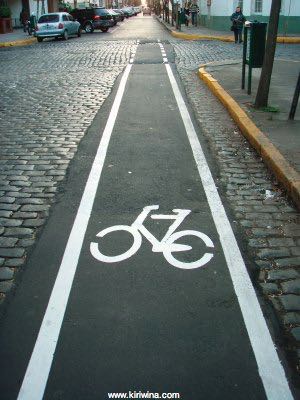
This makes a pleasant change from Libertador where cycles are banned.
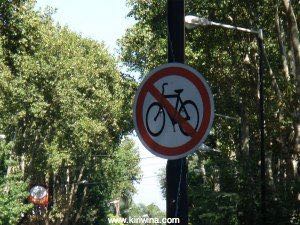
Day Sail
Exiting the River Lujan. We were not the only ones out for a sail.
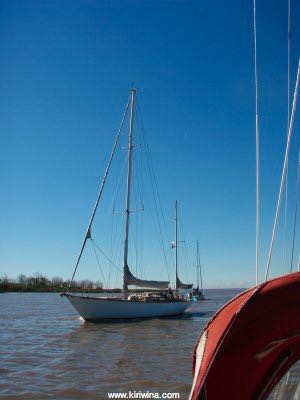
Erica gracing the foredeck.
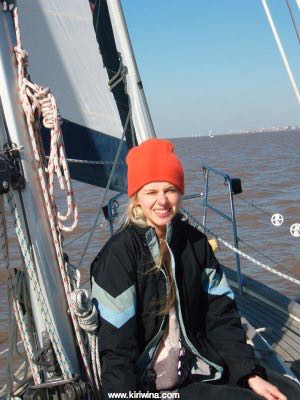
Nephew Jordan helming and Nancy.
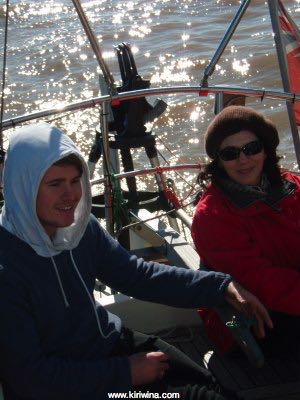
Erica taking a break from the foredeck.
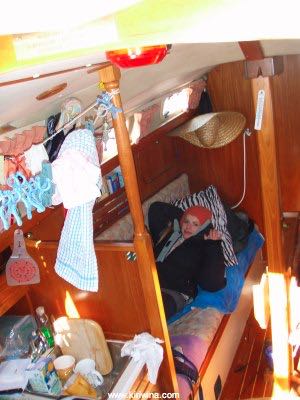
2.1 knots and a depth reading of 1.9 metres. Outside temperature around 8ºc.
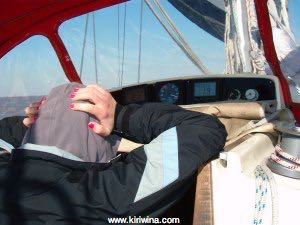
Grimaldi Lines "Grand Francia" manoeuvering in Darsena Norte Buenos Aires.
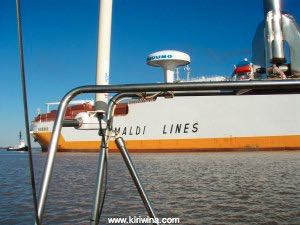
Kiriwina on the buoys at Yacht Club Argentino.
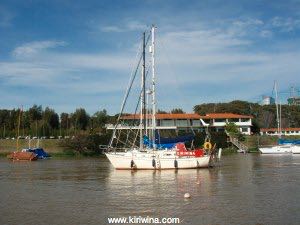
In the lancha heading ashore.
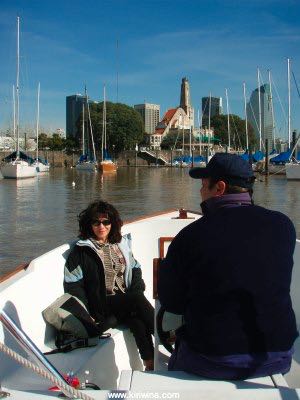
We had planned to spend the night in the marina at Puerto Madero. They said they were full. Later, around 22:00 we counted 12 empty berths so they were not full at all.
This was no real problem apart from the fact that with a malfunctioning Eberspacher we had no heat aboard with an overnight temperature around zero.
Shift Ship
Back on board at CNV I had been allocated a new berth. Socios have priority and with the club pretty much full we Transitorios are slotted in where space is available. Water levels were again very low.
Three marineros helped me move using a club launch as tug. Here we are stuck but with the launch full astern and me rocking Kiriwina from side to side we pulled clear.
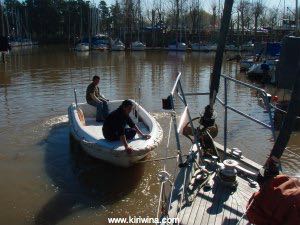
Temporary helmsman.
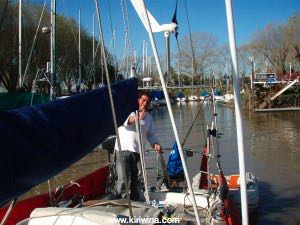
My new berth is closer to the club entrance from Rio Lujan.
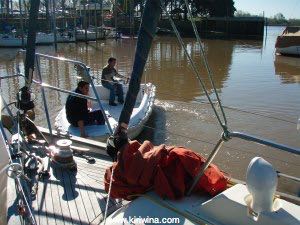
The closest yacht is aground in shallow moorings.
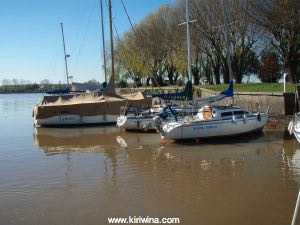
My new mooring. Still with WiFi, electricity and water. Being closer to the river it is exposed to some surge and wake but the motion is gentle. To port is "Alaska" a 47 footer which provides some protection from surge.
Boat spacing is greater with a lot more space astern.
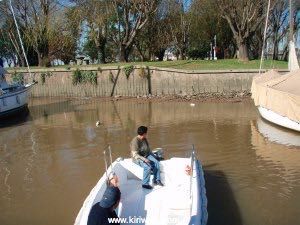
I'm told water levels this low are very rare. Here the mooring chains are exposed. These heavy chains are secured to the bottom. Shorter lighter lengths of chain with mooring lines are shackled to the heavy chain at each mooring. The mooring lines are bought aboard and secured.
The theory is that as water levels rise the heavy chain lifts just enough to ease tension on the moorings. It seems to work pretty well but one needs to experiment a bit to find the right line length.
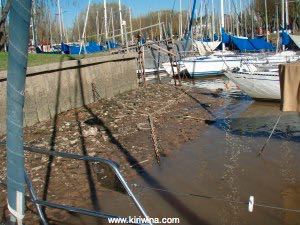
All secure and we are more or less afloat with the water level some 0.6m below datum. Fortunately the bottom is soft mud.
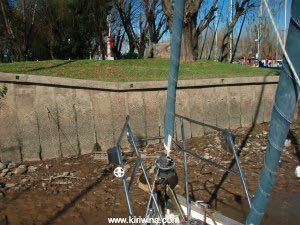
A quick trip round to Club Albatros where Gilles has his boat ashore for a major refit including re-engining.
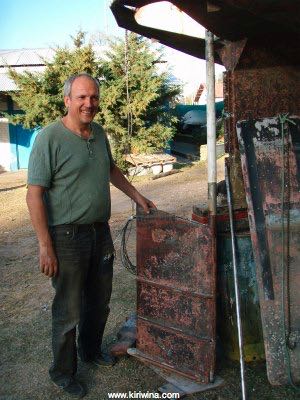
Tigre Delta - Rowing
This week we wandered down a small tributary and found an abandoned house. The dock and lot showed some signs of attention. Perhaps a demolition/rebuild.
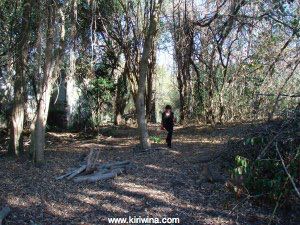
I reckon the house is at least 100 years old.
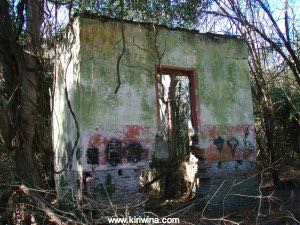
Note raised foundations to allow for flooding.
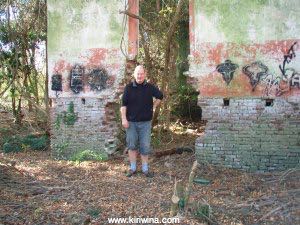
Restored dock with the water level very low.
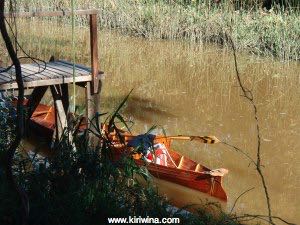
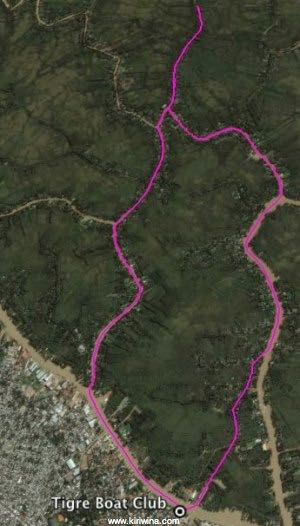
Plaza Guatamela
These photos were taken from a 13th floor balcony overlooking Plaza Guatemala.
North end of the plaza & church.
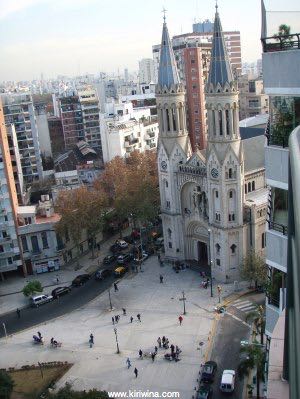
More palm trees.
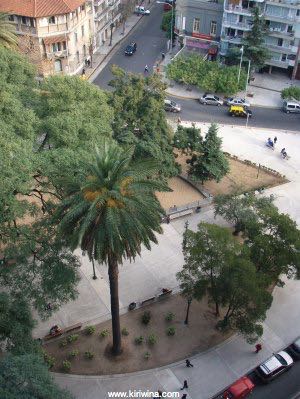
Autumn in Buenos Aires. Plaza Guatemala and Avenida Charcas with a gaggle of yellow and black taxis.
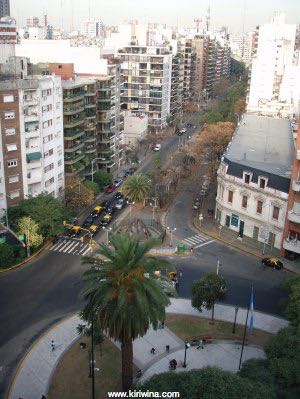
Delta Excursion -TBC
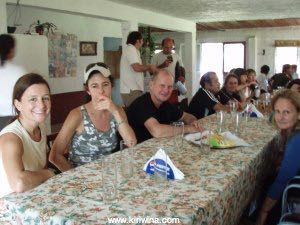
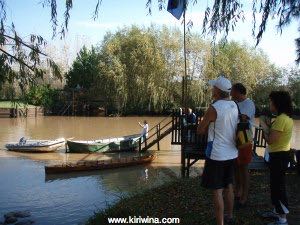
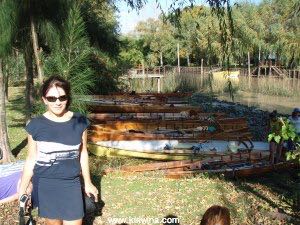
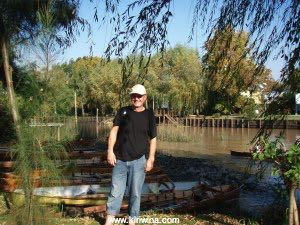
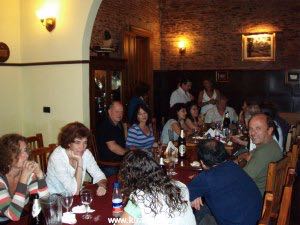
http://picasaweb.google.com/tigreboatclub.fotos/SalidaEnBote23DeMayoDel2009#5340574225386053586
Back to Buenos Aires
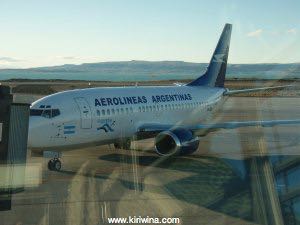
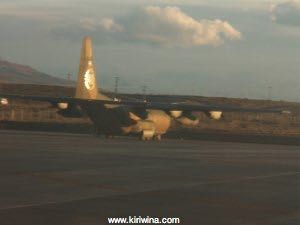
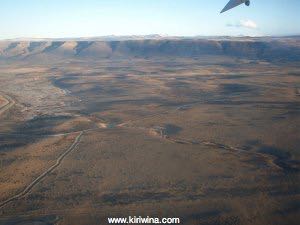
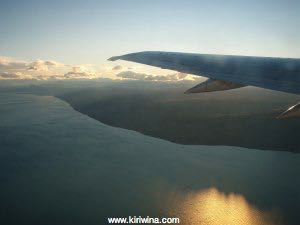
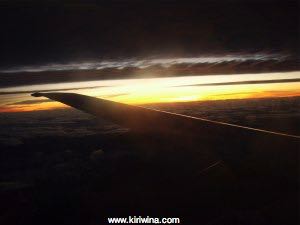
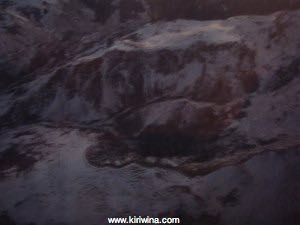
El Calafate - Todos Glaciares - Upsala
Right off the bus we had to pat another Arg$60. This is a national park. Then we boarded our Fernandez-Cambell tour caramaran. Both our park and boat tickets were carefully checked before boarding. Bracing this was not. The seating area is fully enclosed with airline style seats and lots of video screens which later showed our GPS track and topography. It was comfortably warm. It was a sheep like experience.
Before departure they announced that part of the route would likely be blocked by heavy ice.
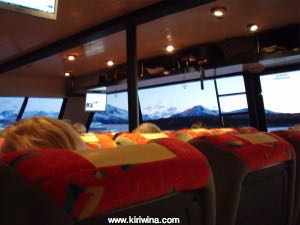
Our departure point at Puerto Bandera.
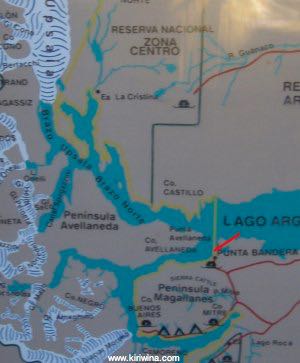
At 09:00 we were off.
Looking back at Boca del Diablo.
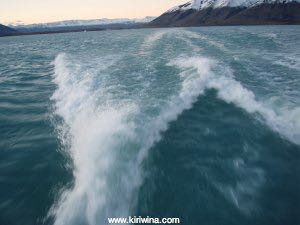
Proceeding along Brazo Norte towards the Upsala glacier.
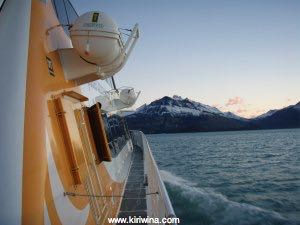
Built by Unidelta Astilleros in Tigre near Buenos Aires.
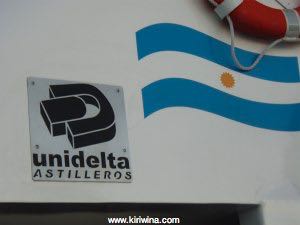
Southern shore of Brazo Norte.
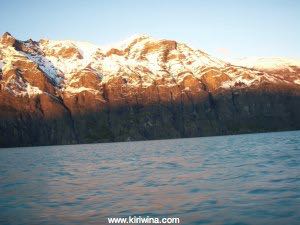
Detailed GPS routing on the monitors.
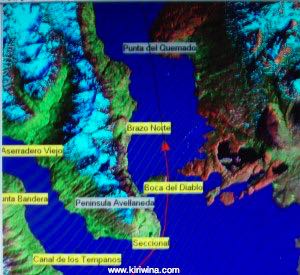
Plus a detailed map on display.
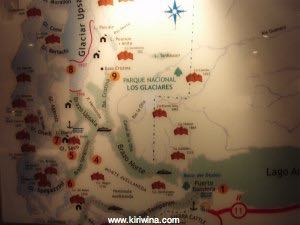
Passengers were allowed out on deck. Not surprisingly it was cold and most stayed inside.
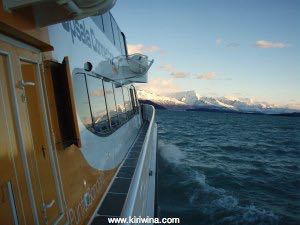
Boca del Diablo more clearly defined.
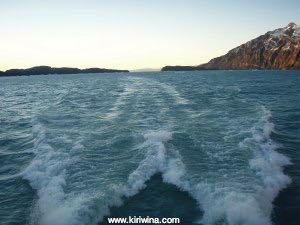
Twin diesels pushed us along at a cracking rate.
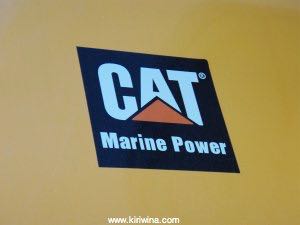
Only now did the sun clear the mountains as we began to encounter icebergs. It was cold.
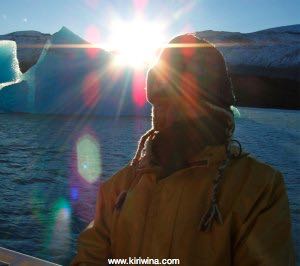
We had a running commentary in English and Spanish as points of interest were passed.
Glaciers are formed by snow being compressed into ice over some 15 years. They are not formed of frozen water. Hence the very blue/green appearance due, we were told by by the heavier density of glacial ice (less air bubbles).
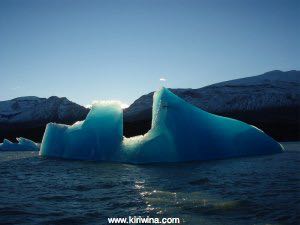
Approaching Brazo Upsala.
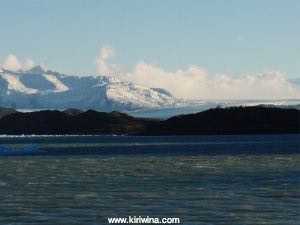
Lots of ice here blocking Brazo Upsala. We would not be going to the Upsala glacier. Brazo Upsala is some 700ft deep and the front of the glacier is afloat. When sections brak off huge bergs are formed.
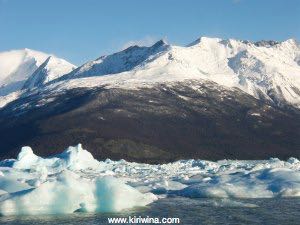
We went pretty close to the bergs. About 10m at times.
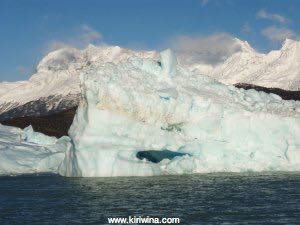
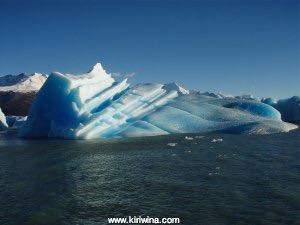
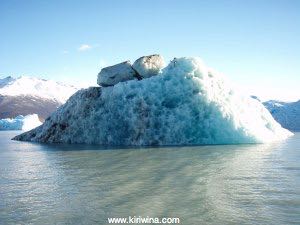
Then we turned down Brazo Spegazzini bound for Glacier Spegazzini
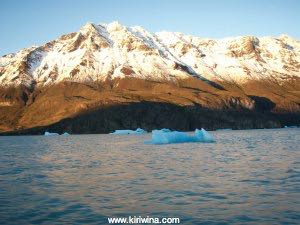
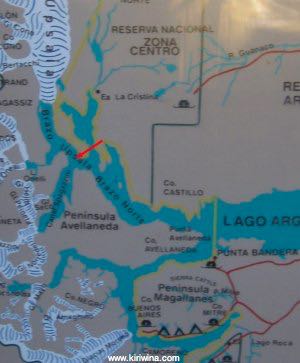
Ushuaia - Glacier
San Carlos de Bariloche
The hostel gave us another room when they were unable to repair the heating.
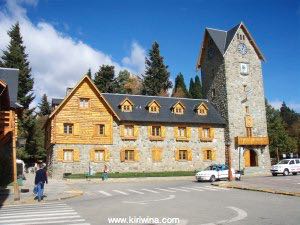
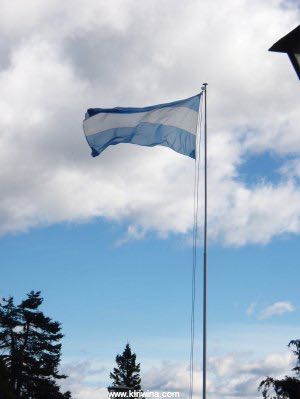
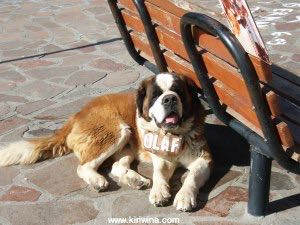
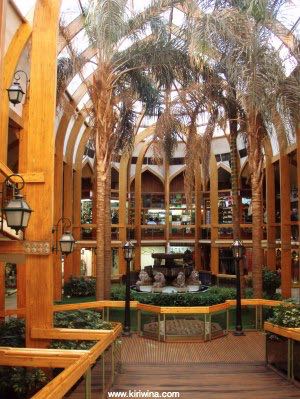
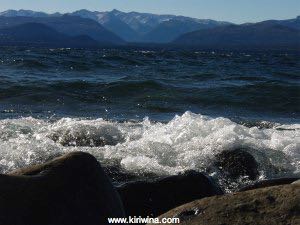
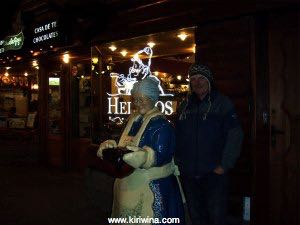
Villa la Angostura to San Carlos de Bariloche
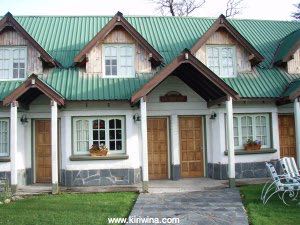
Our trusty Chevrolet Corsa.
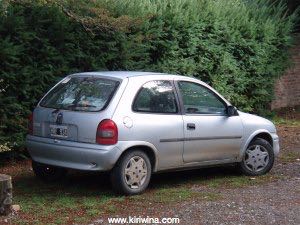
Main street Villa la Angostura.
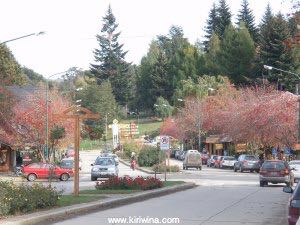
From Villa La Angostura it was only 80km down to Bariloche mostly along the shore of Lago Nahuel Huapi.
The scenery was again stunning and we stopped frequently.
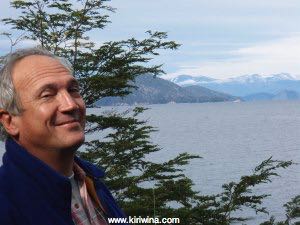
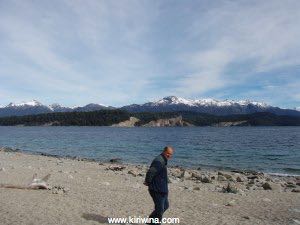
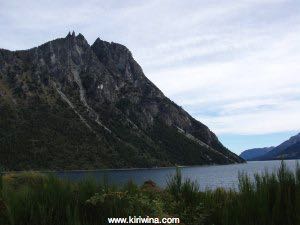
Approaching Bariloche at the east end of Lago Nahuel Huapi.
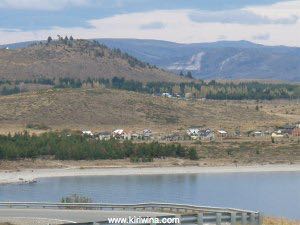
Central Bariloche.
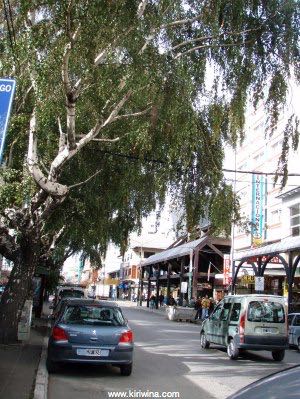
Bariloche marina on Lago Nahuel Huapi.
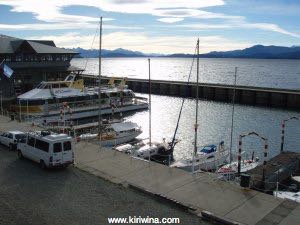
At Bariloche we had lunch then parted company with Marcus who headed off into the mountains. Thanks for the lift Marcus.
We decided to stay in Bariloche a day or two and checked into a private room at Las Moiras Hostel. Cost Arg$60 per night.
We had an enjoyable late dinner before returning to Las Moiras.
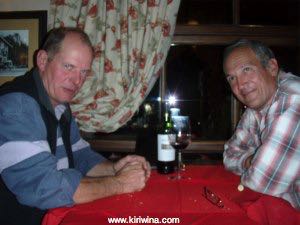
There was a heating malfunction. IE there wasn't any heating. By this time the outside temperature had dropped to zero. They did, however, have lots of extra blankets.
St Martin de Los Andes to Villa la Angostura
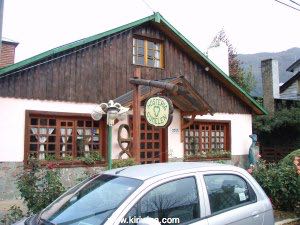
Main street San Martin de los Andes.
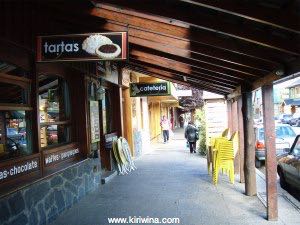
Travellers bound south normally check road conditions with the tourist office. They were a bit surprised that we planned to travel to Villa la Angostura in a Chevrolet Corsa.
We were now in the spectacular Argentine lake district travelling on route 234. This road was about 50% unpaved and very muddy with extensive potholing in places.
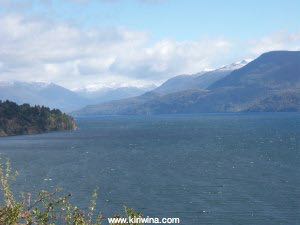
Heavy rain would make the route very difficult but the weather was fine and the scenery spectacular.
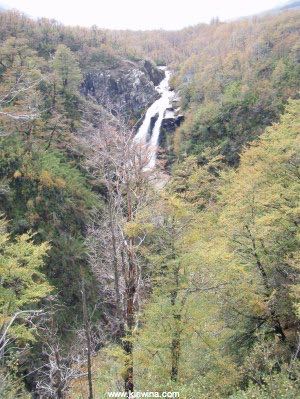
Marcus and self on the shore of Lago Nahuel Huapi with snow topped mountains behind us.
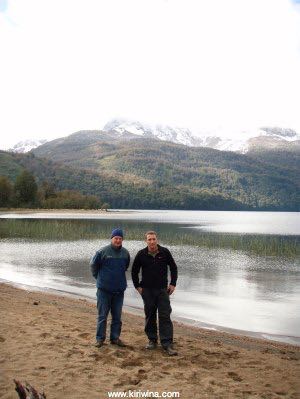
Lago Nahuel Huapi
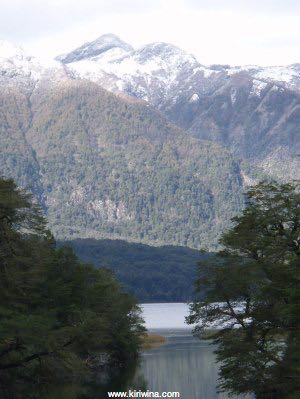
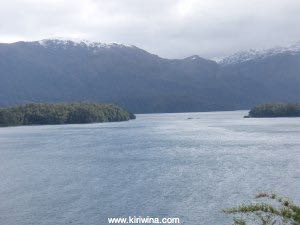
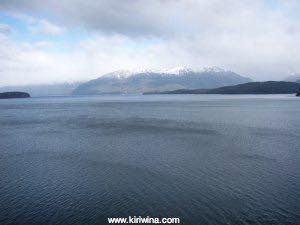
We travelled slowly arriving in Villa la Angostura late in the afternoon. It is a lovely town on the shore of Lago Nahuel Huapi.
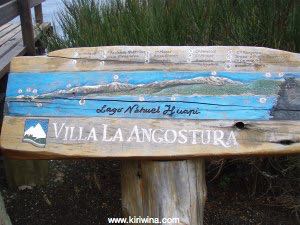
This time we rented a furnished cabina at "La Sinfonia" for Arg$200 per night. Excellent place and Marcus cooked a very tasty beef bourguignon.
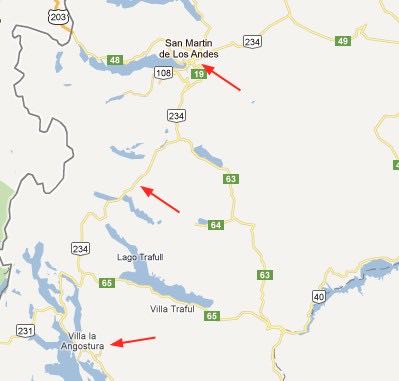
Villa Pehuenia to St Martin de Los Andes
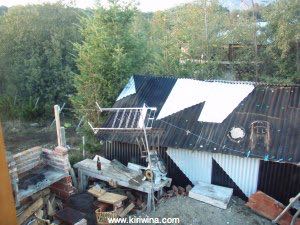
And another.
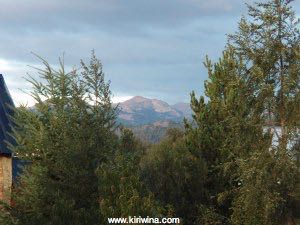
We had heard that it might be possible to go horseback riding in the area. It wasn't and absent anything else to do we decided to check out and see about leaving town.
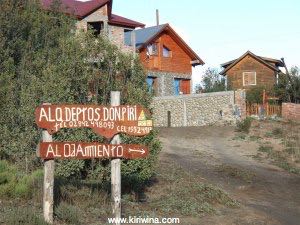
We walked about for a while and discovered that the next bus out was at 23:30.
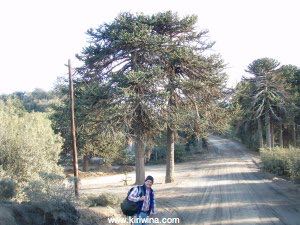
There was a rail service here at some point.
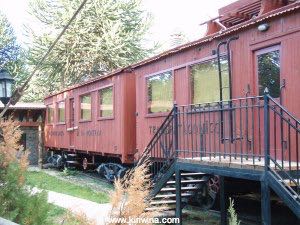
Curious trees.
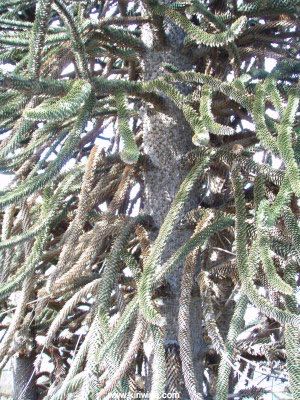
Lago Aluminé.
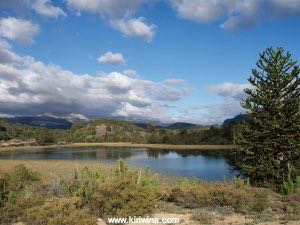
Roadside map.
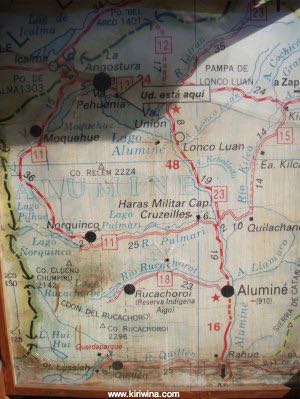
Lago Aluminé.
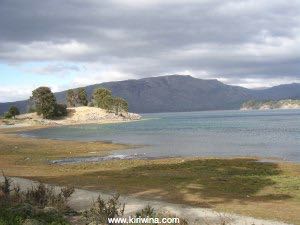
In the event we started walking out of town then got a lift 4 km to a road junction where Gilles suggested we hitch hike. Having not done this for 40 years I was unsure but it was a good call.
We came in on this route yesterday.
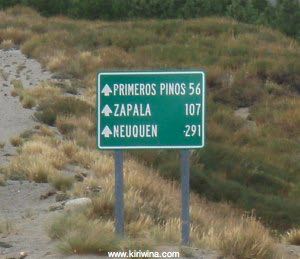
We plan to leave by this route.
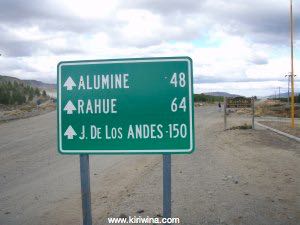
Waiting for a lift.
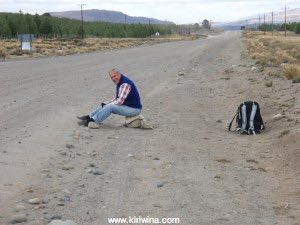
Gilles was right. A little later Marcus, from Switzerland, arrived in a Chevrolet Corsa and gave us a lift. He had been forced to divert due to protest road blocks by indigenous Mapuche residents.
We followed the Aluminé river south through wild and spectacular country.
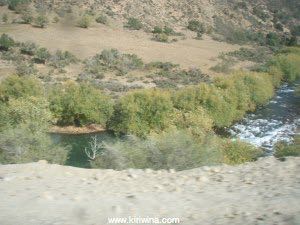
Gravel roads...
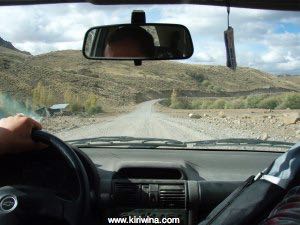
Giving way to good quality asphalt.
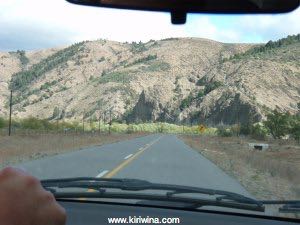
Our plan had been simply to get a lift to Aluminé some 20km down the road. Marcus was bound for Bariloche and was happy for us to ride with him. We gratefully accepted.
Aluminé river.
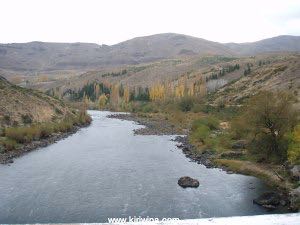
Back on the gravel.
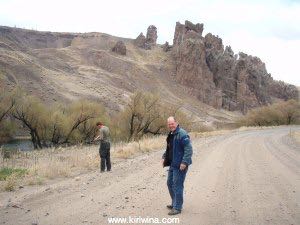
Along the way we had a few rain showers. Then, about 20k north of Junin de los Andes, we ran into another Mapuche roadblock.
Or rather a bridge block. Travellers could walk across the bridge but vehicles were stopped.
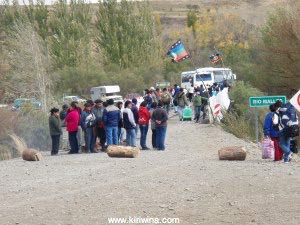
This chap tested the capability of his 4x4 trying to bypass the bridge. Not a good plan but the police later hauled him out.
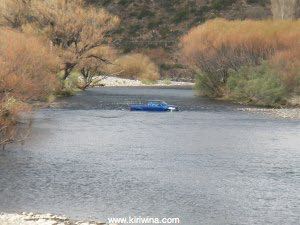
Travellers walking across to a waiting coach.
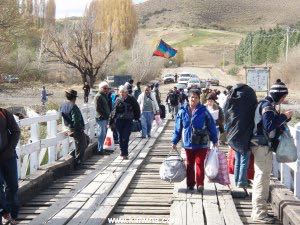
Local press reporting events.
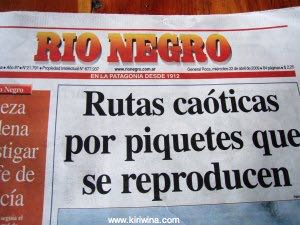
Our bridge featured.
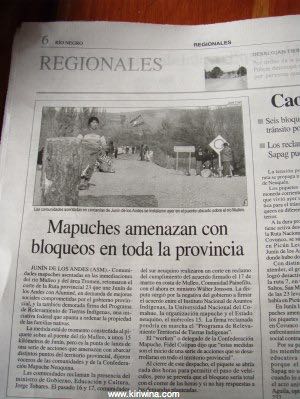
After two hours the blockade was lifted and we continued on to Junin de los Andes where we had a coffee and decided to press on to San Martin de los Andes.
San Martin was a lovely spot. We stayed at Hosteria Cumelen. A nice enough place where we paid Arg$165 for a 3 bed suite to a very grumpy owner.
We dined well at a nearby restaurant.
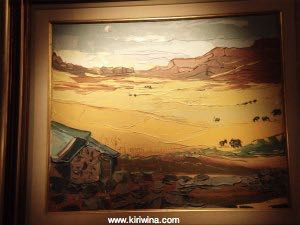
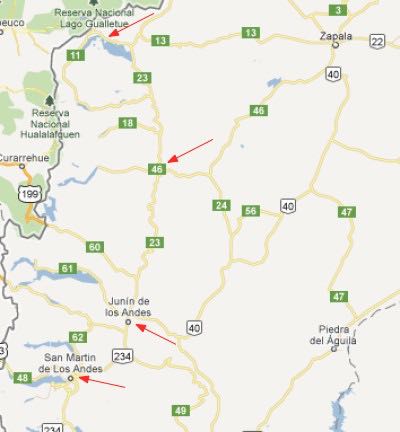
Neuquen to Villa Pehuenia
Police checkpoint en route to Neuquen.
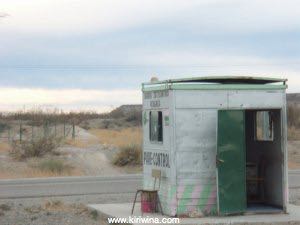
We arrived in Neuquen at 11:00. This is only a transit stop as we never left the bus station. Our next destination is Villa Pehuenia near the Chilean border and we will travel with Albus at a cost of Arg$65.
We had a 2 1/2 hour wait and had a good lunch in the terminal.
Gilles about to board.
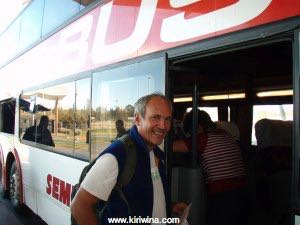
On board for a 13:30 departure. Albus use similar buses to Chevalier but this one was older and somewhat tired.
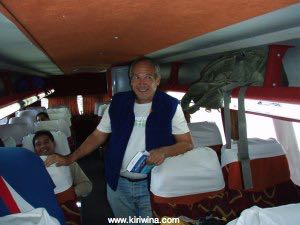
As we proceeded the landscape rapidly became mountainous as we climbed into the Andes.
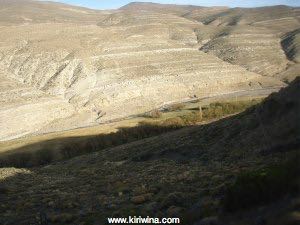
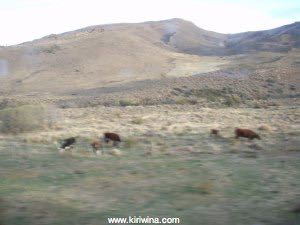
Our first gaucho.
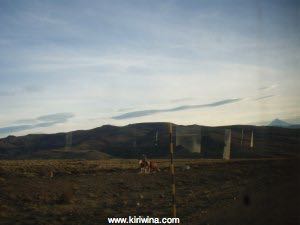
We passed though CutralCo, Zapala and Aluminé. At times asphalt gave way to gravel as the road steepened with many switchbacks. Very dramatic scenery with some cows and sheep appearing.
We arrived at Villa Pehuenia around 20:20 after some 7 hours. Not a lot was open. It seems we have arrived in between the end of trekking/fishing and the ski season.
Some helpful locals take us to Apartamentos Don Piri, just outside town, where we booked an apartment. Later we ate at Los Troncos, a bit uppish on price but not bad given that they were the only place open. Our apartment cost Arg$150 for two and our meal Arg$140 for two.
My Movistar mobile does not work here but Claro does.
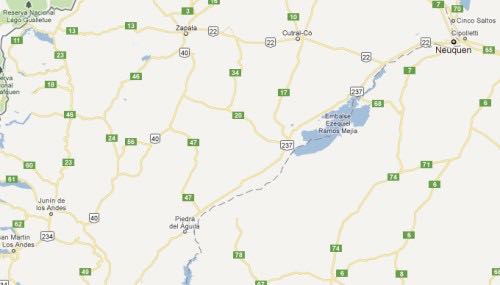
next
Buenos Aires to Neuquen
Retiro Bus Station - Buenos Aires.
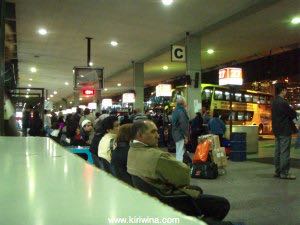
Our Chevalier coach.
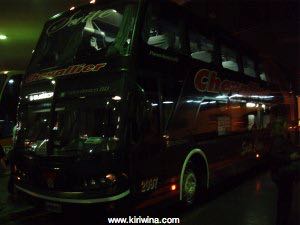
On board awaiting departure.
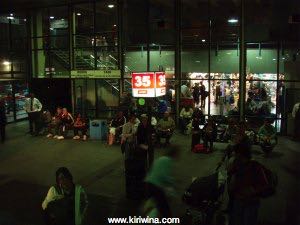
My travelling companion, Gilles.
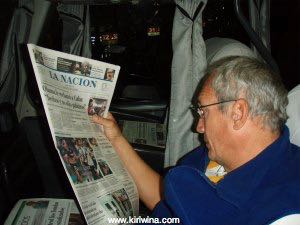
Our route will take us south and west through the suburbs of Buenos Aires, Mercedes, Chivilcoy, Pehuajo, Santa Rosa, Caranche, Casa de Piedra, General Roca and on to Neuquen.
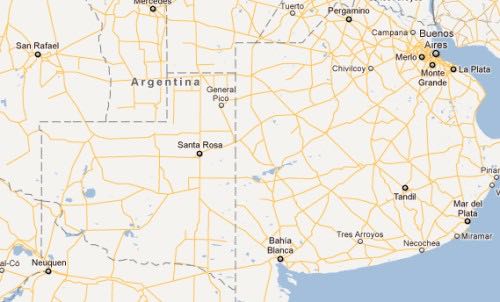
Delta Rowing Trip
After 14km of rowing I had lunch at the Alpenhaus restaurant. An Austrian restaurant with some rooms tucked away in the middle of the delta.
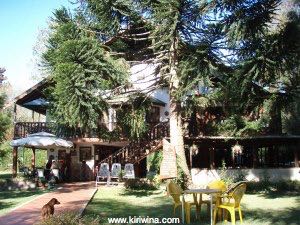
Sadly the restaurant charged like wounded bulls for not a lot of food. The location was lovely though.
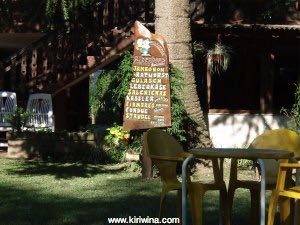
They just had to have one of these.
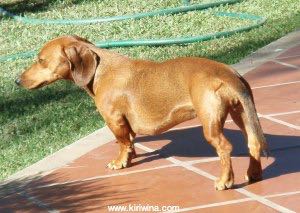
View from our table.
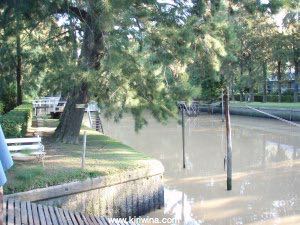
This path ran through the grounds but I never saw the bridge.
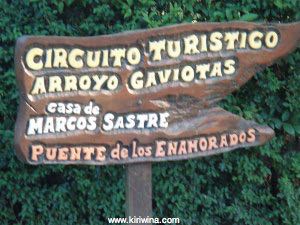
The rowing boat. They are quite fast if one gets the rowing technique right but are a tad unstable so care is needed when moving about the boat. Generally traffic in the delta slows for rowing boats but not always. With a heavy wash, particularly in shallow water, they can ship a lot of water quite quickly.
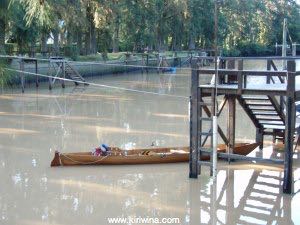
The route covered 24km and took about 7.5 hours with a lunch stop.
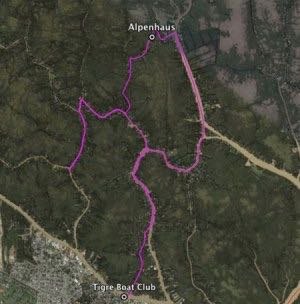
More Berth Hunting
My Suzuki 2.2hp completed the round trip of about 12km but not without the old problem of refusing to run properly when hot. We got back though. After the motor was restarted it would splutter along for 5 or ten minutes and then start to run normally albeit with reduced power.
Success this time with a tranquil little Club Nautico on the opposite of the Rio Lujan about half way between Tigre and San Fernando.
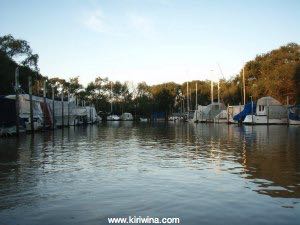
Free Moorings
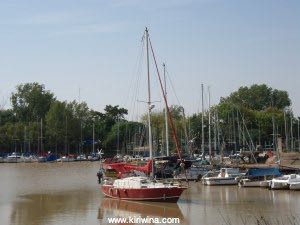
This little plaque was tacked away near the station in San Isidro. It struck me as slightly odd that the King of Spain would be doing this.
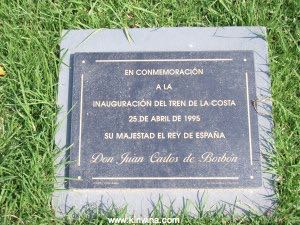
Mobile Phone
I was on the Personal network and wanted to get a replacement SIM. Their office being closed for Semana Santa I bought a Movistar SIM for A$10 and topped it up with A$20. SIM cards are very cheap here but calls gobble credit at a rate which I find hard to reconcile with published tariffs.
Back to the boat where I spent a lazy afternoon on the aft deck reading Dreaming of Jupiter by Ted Simon. He rode a Triumph motorcycle around the world 1974 and, aged 70, decided to do it again in 2001.
San Isidro - Old Port
Anyway, I motored down to the old port at San Isidro where Menkar is moored. The port used to be the main import terminal for Uruguyan sand but silted up and is now occupied by a selection of Club Nauticos.
Shallow parts around the old terminal with derelict crumbling quays are used for free mooring by a small community of mainly aging boats. Several berths are obstructed by sunken yachts.
On the way back I managed to drop my mobile phone into the Rio Lujan. Quite how I am not sure but it has gone.

next
Rowing in the Tigre Delta
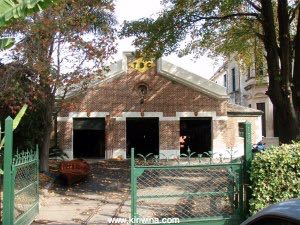
I've done a lot of rowing over the years but never in a boat like this. The oars are very long with the handles overlapping. Technique is everything and I had little of it. Things got a bit tangled up at times but after a few hours I improved a bit. Much more practice is needed.
These boats are surprisingly fast and are a tranquil way to wander about the smaller waterways in the delta which are quite lovely in places. On the larger waterways one is frequently passed by fast boats which usually, but not always, slow down. Either way it is necessary to stop rowing and feather the oars until the wash subsides.
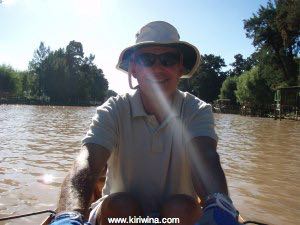
Passing Sarmiento's house, again.
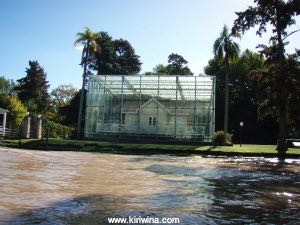
Dinghy Repaired An excellent job. Thanks Maria.
Maria had waited on the seat strops because replacement necessitated a change of colour from the original and she wanted my approval.
New seat strops.
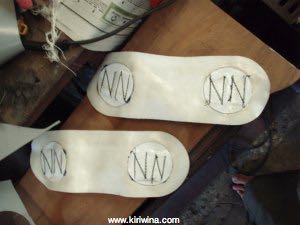
This done the new strops were quickly fitted and with the dinghy now in better than new condition Maria took me and the dinghy back to CNV with instructions not to use the dinghy for at least 24 hours.
In addition to new seat strops the rubbing strake was re-glued in places and a reinforcing strip of PVC added to the underwater hull at the stern.
An excellent job. Thanks Maria.
Berth Hunting - Tigre
We cycled up to Tigre where Gilles had heard there were reasonably priced moorings available. One small problem emerged when we got there. The moorings were on the other side of the river and it was not immediately apparent how to get there.
Just near the Italian Rowing Club
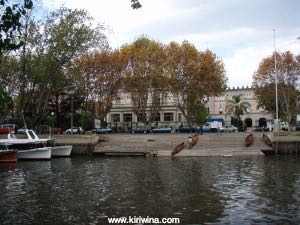
There was a small dock used by locals to moor their boats while on shopping trips. Gilles talked one of them into taking us across. With a large amount of mission creep this turned into ferrying us around for about two hours.
First stop was Tigre Sailing Club across the Rio Lujan from Tigre and quite exposed to wash. I didn't like the look of it although four French ocean going yachts were moored there. The facilities seemed basic and a good deal of wash entered the moorings causing boats move about quite violently.
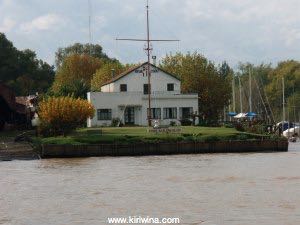
Our ferryman, Alfredo, had to go home to drop off his shopping. This took us into small tranquil waterways off the day trip routes and very secluded.
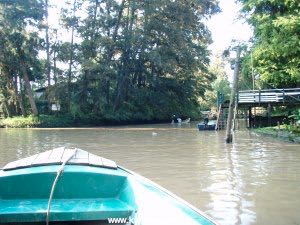
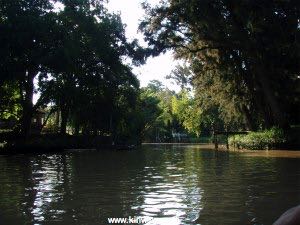
Alfredo's house in the delta...
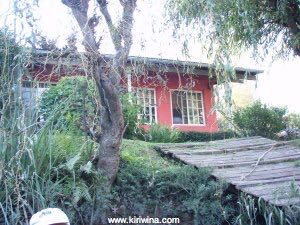
...and his dock.
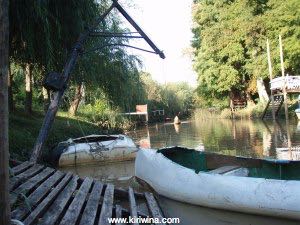
Not quite sure what this is. Some sort of house I think.
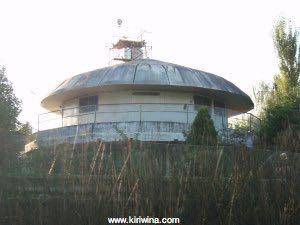
Rio Sarmiento
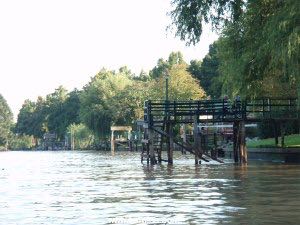
A private beach on Rio Sarmiento.
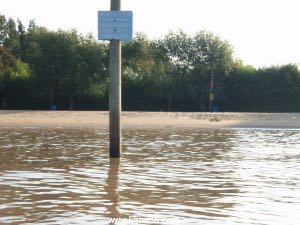
Next stop was Amarras Marugo at the junction of Rios Sarmiento and Lujan. This was a nice sheltered spot. Unfortunately they were full but a new boat yard for shore storage and repairs was under construction.
Then we went back out into the Rio Lujan and on to Club Nautico Cinave. A large sheltered facility and reportedly cheap. The facilities appeared very basic and the water, particularly further inside, was very very dirty. Not a place I would want to stay for too long but possibly OK to leave the boat and travel.
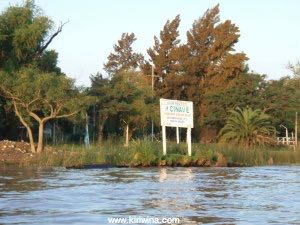
Nothing firm was arranged but Gilles came away with two possibilities. Alfredo dropped us off and refused any payment. Thanks Alfredo.
A Drinking Club with a Running Problem
I was invited along to the bi-weekly running of the Buenos Aires Hash by a skipper who also lives on his boat at CNV. He gave me a lift down to Buenos Aires on the back of his motorbike. We drove most of the way down Libertador with me getting a panoramic view from the pillion.
The Hash is a disparate group of expats and Argentines who go for a run every two weeks. Each run is organised by a different member who also handles the catering arrangements afterwards. A $15 peso fee is collected to help cover costs. Before the run a 10km trail (shorter for walkers and the less fit), complete with false leads and dead ends, is marked with flour.
We set off from Plaza St Martin and ran through Recoleta, fortunately an area I know reasonably well. Everyone ran at their own pace and I kept up quite well despite running in deck shoes which attracted much ridicule. If one is reasonably fit and can run the distance this is a good way to see Buenos Aires.
Out towards MALBA we were passing through a residential area with me following a couple of chaps about 50 yards ahead and not paying much attention to the marks.
I followed them all the way back to Plaza St Martin and was feeling pretty pleased with myself at having run the distance. As we were first back I was puzzled as to what happened to the fast runners. In fact I hadn't run the whole course, only a bit over half of it.
Once everyone got back drinks were served. A detailed post mortem took place and various formalities, including a welcome for new runners, were concluded. As each item was concluded toasts were drunk and songs sung. All in english.
Hash Post Mortem
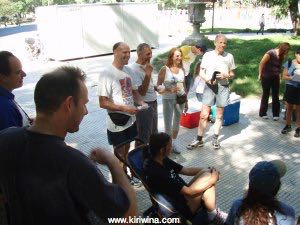
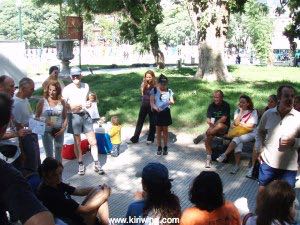
Formalities complete we moved to a lovely apartment overlooking the rear garden of Palacio St Martin which I had visited in July 2008. Lunch was outstanding and if I'm not traveling south I will try to run the full distance next time.
Dinghy in for Repairs
Once there the dinghy was inflated and work started straight away.
Maria using a hot air gun (paint stripper type) to remove a damaged seat strop.
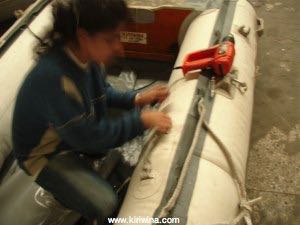
Badly worn seat strop.
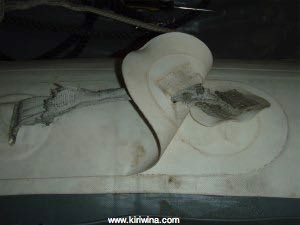
Astilleros Sandokan repair old dinghies and build new ones. They even make their own pumps with which to inflate their dinghies.
I left them to it and they promised to have the work finished next tuesday.
Cooling Manifold Failure
Today I confirmed that the suspected part, a cooling water/exhaust outlet pipe, had indeed failed.
This is a two part pipe. Exhaust gases exit via the inner pipe while cooling water enters via the outer pipe. I had two problems.
The outer pipe had cracked at the weld allowing cooling water to run down the engine into the bilge.
.
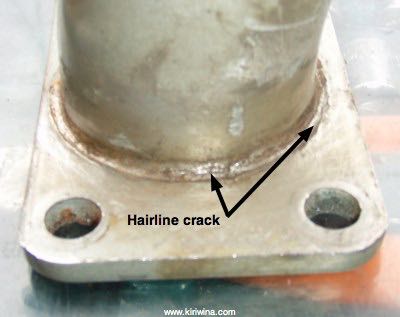
The inner pipe was "pepper potted" to such an extent that water leaked into it and potentially back into the engine. Not good!
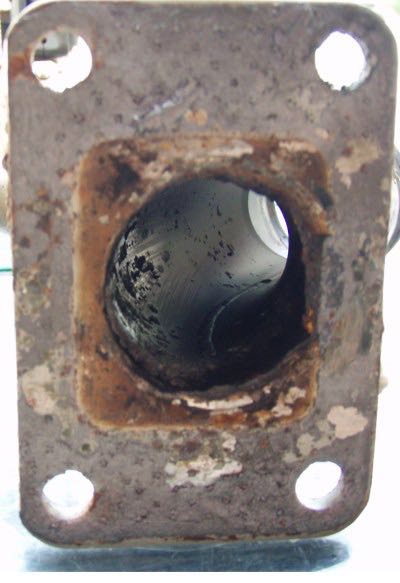
Exhaust manifold showing heavy corrosion from leaking cooling water.
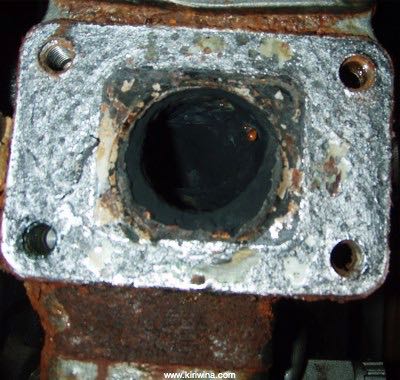
I took the piece down to the local Yanmar importer Regnicoli. They had none in stock and the part would have to be imported from Yanmar in the USA. For this little piece of pipe the price was an eye watering A$1700 (£320).
Talk about captive customers. Yanmar are not known for cheap spare part prices but this seemed ridiculous and I decided to explore alternatives.
Puerto Iguazu
Early morning panoramic view from our front upper deck seats.
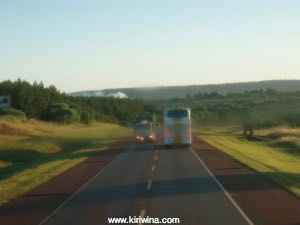
We arrived in Puerto Iguazu around noon. It was hot. Very hot. About an hour later we were joined by Angela, on holiday from England. Within a few minutes of setting off to find a hotel a street hustler suggested we try a serviced apartment.
I was skeptical but in the event it was not bad. Arg$200 pesos per night (Arg$50 each) for a serviced apartment in nice grounds with a pool.
After settling in we walked along the Rio Iguazu.
Argentine patrol boats. This area is popular with smugglers.
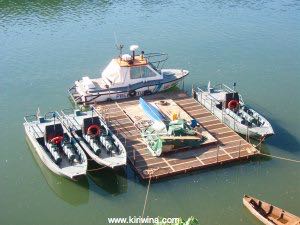
Water levels can rise rapidly. This guage, halfway up from the river, reads 25.8 metres.
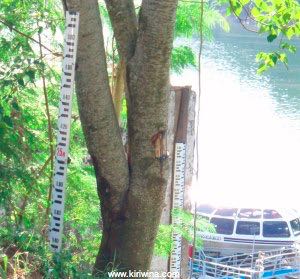
Rock sculptures and murals, Puerto Iguazu.
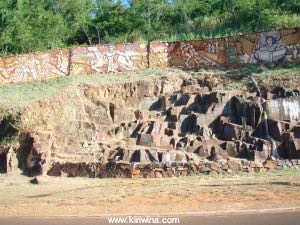
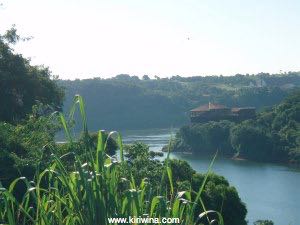
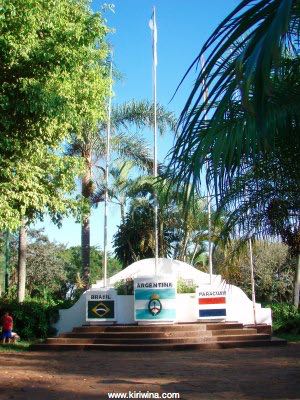
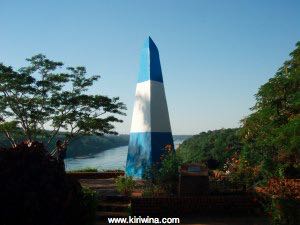
Buenos Aires to Puerto Iguazu
Günter and Gilles aboard our Via Bariloche coach awaiting departure from Retiro bus station.
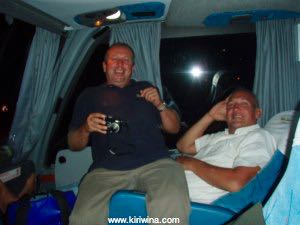
We had booked Super Cama seats which fold almost flat to form a bed. Meals, wine and on board wi-fi were included.
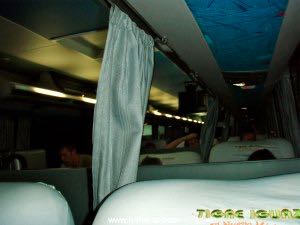
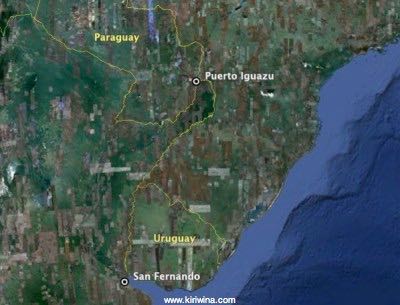
Change of Berth
Looking astern from my new berth.
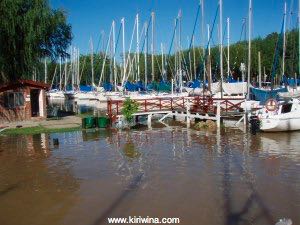
Looking over the bow across VNV grounds to the Rio Lujan.
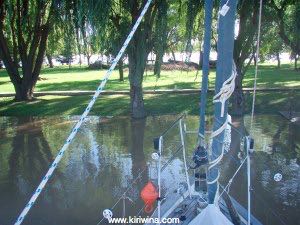
My landing jetty just under water. This is not normal.
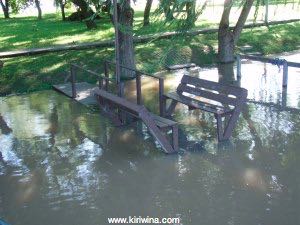
Water levels were high today. About a metre above average.
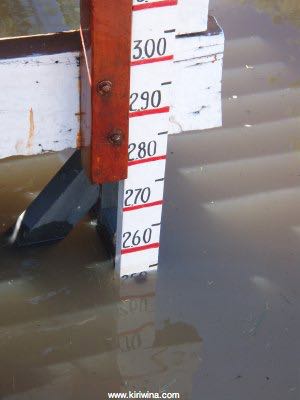
Later I got a call from Gilles on Menkar. His motor had failed in the Rio Lujan. He got a tow from an Argentine boat and found a safe berth.
Puerto Madero to CN Sudoeste
I cycled up to Beccar station, took the train down to Retiro and cycled round to YCA.
Tortoise on the verge at YCA.
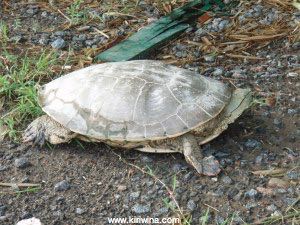
We left just after 10:30.
Schatzi on deck leaving YCA.
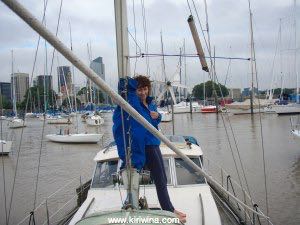
MSC Sinfonia in Darsena Norte.
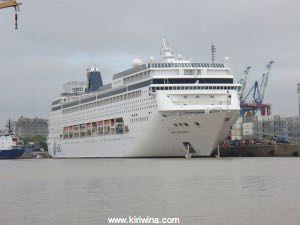
Container ship in Darsena Norte.
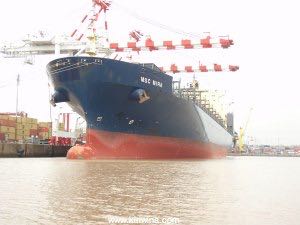
Conditions were almost perfect. We motor sailed on a rising tide with a gentle SSW breeze which died about halfway up. Using waypoints given to me at CNV there was rarely less than 3.0 mtres of water. Much more than when I did this trip in January. No doubt helped by the rain yesterday.
Approaching CN Sudeste after about 2.5 hours en route. It was virtually slack water with a very benign approach.
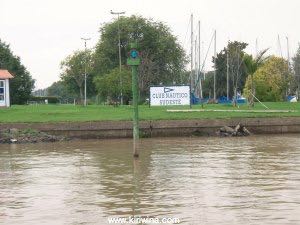
CN Sudeste launch waiting guide us in and assist with berthing.
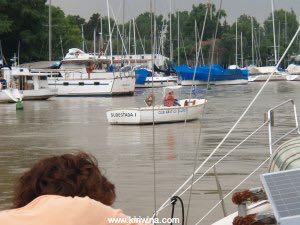
CN Sudeste has a greater variety of moorings than CN Victoria where Kiriwina is berthed. Cora Mae was placed on visitor moorings in midstream.
Afterwards we went for a walk around San Fernando and San Isidro.
Günter and Schatzi at CN Victoria.
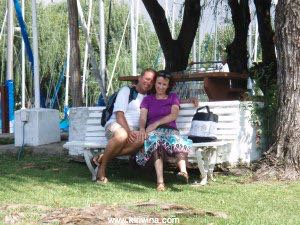
Cathederal and gardens at San Isidro.
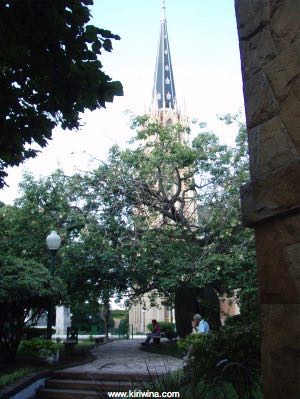
Plazoleta Ospispo Aguirre - San Isidro
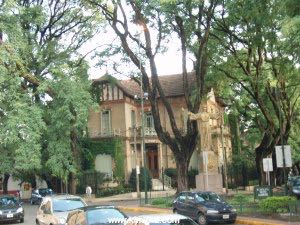
Colego San Juan El Precursor - San Isidro
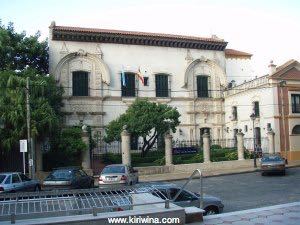
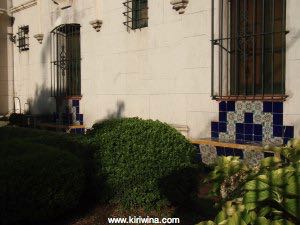
Cathederal Tower - San Isidro
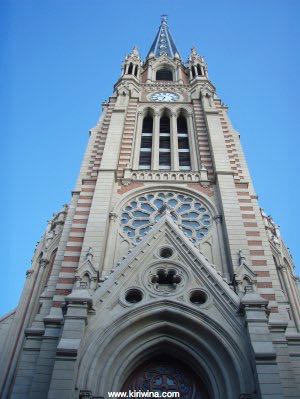
Terraced gardens and park leading to San Isidro Station - Tren de La Costa
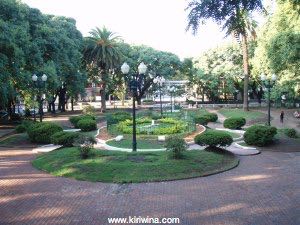
San Isidro Station
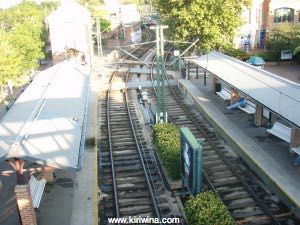
Puerto Madero
En route I needed to top up my mobile. The mobile system in Argentina has a few eccentricities one of which is that credit added is valid for a month after which the network cannot be accessed, even to add credit via a prepaid card. Unused credit is not lost but cannot be used until more is added. My month was up so the only way to add credit was to find an over the counter top-up retailer.
I went down to Puerto Madero but the British built swing bridge had malfunctioned in the closed position so no boats could enter or leave Puerto Madero. Günter had diverted into YCA.
Schatzi with ant in Centro Cultural Borges.
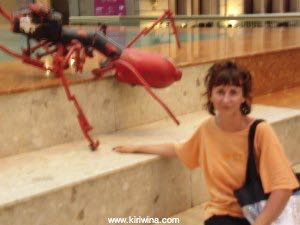
We ran a few errands up town before returning to Puerto Madero and dinner at Cabaña Las Lilas.
This was quite the place. They charged like wounded bulls (A$27 for a potato) but the food and service were very very good. Their main business is breeding and raising beef cattle and the restaurant is a showcase for their products.
Not a spot for eating every day but very nice once in a while and certainly the best beef I've had in Argentina
Günter and Schatzi, er, conversing.
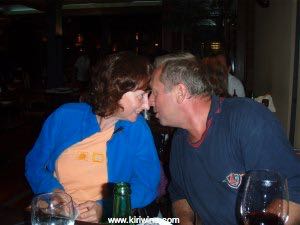
Rio San Antonio
Skipper Dario (at centre) was joined by the Fredes family and friends making a total of 10 on board. GOYO is a Genesis 387 with two powerful Mercruiser engines.
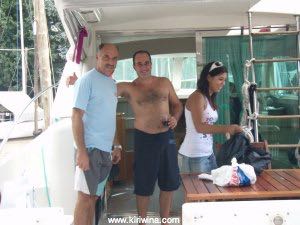
Kiriwina looked quite small from the flying bridge on GOYO. It was quite a change to view the world afloat from a height of around 4m compared with around 1m on Kiriwina.
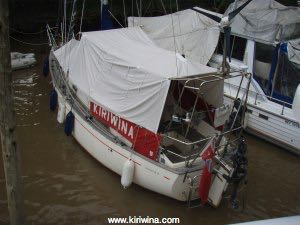
We left CNV around 13:00 as dark clouds gathered on the horizon. GOYO spanned the gap between two rows of moorings but Dario easily worked her round.
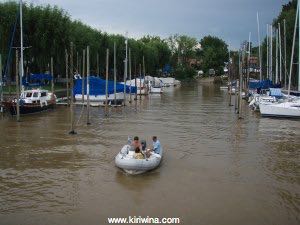
Passing Yacht Club Argentino (Norte). Long thin dark clouds indicate an imminent thunderstorm.
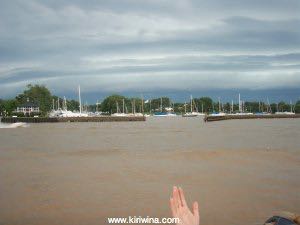
Just as in Spain bikinis tend to gather on the foredeck.
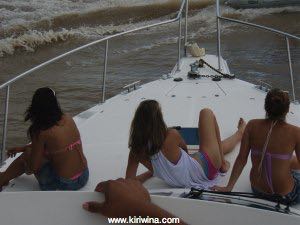
A very fast rib piloted by Ricardo coming alongside to pass over some gear.
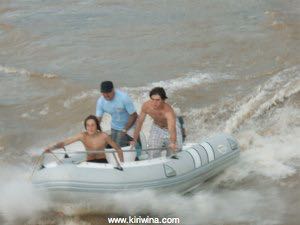
Looking back towards Rio Lujan and a constant stream of boats.
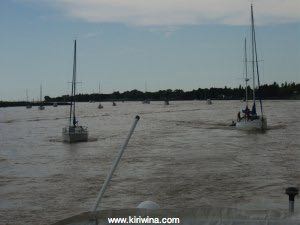
View from our anchorage in a very busy Rio San Antonio. There were boats of every size and shape with those under way having to pick their way through a multitude of anchored boats. Buenos Aires, about 25km away, is clearly visible in the background.
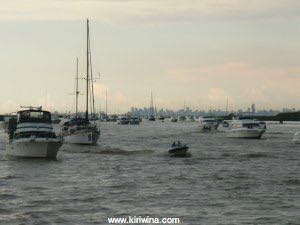
It was quite shallow, around 2.5-3m with a brisk current around 2-3 knots. Dario streamed a long security line with lifebuoy for the swimmers to hang on to. The water was warm but care was needed in the strong current.
Goyo at anchor. Rio San Antonio.
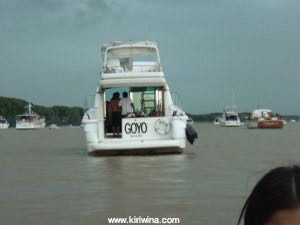
Then the rain came. Lots of it complete with thunder and lightning.
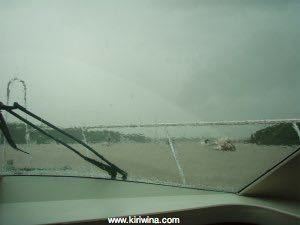
The rain was warm as well so everybody continued swimming.
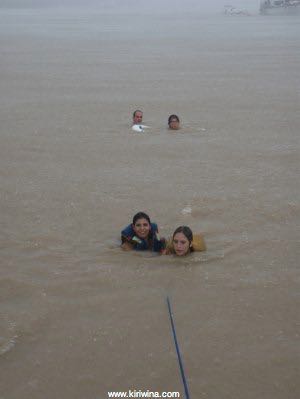
In between rain squalls the sun came out and throughout the afternoon Gabriela kept everyone well fed. Thanks Gabriela.
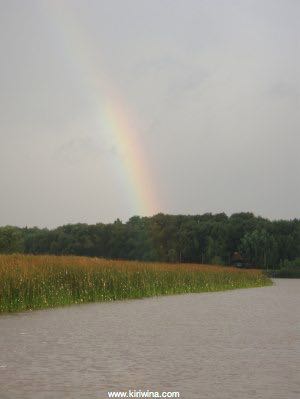
So far as I can gather there are no speed limits in the delta. However passing too close to anchored boats at speed attracts a chorus of whistles and obviously inconsiderate or dangerous navigation could lead to a conversation with the Prefetura who maintain a very high profile with four boats scattered along our four mile route.
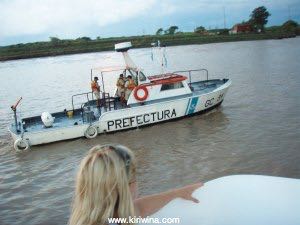
Our route. There are very shallow banks near the junction with Rio San Antonio.
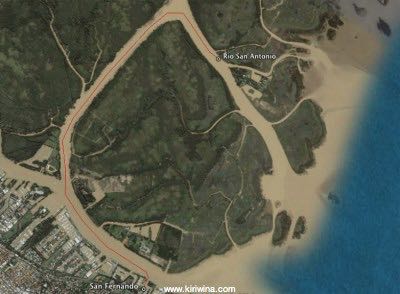
Back in San Fernando Dario cooked up another parilla after which I got to bed around 01:30. It was a lovely day. Thanks Dario, Gabriela and Ricardo y todos for your hospitality.
Colonia to Buenos Aires
Approaching Colonia yacht harbour.
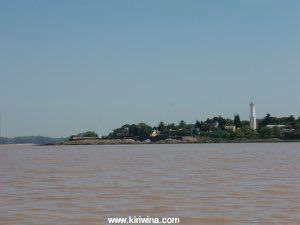
We picked up a mooring and took a water taxi ashore. Our sole reason for stopping was to clear out of Uruguay and have our passports stamped. This had not been possible in Buceo.
View from our mooring in Colonia.
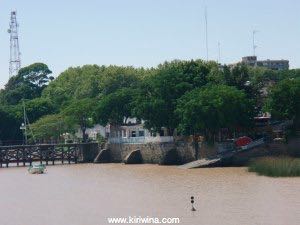
The main quay at Colonia.
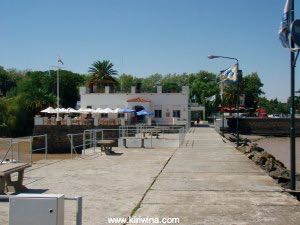
It was a lovely day and Colonia seems a very pretty spot..
Various views from around the town
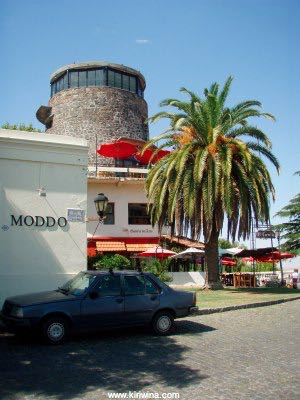
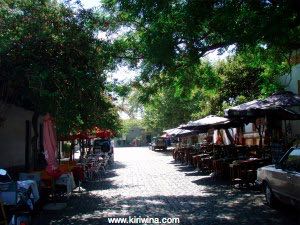
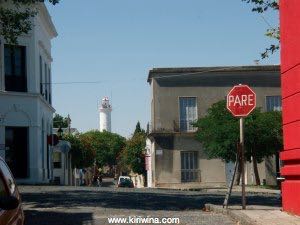
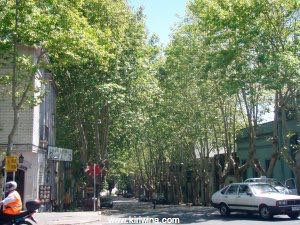
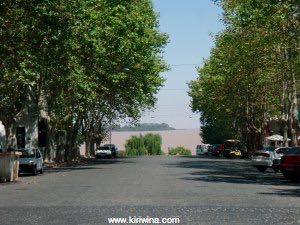
After getting our passports stamped we cleared out with the Prefectura who are based on what looks like an old WW2 US Navy tug. The Prefectura dog was very athletic.
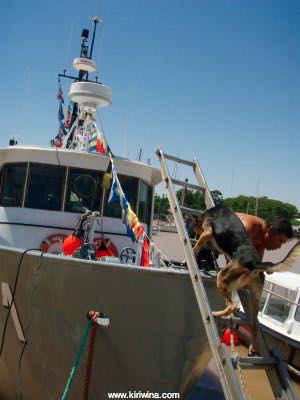
Then we dropped the mooring and were on our way.
Lots of insects en route.
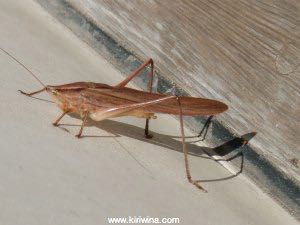
High speed Buquebus ferry from Colonia to Buenos Aires.
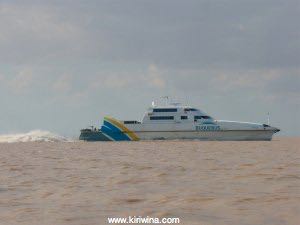
Late afternoon arrival at Puerto Madero in Buenos Aires. The swing bridge is just opening to allow access to Yacht Club Puerto Madero.
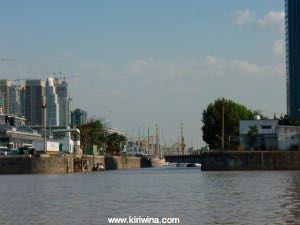
Outbound yachts leave first.
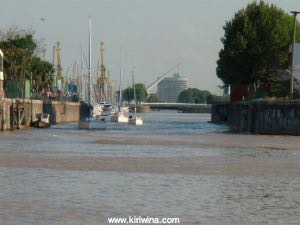
We then berthed without any problems.
A tranquil Puerto Madero from the yacht club service launch.
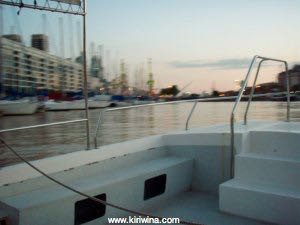
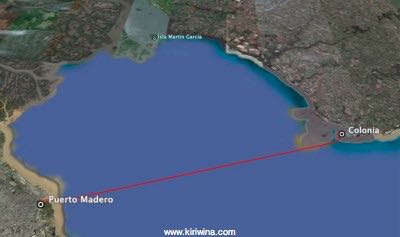
San Fernando to La Paloma
I was a bit concerned about Kiriwina on her mooring given the big changes in water level recently. We shall see.
Left CNV at 06:40 a 30 min walk up to Victoria station and after a short wait caught a train to Tigre where I arrived at 07:30. Baggage is checked onto the Cacciola ferry and the boarding queue was quite long. It was raining with strong SE winds before departure at 08:30.
It was a comfortable and fast trip across to Carmelo where we arrived at 10:50. Lots of Argentine boats on Hidrografia moorings along the bank of Arroyo de las Vacas in Carmelo
Ageing ferry dock in Carmelo.

More moorings near the old swing bridge.
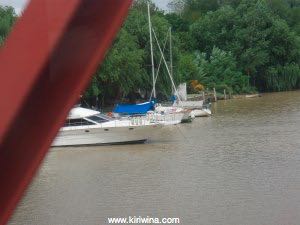
German built swing bridge at Carmelo.
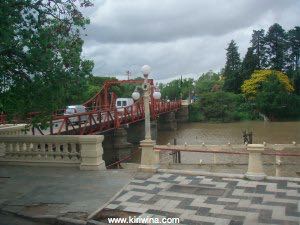
After about an hour the bus to Montevideo arrived. There were frequent heavy rain showers.
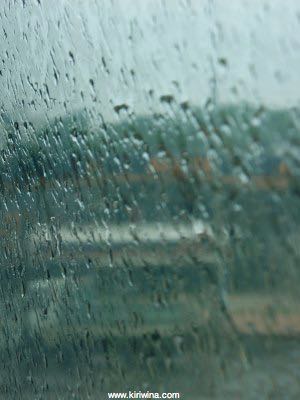
Montevideo en route to the bus station.
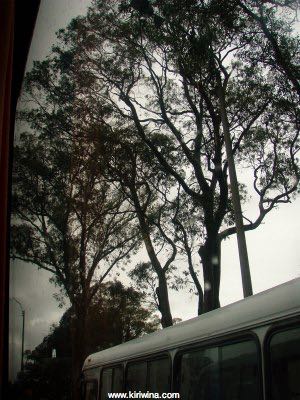
The bus was 30 minutes late in arriving at Montevideo at 15:00. I missed my connection and the next bus to La Paloma was not until 18:00.
En route Montevideo/La Paloma passing a new terminal being constructed at Montevideo's Carrasco airport.
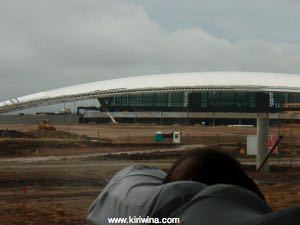
Frequent heavy rain en route to La Paloma where I arrived at 21:10 and took a taxi down to the dock to meet Gunter on Cora Mae. He wasn't there. Another taxi back into town where I found him in a cafe.
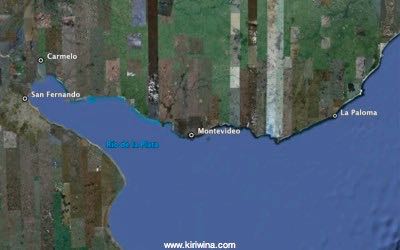
Australia Day
It was mostly gringo backpackers but quite a few Argentines and assorted other gringos showed up as well.
The organiser had obtained supplies of Australia's national dish, vegemite. Bread and vegemite were duly offered to all Argentines and other non Australians all of whom were photographed while they tasted this wonderful food.
Reactions were mixed with not all fully appreciating the unique culinary experience on offer. These photos must be somewhere online but I've yet to find them.
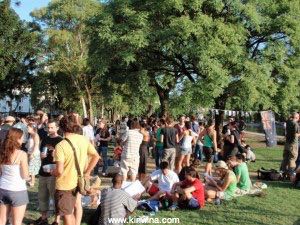
Around 21:00 the park was closed and I went off to dinner with Neil from Australia, Antonio from Buenos Aires and another chap from New York.
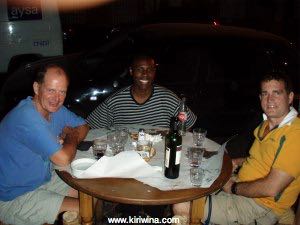
For the second time I got the number 60 bus back to San Fernando. This time I stayed awake and got off at the right stop.
Broken Spoke

Unsure whether it meant don't cycle on the road or on the footpath I asked a policeman who confirmed the former. He said Libertador was very dangerous for bicycles.
Once in Tigre while enjoying a juice from Distruta la Fruta I noticed a spoke had broken on the back wheel. No problem. Delta Cycles in Tigre would have it fixed by Friday.
A Little Flood
My mooring lines were bar tight, extremely tight, despite being slacked off last night. The bow line being tight enough to trim Kiriwina by the head. The water level was now very high and starting to cover paths and recreational areas.
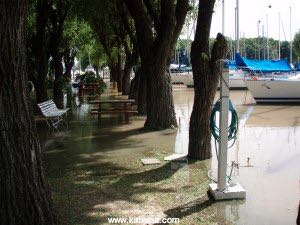
I rowed around to check the tide guage. It was 2.6m and rising. Wow!
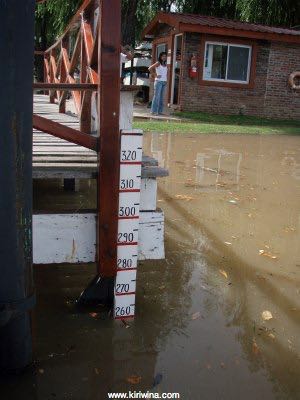
My trusty Brompton had it's second dunking in two weeks.
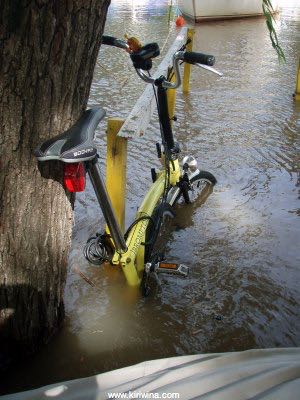
This is the picnic recreational area bordering the river Lujan.
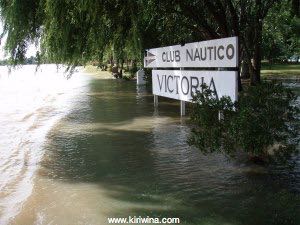
The same spot two weeks ago.
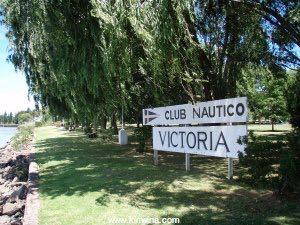
Kiriwina on her mooring. The yellow pole marks the normal shoreline.
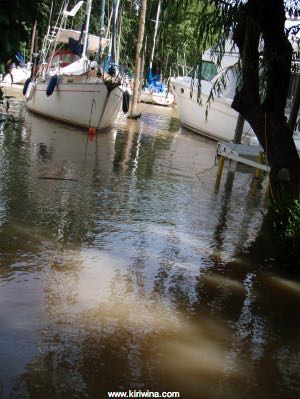
Entry breakwater submerged.
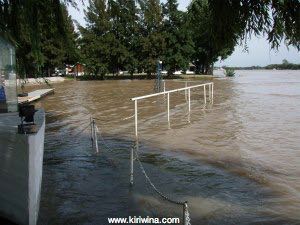
Eventually the tide reached 2.75m making a range of almost 3m over 24 hours compared with a predicted range of around 0.8m.
Later in the afternoon a very strong ebb was running in the river Lujan against a 15-20 knot SE wind. This produced short choppy seas combined with lots of debris.
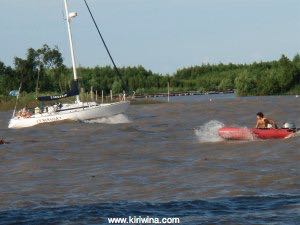
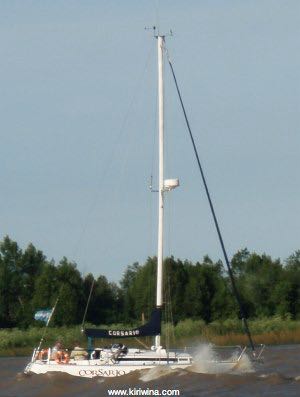
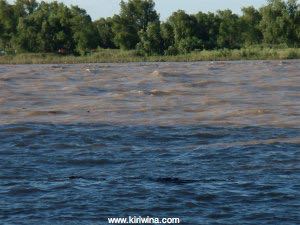
High water debris from this morning.
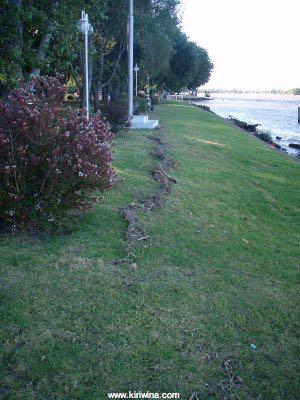
Around San Fernando
It is a very attractive area considers itself the nautical capital of Argentina.

Passing through San Isidro I spotted this sign.

Geddit???
Buenos Aires to San Fernando
The strong winds overnight had eased and by the time I left YC Argentino at 13:25 there was virtually no wind. I took the coastal route exiting Antepuerto Norte to the north.
Northern Entrance
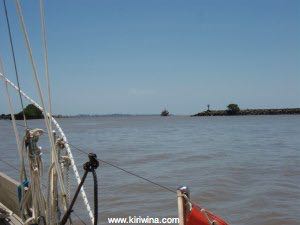
Container berth in Antepuerte Norte.
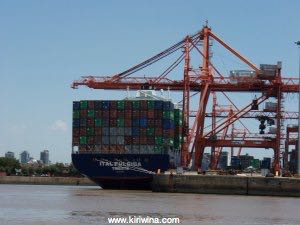
Outer breakwater.
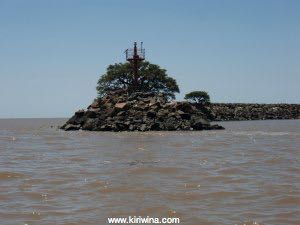
Don Alejandro buoy was left to starboard at 15:40 and the motor turned off. With a brisk SE 15-20 knots it was good sailing with the main and yankee goose winged.
The River Plate has a surreal feel about it. I think it has something to do with the brown water. One is jut not used to large expanses of brown water. The contrast between river and sky is striking.
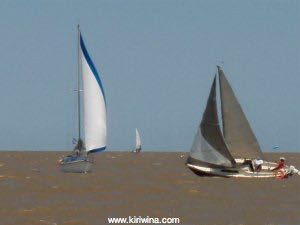
About 20 minutes later the river Plate began to shallow and at 16:50 Kiriwina slowly grounded in soft mud on a rising tide. She slewed to starboard beam onto the wind. I got the sails down and dropped the anchor to bring her head to wind and after a few minutes she was riding easier so I had a cup of tea and waited.
At 17:20 she floated clear and passage was resumed under motor and full yankee. It was like Piccadilly Circus for boats. There were heaps of them in a gloriously chaotic muddle. Boats running, boats tacking, boats anchored with people swimming in the fairway, boats motoring into the wind, boats racing and kids in optimists. Incredible! I've not seen this level of sailing activity since I left England.
Approaching river Lujan.
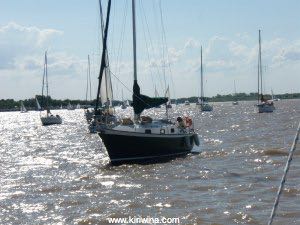
It is replicated ashore with commercial marinas and club nauticos and a truly impressive concentration of servicios maritimos. They can do anything here including building one a new boat.
Kiriwina touched bottom again approaching the river Lujan entrance but after a few minutes she floated clear.
When I got to the club (CNV) I was met by a marinero in a dinghy and escorted to my berth. Basically I have a bow and stern line provided by the club. These hold the boat a few meters off a micro-jetty. There is shore power, water and wifi all included plus the use of all facilities including excellent hot showers.
CNV moorings.
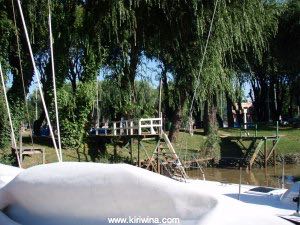
Thanks to Diego and Laura for inviting me over for an asado and some wine. I had a great evening talking about sailing and gleaning lots of local knowledge for trips to Uruguay and the Delta.


